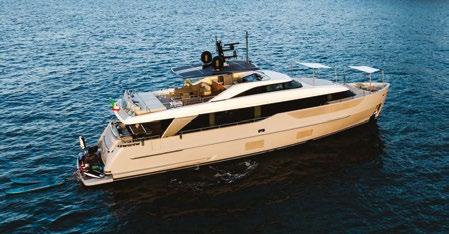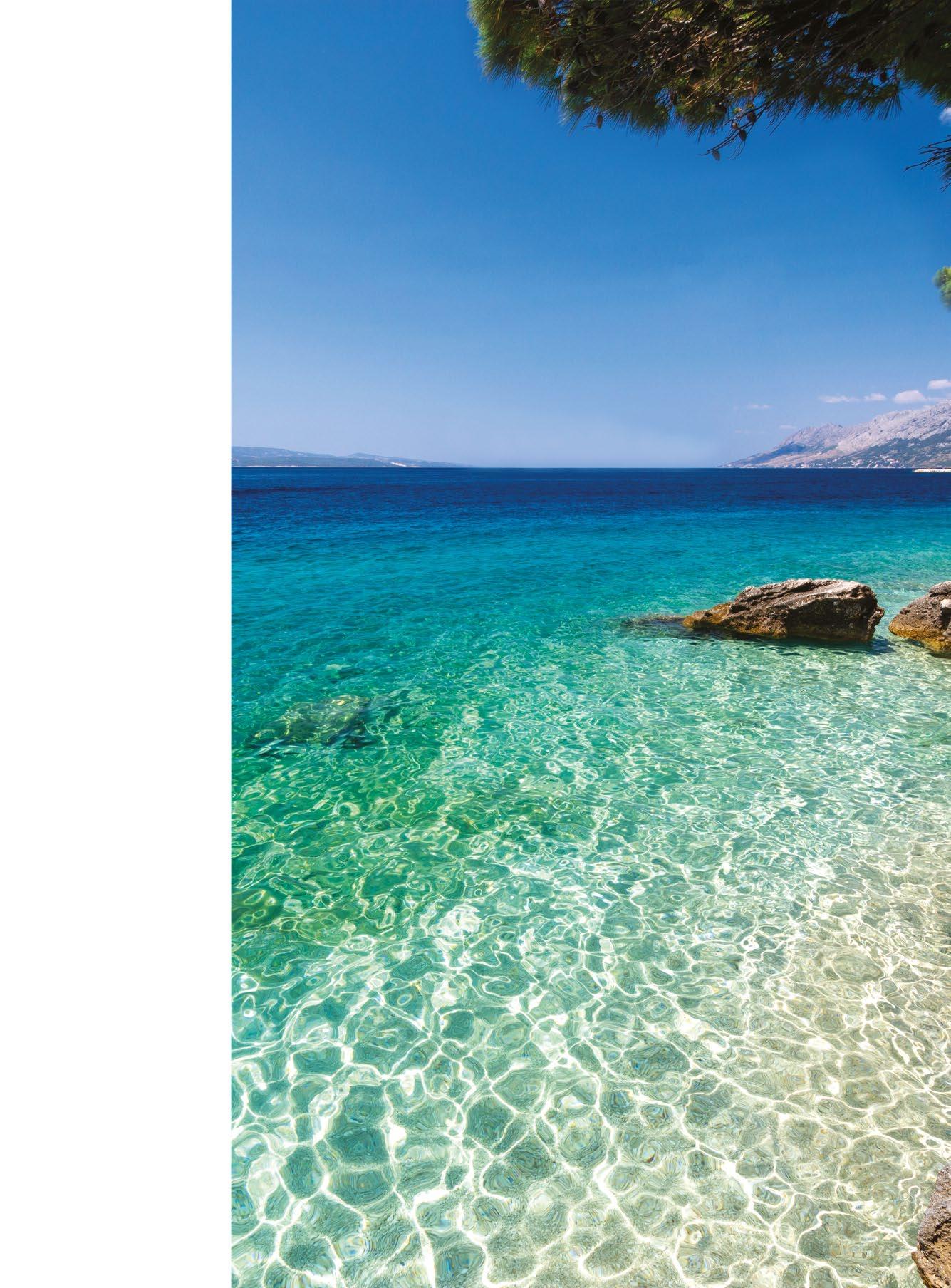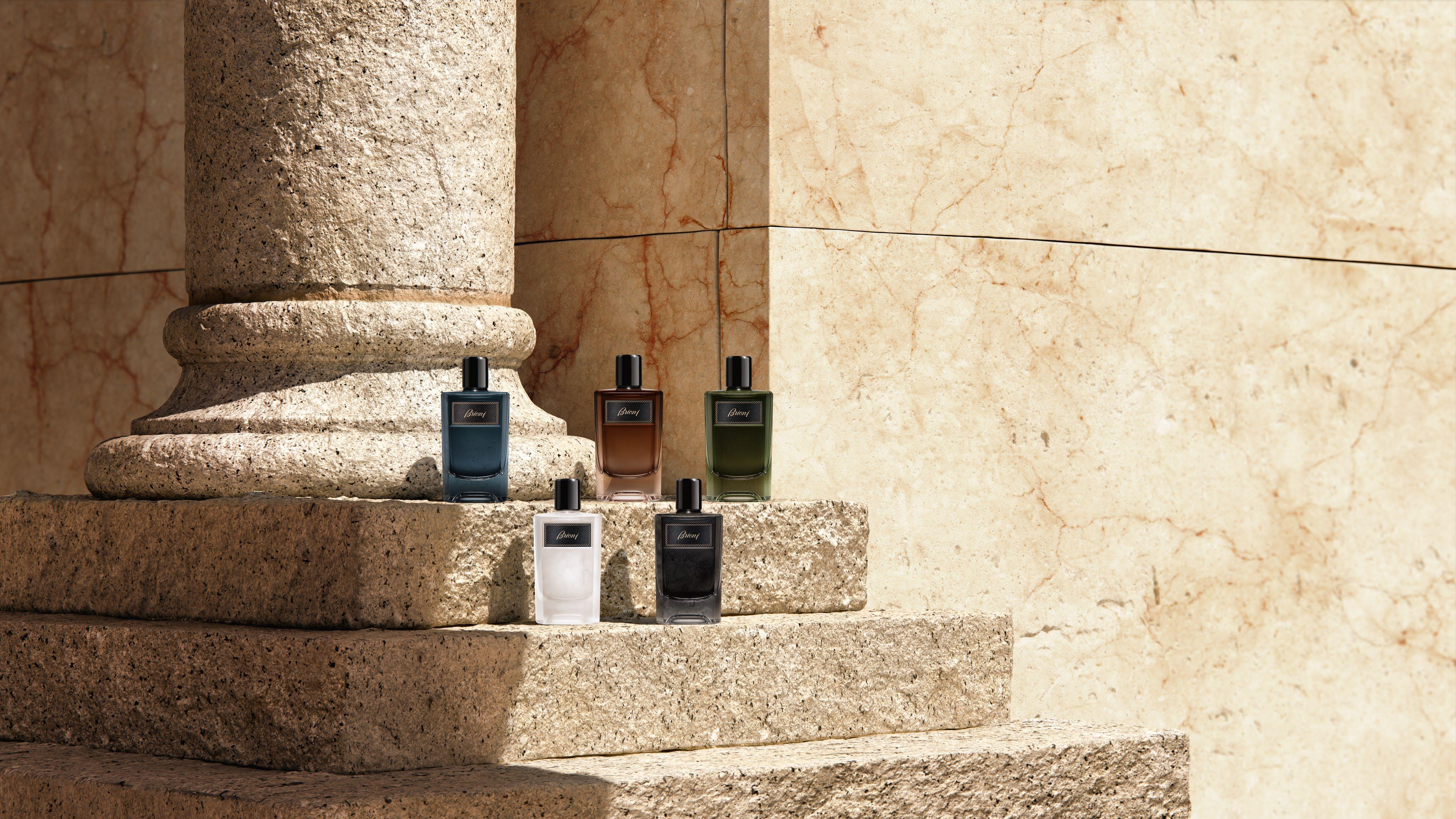







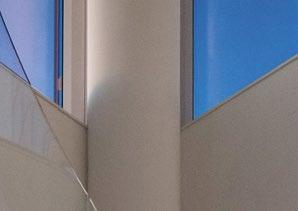










+1-646-629-9669
• reservations@laurenbergercollection.com • www.laurenbergercollection.com
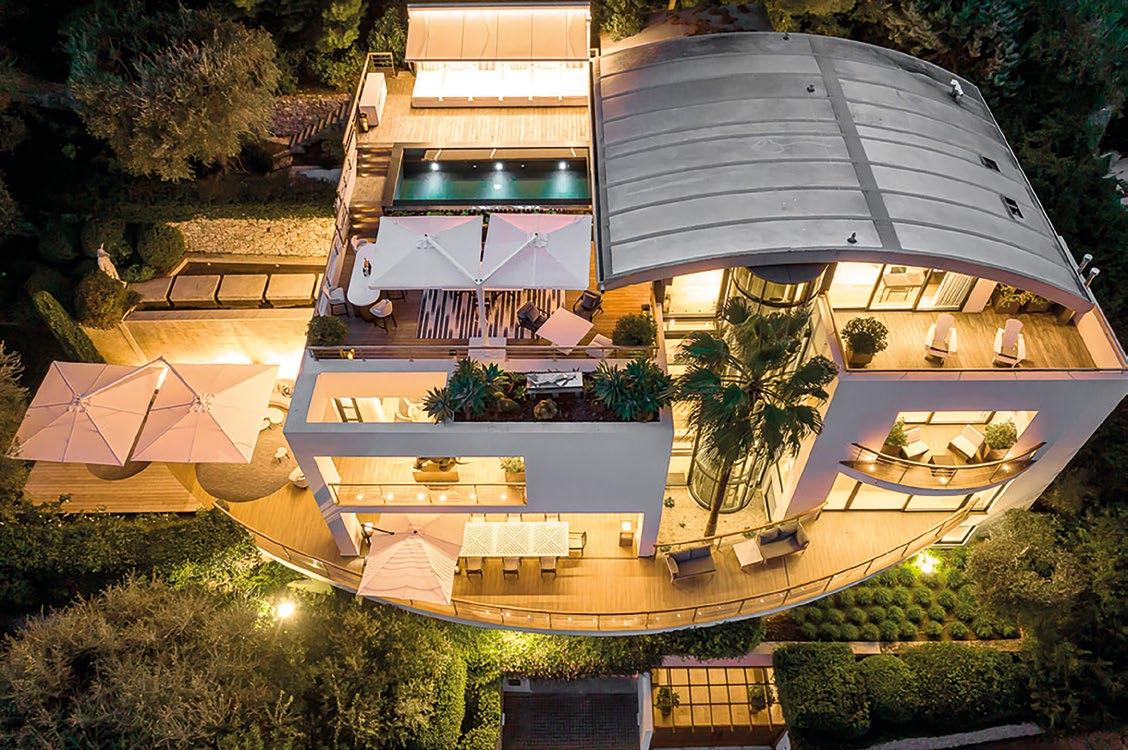






















+1-646-629-9669
• reservations@laurenbergercollection.com • www.laurenbergercollection.com



7 BEDROOMS | 7 BATHROOMS | 14 GUESTS
The Lauren Berger Collection presents Villa O in the French Riviera: a modern, opulent retreat with panoramic sea views, total privacy, and luxurious open-plan living just steps from the village.











Lauret Studio proposes, with all the impassioned of exception, professionals and privates, an exclusive silverware by authors, a poetic and sensual escape, the timeless harmony of esthetics and French elegance.
lauret-studio.eion.co @lauretstudio
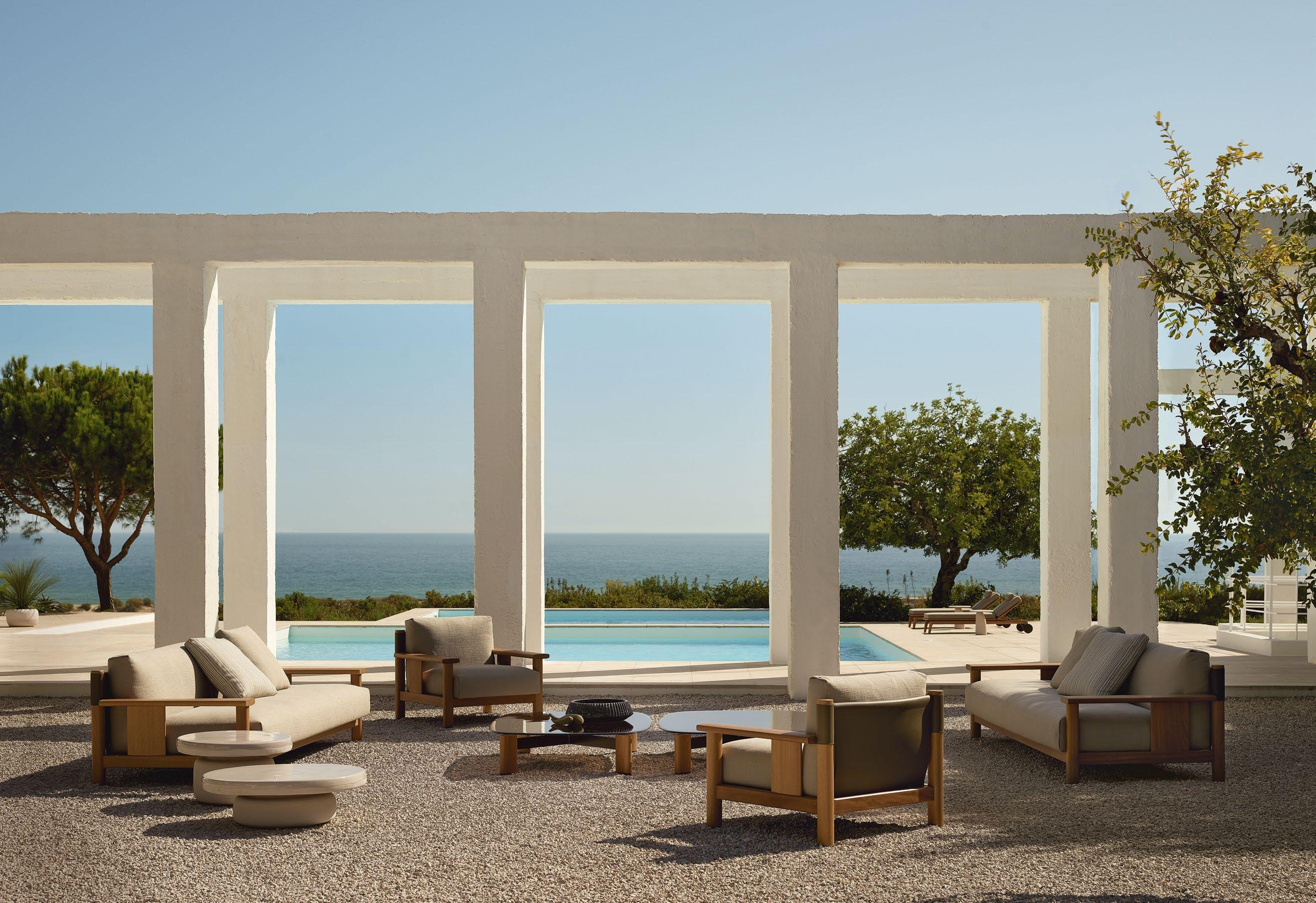





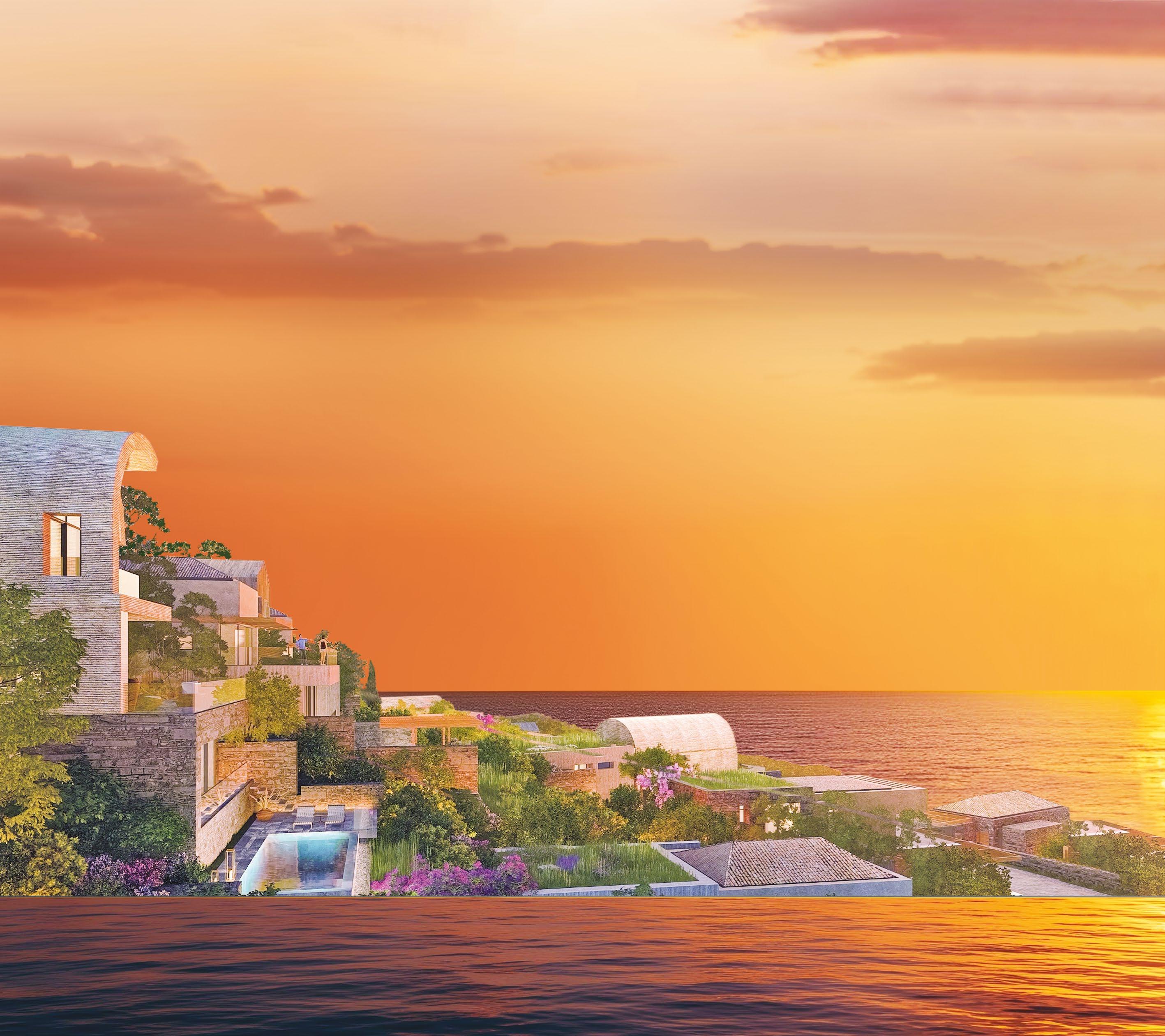

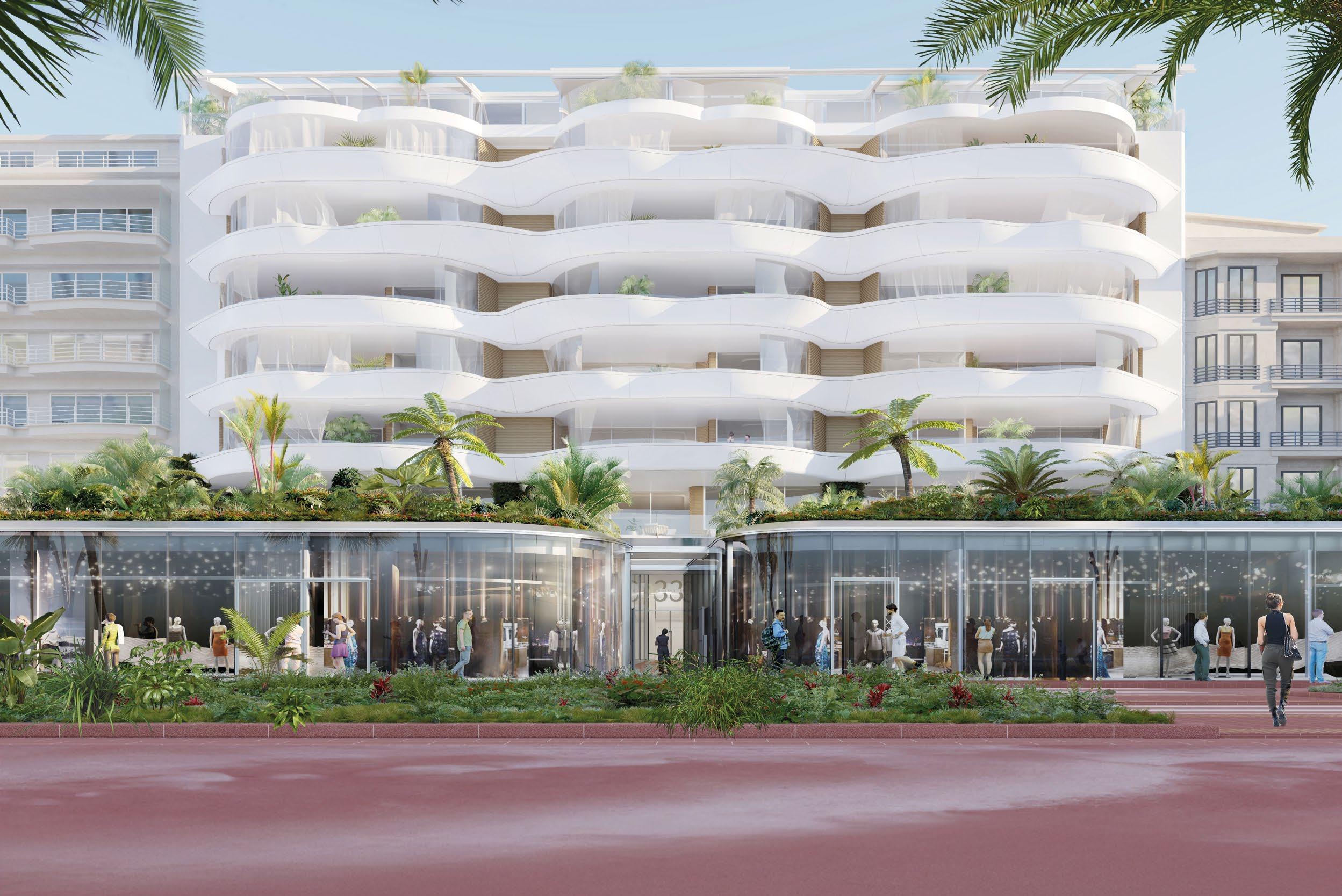






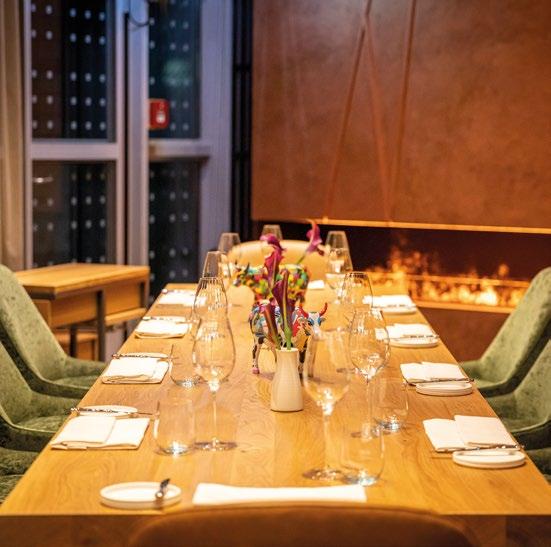
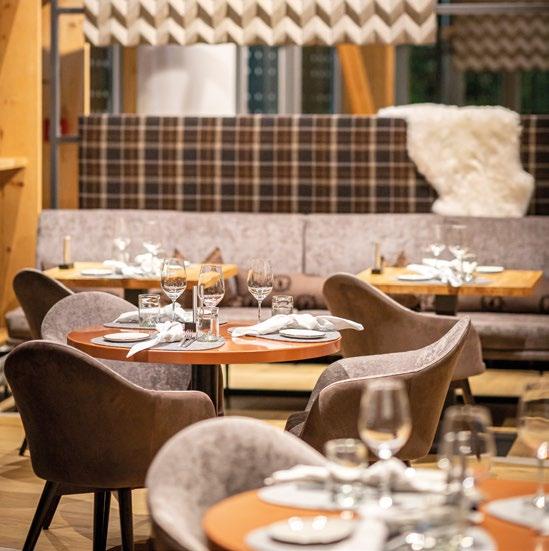
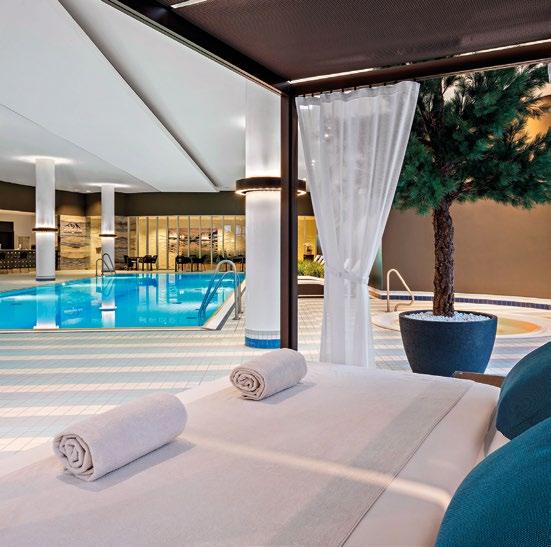
Terminalstrasse Mitte 20, 85356 Munich Airport, Germany
Tel: +49 89 97820 • Email: info.munichairport@hilton.com munichairport.hilton.com




BUILT TO MOVE
A look at the enduring partnership between Pershing and ABYS Yachting—where performance meets poise on the picturesque French Riviera.
AKONI reinvents premium eyewear with an audacious rebranding rooted in Japanese craftsmanship and Swiss innovation.
SIPS OF A CITY
Julius Meinl brings centuries of coffeehouse tradition to the recently reimagined Imperial Riding School hotel in Vienna.
24
28
32
36
40
THE CONSCIOUS CASE
Climate-neutral, celebrity-loved, and seriously goodlooking—meet Paravel, the brand bringing style and sustainability to the luxury luggage landscape.
Heritage, hospitality, haute cuisine—how Prince Robert of Luxembourg has turned his family business in Bordeaux into a global cultural force.
GlobeAir whisks us away to the world’s most soughtafter summer destinations. Think Italian islands and Riviera refuges.
Design-led, experience-forward, and deeply rooted in place—this crop of just-launched hotels is reshaping how and where we travel next.
Mountains or sea? Ultima Collection invites you to have both—on your own terms.
LUXURY LAYOVER
With just 72 rooms and a calm, residential feel, Cheval Blanc Paris captures the essence of the French capital without the crowds.
49
52
56
62
66
68
72
74
HOTEL HOT SEAT
General Manager TJ Joulak shares how Waldorf Astoria Maldives Ithaafushi sets the bar for personalised luxury in the Indian Ocean.
Set to reopen in December 2025, The Ritz-Carlton Key Biscayne, Miami unveils a thoughtful redesign that honours its past while embracing the present.
Regnum The Crown joins Regnum Carya to form a new benchmark for high-end hospitality on Turkey’s sunlit shores.
ROSENGARTEN REVERIE
Wild peaks, warm hospitality, and lakes that shimmer like stained glass—why Carezza remains one of the most beautiful corners of the Dolomites.







Experience the Essence of Greek Luxury... Where Every Voyage Becomes a

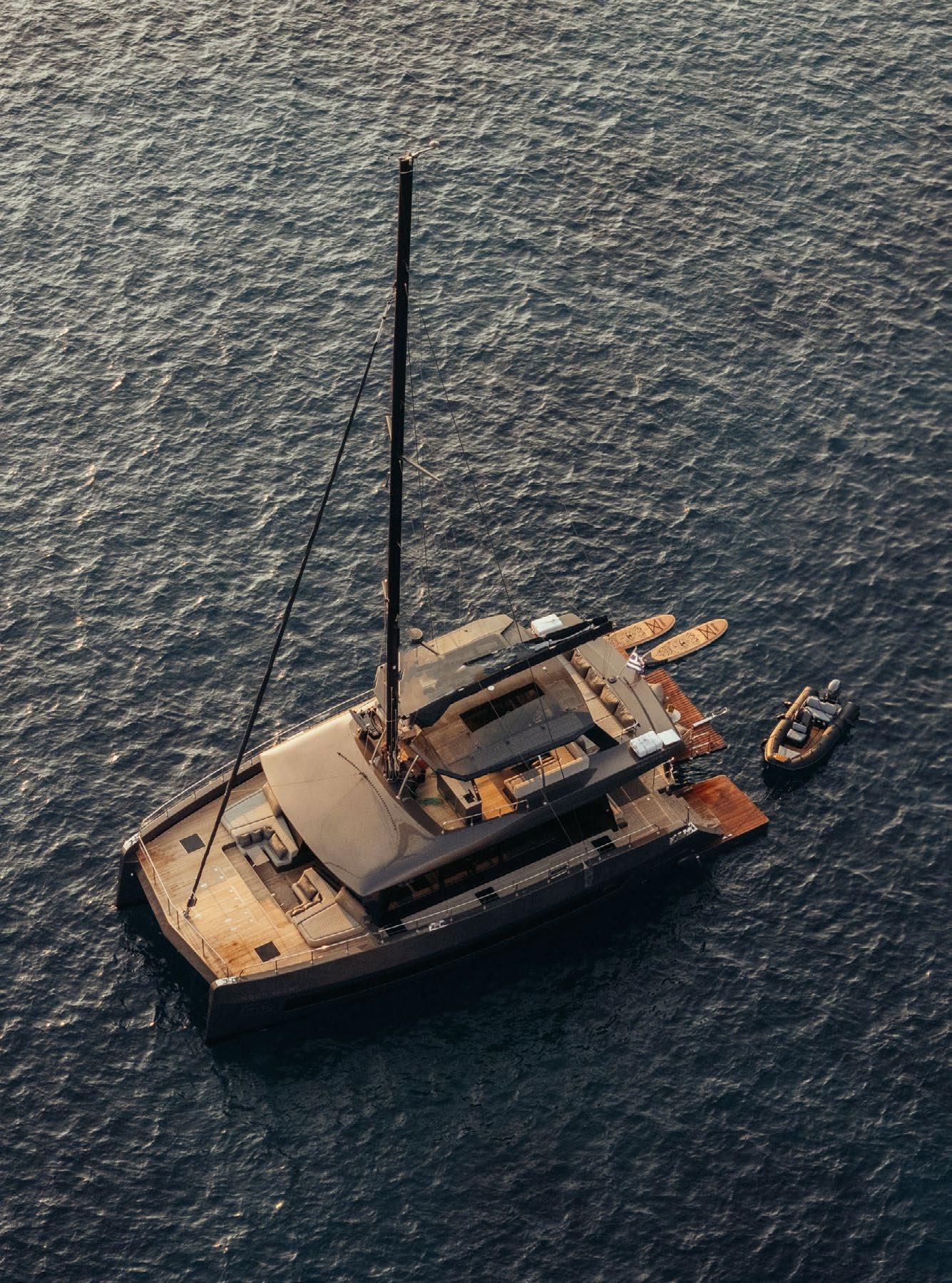








BJÖRN FRANTZÉN
FZN, Dubai, United Arab Emirates
RAMÓN FREIXA
Ramón Freixa Atelier, Madrid, Spain
CHEF SAFARI
82 90 98
Andy Beynon, Chef Patron of Michelin-starred Behind in London, shares his favourite food and drink spots in Los Angeles. 114
ROSINA OSTLER
Alois, Munich, Germany
Sollip, London, United Kingdom 106
WOONGCHUL PARK & BOMEE KI
COASTAL SANCTUARY
Zimbali Estate redefines coastal luxury with a bold vision of nature-first living on South Africa’s North Coast.
FRAMING FLAVOUR
Chosen by the world’s best chefs, Fine2Dine proves that the plate can be the star of the show.
OUTSIDE THE ORDINARY
Handcrafted in Britain, Coco Wolf fuses form, function, and sustainability to elevate outdoor living.
120
124
SELLING THE SUMMIT
From branded residences to year-round experiences, Sheila Hall of Summit Sotheby’s shares why Deer Valley East Village is the future of mountain living.
129
132
136
SILVERWARE WITH FLAIR
Lauret Studio brings sculptural clarity and French craft to the modern table with a new wave of handmade silver cutlery and accessories.




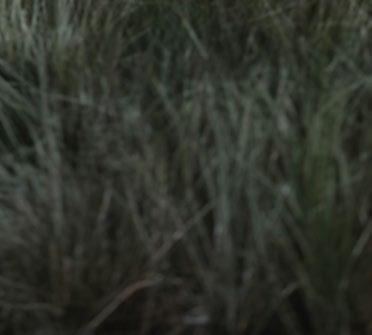



It’s been a standout summer in the UK, with more sunshine and warmth than we’ve come to expect—fingers crossed it carries through to the final stretch. But beyond lazy lunches and last swims, this time of year brings something else, too: a fresh wave of ideas. There’s a certain creative momentum that comes with all that vitamin D, and it’s exactly that spirit—of discovery, perspective, and purposeful living—that shapes this issue.
In our lifestyle section, starting on page 21, we spotlight brands and people who elevate the everyday. Paravel reimagines travel goods with a mind for function and sustainability, while AKONI reminds us that eyewear can be more than a frame—it can be a philosophy. We also meet the man behind Bordeaux royalty, Domaine Clarence Dillon, stepping into a world where fine wine is part of a deeper cultural story. In Vienna, we take a moment to pause with Julius Meinl, where a cup of coffee becomes a conversation with the past.
Our travel section, kicking off on page 45, mirror this sense of considered exploration. GlobeAir makes flying feel effortless again, and an interview with TJ Joulak, General Manager of Waldorf Astoria Maldives Ithaafushi, reveals that the true definition of paradise lies in the detail. From the wild, highaltitude calm of the Dolomites to the easy-going glamour of Key Biscayne, the sun-kissed bliss in Belek, and the city chic of Cheval Blanc Paris, these are destinations that invite us to engage more meaningfully with our surroundings.
In the kitchen, this issue introduces chefs cooking up compelling culinary narratives across continents. In Dubai, Björn Frantzén’s three-Michelinstarred FZN has swiftly become one of the city’s most talked-about tables, marrying Swedish precision with Japanese and French technique. In Munich, Rosina Ostler leads the kitchen at Alois – Dallmayr Fine Dining, where she crafts an elegant tasting menu that balances Bavarian produce with Nordic finesse—making her one of only two female chefs in Germany to currently hold two Michelin stars. Celebrated Spanish chef Ramón Freixa continues to make his mark on Madrid with the opening of a new dual-concept restaurant, while in London, husband-and-wife duo Woongchul Park and Bomee Ki’s Michelinstarred Sollip deliver one of the capital’s most unique dining experiences, inspired by their Korean roots. And for our Chef Safari, Andy Beynon of Michelin-starred Behind takes us on a taste tour of Los Angeles’ best foodie hangouts. Read all about this and more, starting on page 79.
From page 117, our property and design section turns its focus to the spaces that influence how we live and feel. Zimbali Estate on South Africa’s North Coast proves the future of luxury lies in thoughtful design and ecological harmony, while in Utah, Sheila Hall unpacks what makes Deer Valley East Village the most ambitious alpine development to take place in North America in over 40 years. We also hear from Lauret Studio, whose silverwork proves that tradition still has a place at the modern table, and Fine Dining & Living, whose collections have become favourites among chefs worldwide. Finally, we take a closer look at how Coco Wolf continues to blur the line between indoors and out with resilient, beautifully engineered outdoor furniture.
Wherever this issue finds you—soaring through skies, sailing across oceans, strolling city streets, or simply pausing between seasons—I hope it meets you in the same spirit in which it was created: with curiosity, appreciation, and a love for living life to the fullest.
Clarisse Beeby Chief Editor
Don’t forget to stay up-to-date with news, recipes, and features on our website at four-magazine.com or via Instagram at @four_magazine.

Our turquoise waters are your playground. Our pink sand beaches are your haven. Our hidden caves open your eyes to wonder. In Bermuda, strangers greet you like family and the rhythm of life moves gently, freely and with a curious pull of adventure. Find the perfect mix of breathtaking scenery and island hospitality.
Come to Bermuda, and let our story become part of yours.

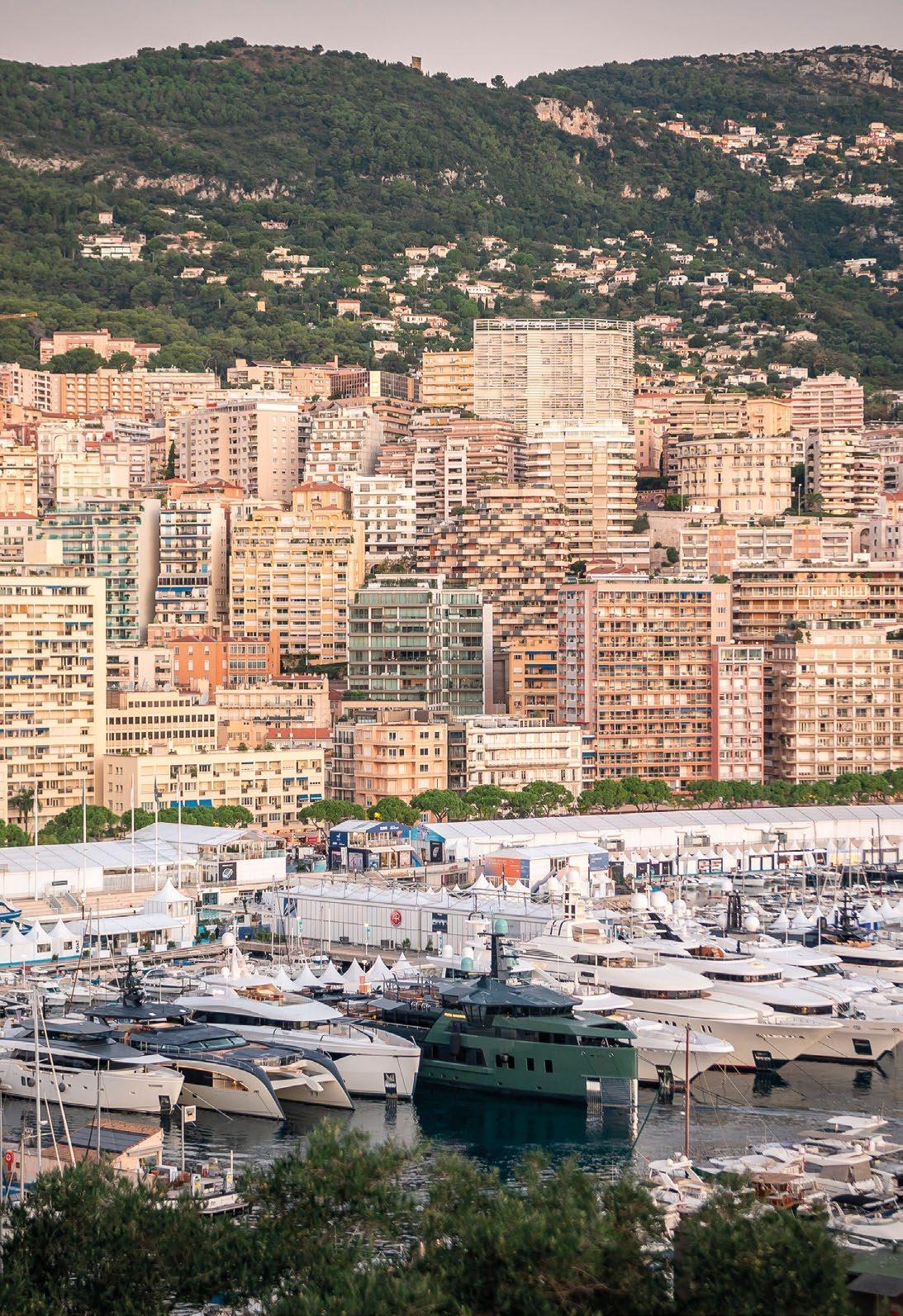




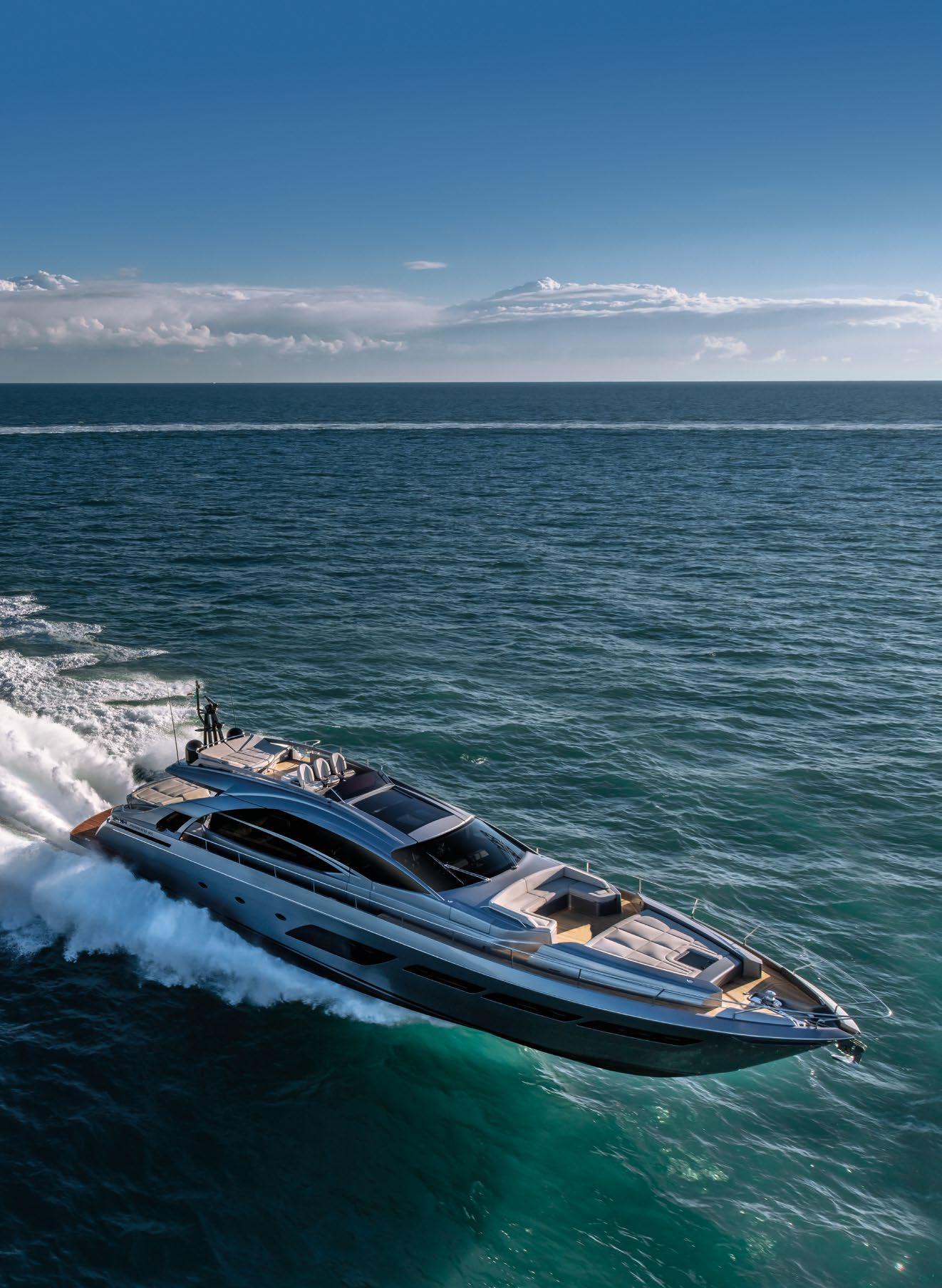
Celebrating 40 years of Italian engineering and avant-garde design, Pershing’s legacy lives on in France through ABYS Yachting.

In the rarefied world of luxury yachting, where design, speed and innovation collide on open waters, few names command the same reverence as Pershing.
Founded in 1985 by Tilli Antonelli with a mission to dominate the sea through uncompromising power and bold Italian design, Pershing has spent the last four decades pushing the boundaries of what performance yachting can be. It’s a legacy that continues to evolve, now under the global umbrella of the Ferretti Group, and one that’s been expertly mastered in France by ABYS Yachting—a partnership defined by precision, passion, and a mutual obsession with excellence.
While many brands strive to leave a mark, Pershing rewrote the playbook. Sleek, sculpted, and built for speed, Pershing’s yachts are not about getting from A to B—they’re about arriving at 40 knots, in unapologetic style. From the iconic 54 and 72 to the new GTX70 each model feels more like a living manifesto than a mode of transport: a statement of intent for those who treat the ocean as their playground.
But every icon needs the right interpreter, and in France, that voice has belonged to ABYS Yachting since 2009. With offices in Antibes, Monaco, and Saint-Tropez—the holy trinity of Riviera glamour—the company has been more than just a sales partner. It has been a translator of vision, a curator of experience, and a gateway into an exclusive lifestyle that lives at the intersection of adrenaline and elegance.
“Being the face of Pershing in France is not just a privilege—it’s a mission,” says Caroline, Head of Marketing & Communication at ABYS Yachting. “We don’t just sell yachts, we transmit a way of life, a unique vision of the sea, a culture of adrenaline and elegance.”
Founded by Victor Sobral, ABYS Yachting has built its reputation on something even more precious than performance: trust. Its approach is holistic and highly personalised, offering everything from financing and registration to refit coordination, yacht management, crew services, and resale customer support. Every transaction
is an entry point into something deeper—a long-term relationship based on attention to detail and a genuine love for life at sea.
Now, as Pershing celebrates its 40th anniversary, this longstanding partnership is entering an exciting new chapter. The milestone is more than just a birthday—it’s a celebration of engineering audacity, aesthetic clarity, and technological evolution. To mark the occasion, a series of exclusive events will unfold across Europe during 2025, and ABYS Yachting, based on the French Riviera, is orchestrating an impressive lineup of private sea trials, VIP gatherings, and design showcases that highlight both the heritage and the future of this legendary brand.
Expect to see past and future models side by side— classics that turned heads in their time, and cutting-edge newcomers poised to do it all over again. There will be moments to revel in nostalgia and others to marvel at the next generation of innovation. Because for Pershing, every look back is also a look forward. »
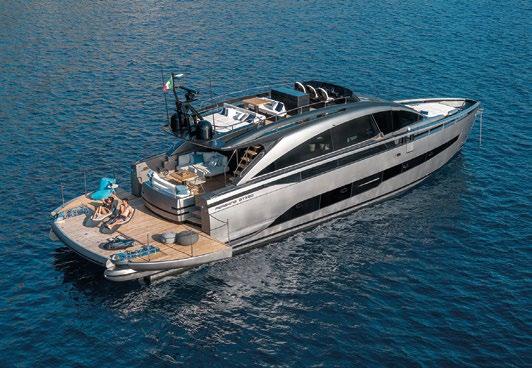

« Nowhere is this duality more apparent than in the design of the yachts themselves. Streamlined hulls meet brutal horsepower. Interiors channel inspiration from automotive and aeronautical design, blending avantgarde minimalism with tactile luxury that feels instinctively Italian. The new GTX Series, for instance, embodies everything Pershing stands for: radical performance, visual drama, and a surprising focus on livability—the kind of evolution that appeals to owners who demand more than speed alone.
Of course, speed is still part of the brand’s DNA. Cruising effortlessly at 40 knots or more, Pershing yachts are built for those who prefer a thrill with their sea breeze. They are also engineered for control, stability, and above all, experience! It’s not just about going fast; it’s about going fast, beautifully.
ABYS Yachting understands this nuance better than most. Their strength lies in not only selling a product but in understanding the culture and expectations behind it. Whether they’re guiding a seasoned yacht owner through a bespoke refit or helping a newcomer choose their first vessel, the team’s approach remains the same: rigorous, respectful, and refreshingly human.
Most importantly, ABYS maintains deep ties with local shipyards, marinas, and major yachting events, including the Cannes Yachting Festival and the Monaco Yacht Show, ensuring Pershing remains both visible and desirable in the most competitive ports on the planet.
This kind of longevity and consistency doesn’t happen
ABOVE Pershing 5X © Alberto Cocchi. BELOW Pershing 8X
A&B Photodesign.
by accident; it is the result of aligned values and shared ambition: Pershing’s vision and velocity paired with ABYS’s fidelity and care. Together, they’ve created more than a sales pipeline—they’ve built a cultural bridge between Italian craftsmanship and French savoir-faire, a meeting of minds and coastlines.
What does the future hold? Hybrid propulsion, new materials, next-gen onboard tech—innovation is already on the way. With ABYS Yachting at the helm in France, the brand is poised to navigate the next era with the same bold clarity that launched it in 1985.
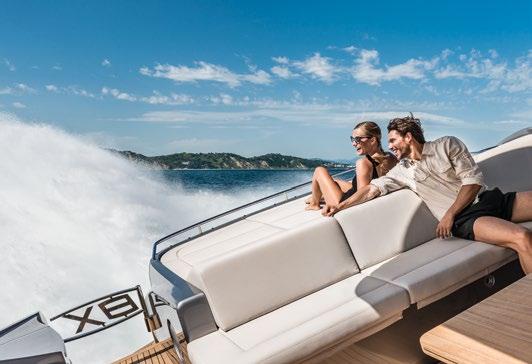




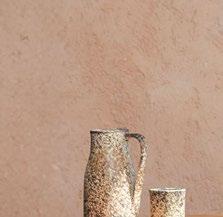



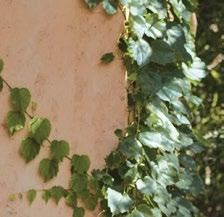











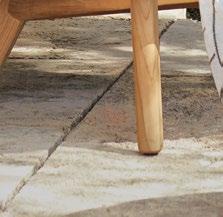
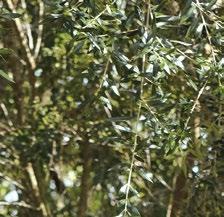

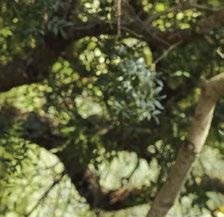
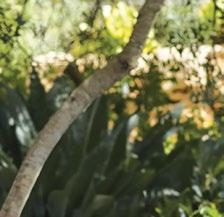









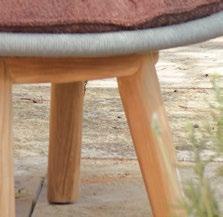




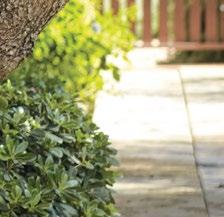


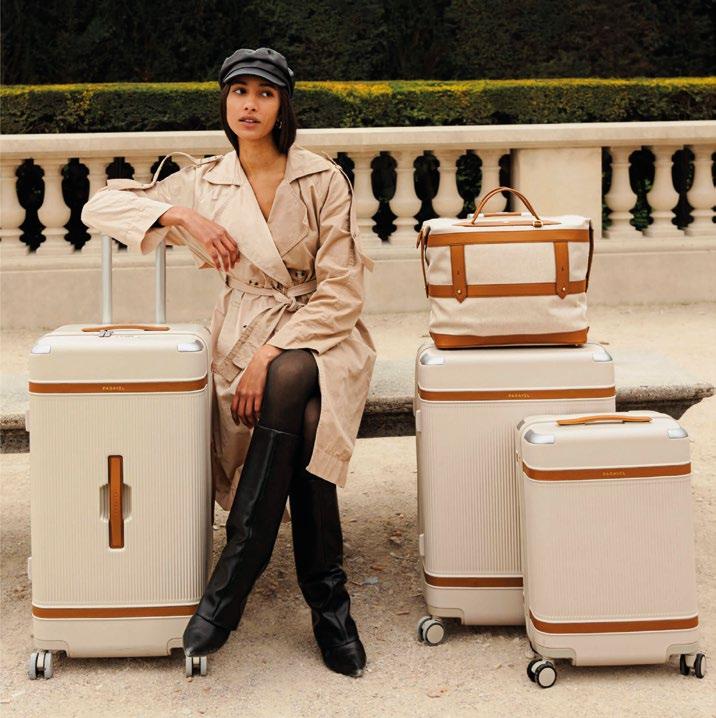
Where sharp design meets serious eco-credentials, Paravel’s line of sustainable luggage is redefining what it means to travel in style—without leaving a heavy footprint.

There was a time when luxury travel meant indulgence at any cost. These days, the savviest travellers are as concerned with their carbon footprint as they are with cabin upgrades and curated hotel stays. Enter Paravel, a brand that has managed to turn conscientious design into an object of desire—and a status symbol of the most stylish kind.
Founded in 2016 by Andy Krantz and Indré Rockefeller, Paravel launched with a clear objective: to reinvent travel essentials for a new generation. Not just better made, but better for the planet. It’s a lofty goal, but one they’ve met with unmistakable flair. Paravel’s luggage and travel accessories are sleek, functional, and impeccably considered—and crucially, they’re made almost entirely from recycled and upcycled materials, right down to the zippers and linings. Climate Neutral Certified since 2021, the company has already recycled more than eight million »


« plastic bottles and offset over 26,000 metric tonnes of carbon dioxide. It’s sustainability with receipts.
But don’t mistake Paravel’s ethos for dull aesthetics or function-over-form sensibilities. Minimalist in appearance, maximal in impact, these are meticulously tailored pieces that feel like they belong on a haute couture runway or on the tarmac of a private jet. Unsurprisingly, Paravel has caught the attention of style icons including Victoria Beckham, the Hadid sisters, Reese Witherspoon, Oprah Winfrey, Katy Perry, and Hailey Bieber, and its luggage has graced the screen in Succession and Sex and the City. It’s not just smart packing—it’s a lifestyle statement.
At the core of the Paravel offering is the Aviator line. These carbon-neutral suitcases are engineered for modern movement, whether it’s a long-haul adventure or a spontaneous weekend away. The Aviator Carry-On is a masterstroke of design genius: lightweight, surprisingly spacious, and designed to glide effortlessly through any terminal with its 360° spinner wheels. It fits enough for a week-long trip, with space for up to four pairs of shoes and even a removable laundry bag—because even in-flight, the details matter.
Those planning longer journeys will gravitate toward the Aviator Grand or the brand’s pièce de résistance, the newly launched Aviator Trunk Set. The latter is both visually pleasing and impressively functional, holding enough for a two-week escape, complete with an integrated system of seven packing cubes. In true Paravel fashion,
PREVIOUS SPREAD, CLOCKWISE FROM TOP
LEFT The Aviator Trio Set is perfect for trips three weeks and over, and is made from recycled polycarbonate with recycled aluminum handles, recycled zippers, and vegan leather details; the Aviator Trunk comes complete with an integrated system of seven packing cubes; the Aviator100 is crafted entirely from recycled water cooler jugs and comes in a gorgeous glacial blue colour.
LEFT The Grand Tour Duffel Bag and Carry-On make the ideal combo for weekend trips.
BELOW Paravel’s luggage is both stylish and functional.
each component fits within the other like a nesting doll, streamlining the chaos of packing into something near pleasurable.
Then there’s the Aviator100, the brand’s boldest expression of purpose-meets-polish. Crafted entirely from recycled water cooler jugs, this glacial blue collection was the first of its kind: luggage built without any virgin materials at all. Each piece comes with a batch number stitched into the interior—a subtle nod to its small-batch production and rarity. Not unlike a designer handbag, really.
But it’s not just rolling luggage that Paravel does well. Their soft accessories have quietly built cult followings of their own. The Packing Essentials Set has become a favourite among those who like their travel simple and stress-free. A blend of compression and packing cubes, all made from recycled bottles and available in six sleek shades, it brings structure to your suitcase—and a little zen to the pre-departure rush.
And then there’s the Cabana Tote. Eye-catching with its signature candy-coloured stripes, this unassuming bag has sold out seven times and boasts a consistent five-star rating online. With enough room to carry a laptop, water bottle, snacks, and an entire skincare regime, it transitions effortlessly from airport to beach to city streets. Spillproof and structured, it’s the bag you’ll end up taking everywhere. Rounding out the offering is the Main Line Duffle, a perfect hybrid of gym-bag utility and weekender sophistication. Crafted from EcoCraft Canvas®—a proprietary material made from recycled plastic bottles and natural cotton—it’s an elegant answer to the problem of overpacking. It holds just enough, never too much, and looks equally good under the seat or slung over your shoulder during a city break. Like many of Paravel’s bestsellers, it’s also customisable, with options for hand-painted or embroidered monograms.
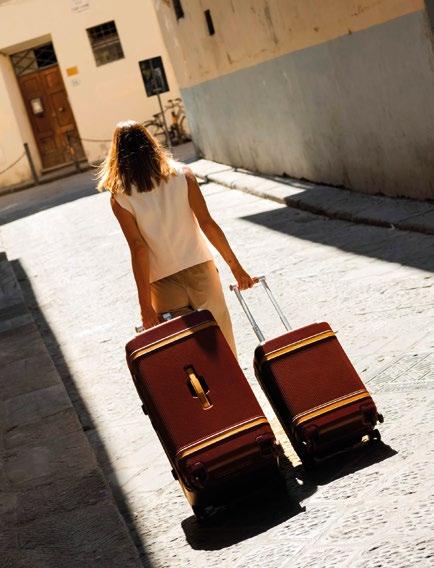
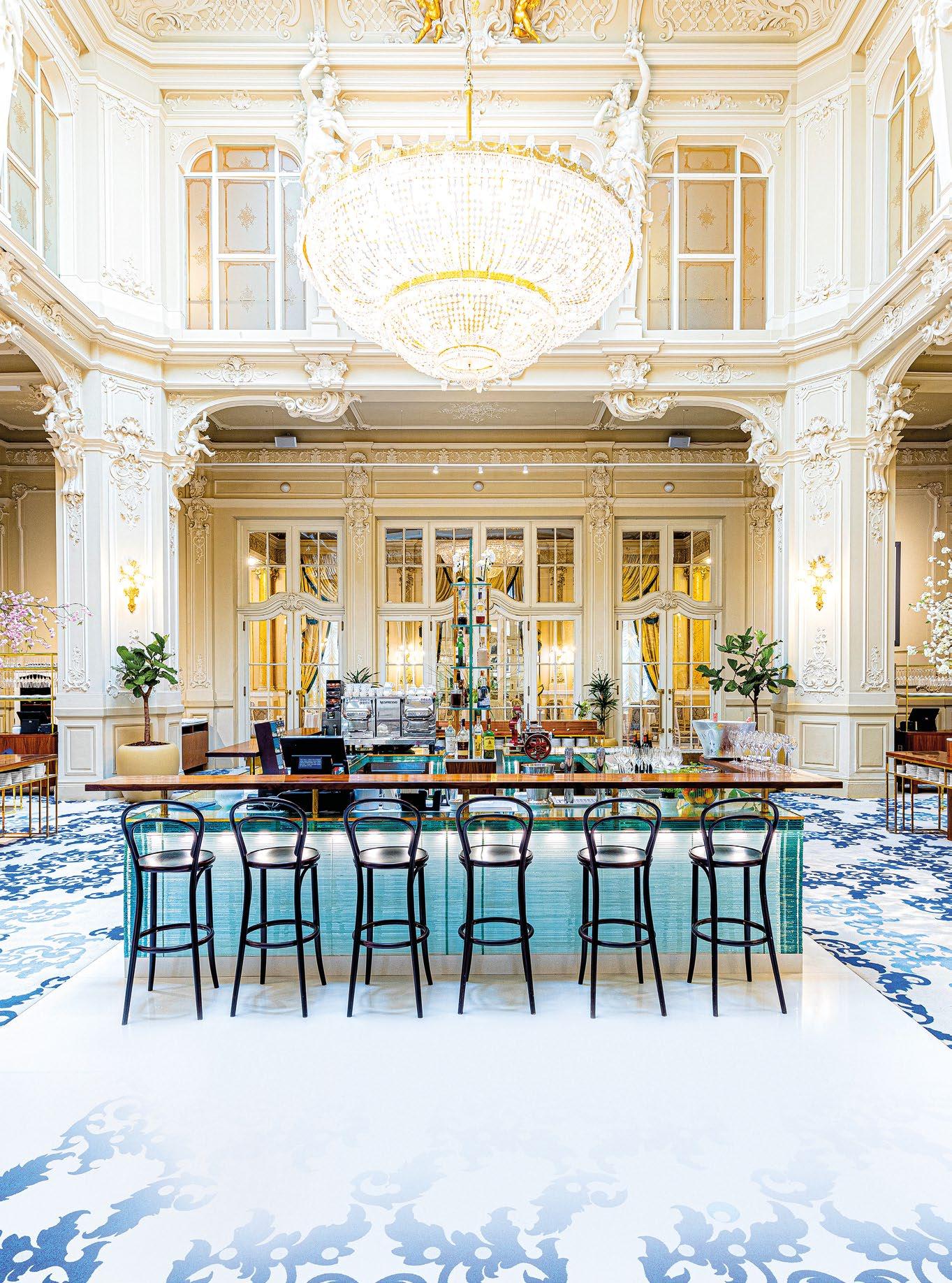
In the heart of Europe, Grandhotel Pupp invites you to experience timeless elegance and create unforgettable memories. Reserve your stay at pupp.cz

As AKONI marks the beginning of a fresh chapter, it remains steadfast in its pursuit of creating luxury eyewear that transcends fashion, standing as a symbol of quality, craftsmanship, and heritage.
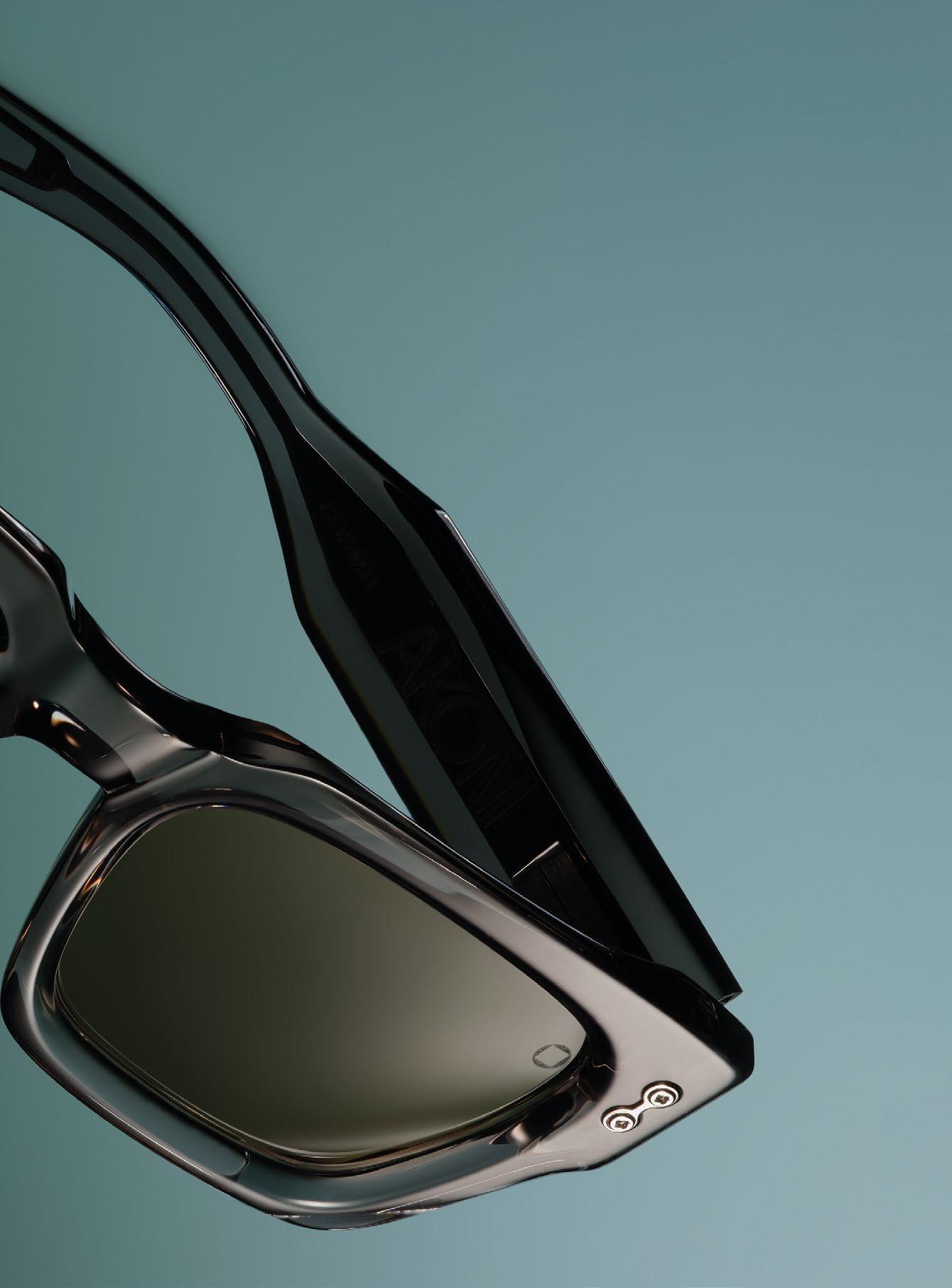
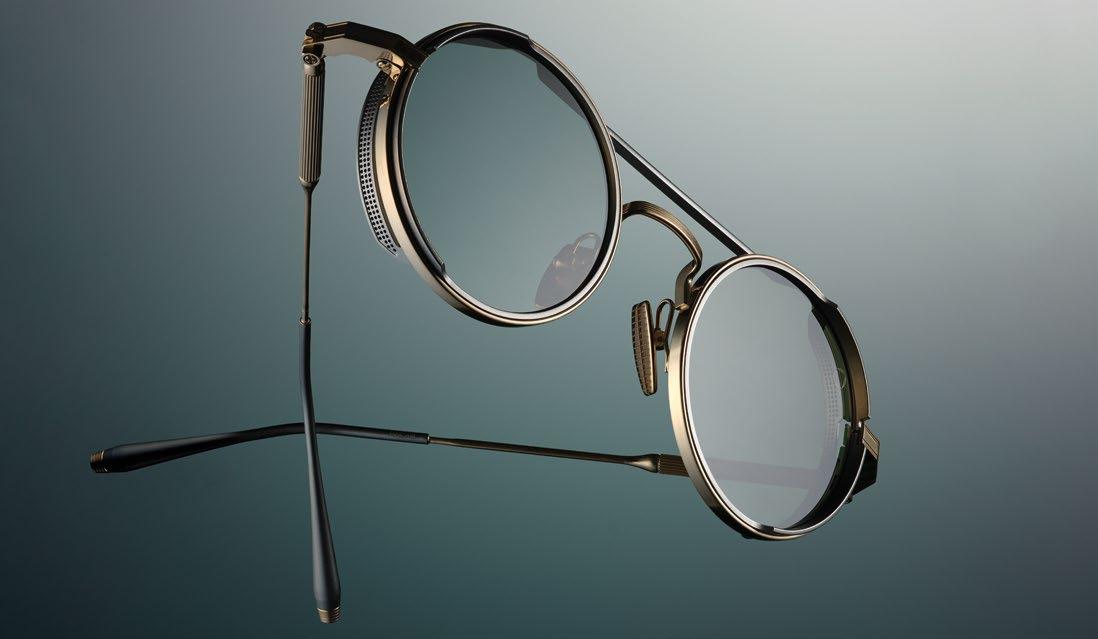
Founded in Switzerland in 2020 by a diverse team united by a shared vision, AKONI quickly distinguished itself in the luxury eyewear market by combining the best of Swiss precision and Japanese artistry. The name “Akoni”, derived from Latin and meaning “priceless” and “worthy of admiration”, perfectly captures the essence of what the brand continuously strives to achieve with its unique and impeccably crafted products.
In a short span of only five years, AKONI has managed to capture the attention of discerning consumers around the world who value not just style but also appreciate the heritage, craftsmanship, and sentiment behind AKONI eyewear. Creating beauty inspired by luminaries who forever changed the way we see and experience the universe, AKONI is made for those who view the world not only as it is but as it could be. Each frame pays tribute to boundary-pushing pioneers and thinkers, earning the brand admiration from innovators, visionaries, and design trailblazers alike.
As the company embarks on the latest evolution in its journey—a significant rebranding coupled with a commitment to producing eyewear made in Japan—AKONI further underscores its dedication to embracing modern design while staying true to its roots.
Recognising the need to not just meet but exceed the expectations of modern luxury consumers, AKONI continues to reframe the boundaries of premium eyewear with a refreshed identity. This rebranding effort comprises more than just a visual upgrade; it’s a holistic transformation
PREVIOUS SPREAD AKONI Cosmo sunglasses in black.
ABOVE AKONI Eris frames.
BELOW AKONI’s refreshed packaging complements the brand’s elevated aesthetic, featuring plush materials like soft leather cases and sleek aluminum accessories.
that aligns every aspect of the AKONI experience with the sophistication and attention to detail that its customers have come to expect.
According to AKONI’s CEO, Rosario Toscano, this rebranding is essential to meet the growing demands of the brand’s primary audience—those he describes as innovators and trendsetters. “While our product has always been at the forefront of the market, we recognised that to deliver a truly cohesive luxury experience, every aspect of the brand had to reflect the same level of refinement of our products,” Toscano explains.
One of the most notable changes is the introduction of a new signature colour: a deep, rich emerald green, an elegant evolution from the previous military-inspired tones. This vibrant hue now graces all brand assets, from packaging to product designs, adding a bold yet tasteful touch that enhances AKONI’s overall customer experience.

























The brand has also revamped its packaging to complement its elevated visual aesthetic. Drawing inspiration from high-tech gadgets and the timeless allure of travel, the new packaging incorporates plush materials such as soft leather cases and sleek aluminium finishes. These elements pay homage to AKONI’s iconic titanium sideshields, embodying a seamless blend of beauty and practicality.
Central to AKONI’s identity is its “Made in Japan” philosophy, which honours the exceptional handicraft of Japanese artisans. AKONI’s frames are not just products; they are works of art meticulously created by master craftsmen in Japan. This dedication to craftsmanship draws from Japan’s rich Arts & Crafts history, integrating revered techniques such as Japanese joinery, Kiriko glass, knife-making, and Shodo calligraphy. The result is a collection of products encompassing much more than what meets the eye: they tell a compelling story of heritage and impeccable design, all while looking incredibly chic.
To further communicate its devotion to its Japanese roots, AKONI has beautifully captured this sentiment in a short film titled Made in Japan. The film pays homage to the intricate beauty found in both nature and craftsmanship, weaving together the rhythm of the natural world with the


CLOCKWISE FROM TOP LEFT The luxurious glasses cases mirror the tones and style of AKONI’s new look; AKONI’s eyewear is known for its precision-engineered frames, all designed and handcrafted by skilled Japanese artisans; AKONI Juno-Two sunglasses.
precision of the factory floor. Through striking parallelism, the film showcases how both nature and handicraft thrive on a shared obsession with detail, mirroring AKONI’s ethos of perfection.
In addition to craftsmanship, AKONI is anchored by the twin pillars of intelligent design and honest luxury. These principles manifest in every aspect of the brand, from the selection of materials to the mechanics of each frame. AKONI’s eyewear is known for its precision-engineered designs that balance form and function, pushing the boundaries of what is possible in high-end eyewear. The brand’s ethos revolves around creating products that are both physically attractive and functional, embodying the concept of “wearable art”.
This commitment to excellence is evident in AKONI’s use of cutting-edge technology and forward-thinking design elements. For instance, the brand’s signature titanium sideshields go over and above being decorative; they enhance the frame’s structural integrity while adding a distinct aesthetic touch. Each AKONI frame reflects the union of Swiss technical mastery and Japanese artistry, where heritage meets modern innovation.
As AKONI continues to evolve, embracing the future with open arms while honouring its roots, it’s clear that the brand’s legacy of intelligent design and honest luxury is here to stay. The rebranding and dedication to the “Made in Japan” concept are not just strategic moves; they are about reinforcing the core values that have always driven AKONI—precision, craftsmanship, and a deep respect for tradition.

With 30 years at the helm of Domaine Clarence Dillon, Prince Robert of Luxembourg has transformed a family passion project into a multi-dimensional company—where soul meets strategy, and imperfection gives rise to the sublime.
When Prince Robert of Luxembourg joined Domaine Clarence Dillon three decades ago, he wasn’t stepping into a position so much as stepping into history. As the great-grandson of Clarence Dillon—who acquired Château Haut-Brion in 1935—Prince Robert represents the fourth generation in a family whose name is now etched into the bedrock of Bordeaux’s winemaking world. But far from resting on legacy, he has infused it with energy, creativity, and vision.
“I represent the fourth generation of a family that’s been involved with winemaking since my great-grandfather acquired Château Haut-Brion in 1935,” Prince Robert explains. “When I arrived, it really was just one estate. We had no offices on site, no offices in Paris. We had an accountant who came once a week to look at the books. It
ABOVE Château La Mission
Haut-Brion in PessacLéognan is one of the wine estates owned by Domaine Clarence Dillon © Leif Carlsson.
was a very different environment. No money had been taken out of the company for over 60 years. It was not considered an investment. It was really just a passion project.”
That model, he understood, could not sustain itself. “When I joined, the message I got was just ‘make great wine’, which is a very comfortable place to be in. But I told my grandfather that wasn’t enough. I wasn’t interested in just being a caretaker. I wanted to build a future.”
That future began with growth—not just in scale but in spirit. Under Prince Robert’s leadership, Domaine Clarence Dillon expanded into new estates, including Château La Mission Haut-Brion (Grand Cru Classé de Graves) and Château Quintus (Saint-Emilion Grand Cru); launched a highly curated wine retail business, La Cave du Château, in Paris and Bordeaux; and founded Le Clarence, a twoMichelin-starred restaurant in the French Capital. United by

more than ambition, these ventures represent the group’s unwavering commitment to excellence and Prince Robert’s deep desire to offer something authentic. “We’ve always focused on the top end of whatever it is that we do—in the greatest quality,” he says. “But soul is important to me, and differentiation matters.”
However, excellence, in Prince Robert’s world, doesn’t just mean polish. As Domaine Clarence Dillon looks toward its 90th anniversary, the family group is no longer defined solely by what’s in the bottle. It is, instead, a living ecosystem of vineyards and voices, experiences and ideas, all rooted in heritage but always evolving—and Le Clarence perfectly encapsulates this sweet spot between tradition and novelty. Housed in a Parisian mansion that mirrors Prince Robert’s Bordeaux château, it’s a culinary paradox by design. Traditional décor contrasts playfully with the unpredictable brilliance of the restaurant’s ever-evolving, no-menu cuisine, creating what Prince Robert describes as a “dislocation” that makes the experience memorable.
“Le Clarence was never about chasing trends,” he says. “We went countercurrent. I have always wanted to produce something that is true and therefore legitimate, something that people can feel. Today, I find that in many places—the fancy hotels and restaurants—they all seem quite similar. It’s the same decorator, the same style. But when we live something that is different, and therefore somewhat unique and also imperfect—like our wines—that gives them an extra dimension. Which is ultimately about seeking the sublime.”
Perhaps nowhere is the search for the sublime more visible than in the way the company engages directly with its audience. From creating the Clarendelle label, now a respected name in accessible fine wine, to cinematic product placements and a growing digital presence, Prince Robert has steadily pulled the company closer to the people who drink its wines, allowing Domaine Clarence Dillon to expand its reach without diluting its identity.
Central to this identity is the understanding that wine is more than a product; it is a narrative medium and an ever-evolving legacy. “We’ve had vines planted since the first century AD. These wines have been enjoyed for over 2,000 years. So, how do you maintain relevance today, for people who are only just discovering wine? That’s the challenge— and the joy,” says Prince Robert. The next chapter in his engagement strategy is the launch of a dedicated hospitality company, scheduled for autumn 2026. “I don’t know exactly what it will look like yet,” he admits. “But it will be groupwide. It’ll touch on all our different entities.”
Innovation has become a hallmark of Prince Robert’s work at Domaine Clarence Dillon, and 2026 will mark yet another significant milestone: the launch of an ambitious new visitor experience at Château Haut-Brion. “We’re building what I hope will be not only the best winemaking facilities but also a carbon-neutral building and a cultural experience unlike anything else in Bordeaux,” he says. This includes a growing collection of over 6,000 gastronomic and oenological documents and artefacts—from papal wine »
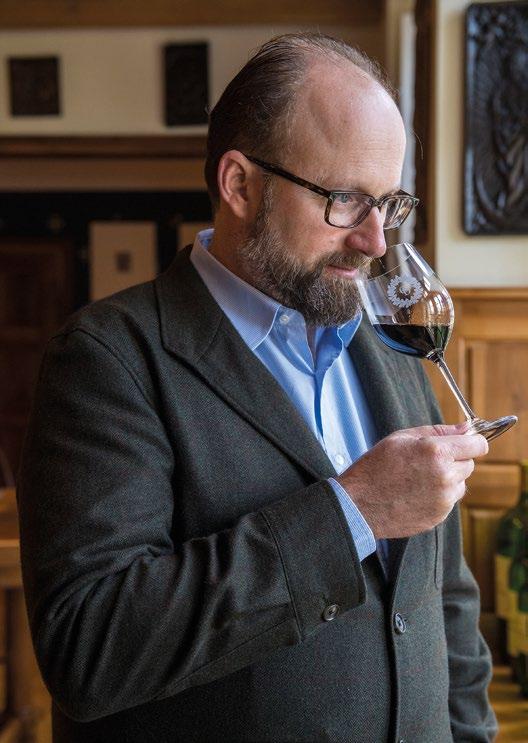
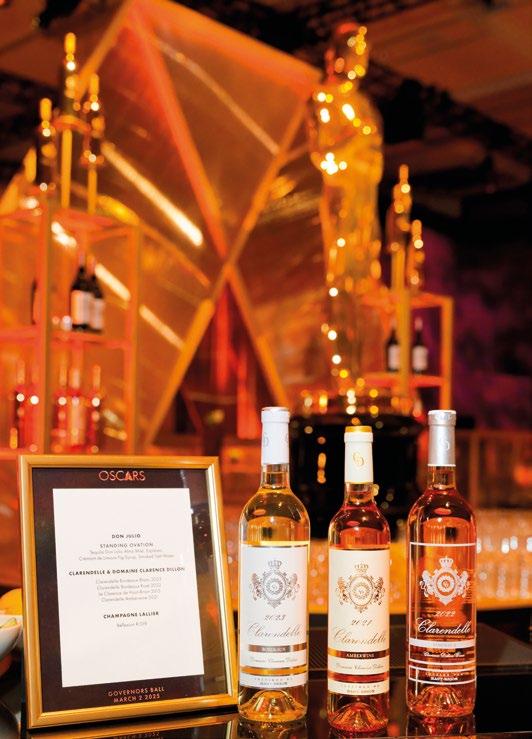
« orders to Charles de Gaulle’s presidential cellar logs. “It’s become the biggest collection of gastronomic and wine antiquarian books of its type in the world, and we’re using these objects and anecdotes as props, if you will, to guide people through and tell our stories.”
And while prestige follows Domaine Clarence Dillon, accessibility remains a goal. “We want to be open for everyone—and yet we can’t be open to everyone. There’s a challenge in maintaining soul and exclusivity without becoming exclusionary.”
Throughout his career, Prince Robert has also placed great emphasis on philanthropy and resilience, and this has taken an even more personal turn as of late. “My son was very ill and passed away recently, which changed everything for me. I stopped all international travel to focus on family. We also founded the POLG Foundation in his honour, and my wife is very focused on that. It’s been a challenging few years, but life is beginning to shift again.”
That shift includes stepping back from executive duties. In April, Prince Robert appointed the company’s first nonfamily CEO, allowing him to concentrate more fully on creativity and strategic growth—his forte, and the parts of the business he enjoys most. Another one of his strengths is long-term thinking. Whether through forging meaningful partnerships with the Oscars, crafting brand identities in Asian markets, or designing immersive visitor spaces, he sees Domaine Clarence Dillon not just as a company but as a cultural force.
CLOCKWISE FROM TOP LEFT Prince Robert of Luxembourg, Chairman & CEO of Domaine Clarence Dillon © Francois Poincet; Domaine Clarence Dillon holds an exclusive partnership with the Oscars and the Academy Museum of Motion Pictures © A.M.P.A.S.; the historic Château Haut-Brion, renowned as one of the most prestigious wineries in Bordeaux.
“The younger generations are drinking less—but drinking better,” he notes. “And they want more than just a bottle. They want a story, an experience, something unique and authentic. That’s what we’re building.”
In many ways, the transformation of Domaine Clarence Dillon mirrors the man at its helm—rooted in heritage but never bound by it. “There’s always more to be done. We’re far from where I’d like to be,” he admits. “But that’s the point, isn’t it? You keep evolving.” And evolve he has—turning a historic estate into a living, breathing entity, as soulful as the wines it produces.
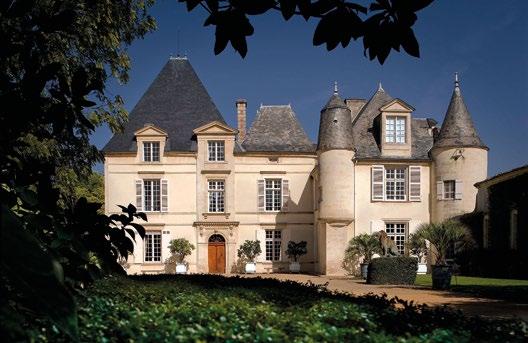



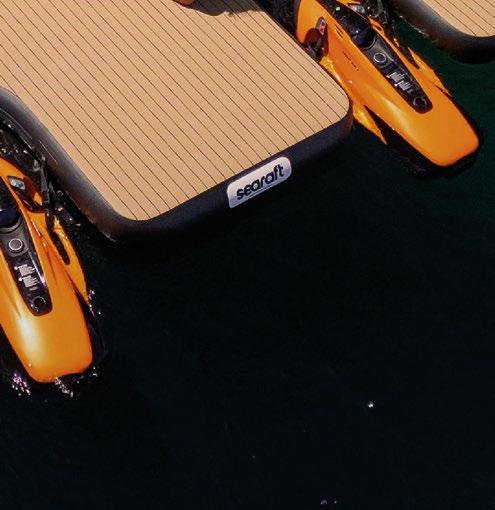



Vienna’s centuries-old coffeehouse culture finds fresh expression at the grand Imperial Riding School hotel. With Julius Meinl at its heart, this is more than a caffeine fix—it’s a taste of living history.
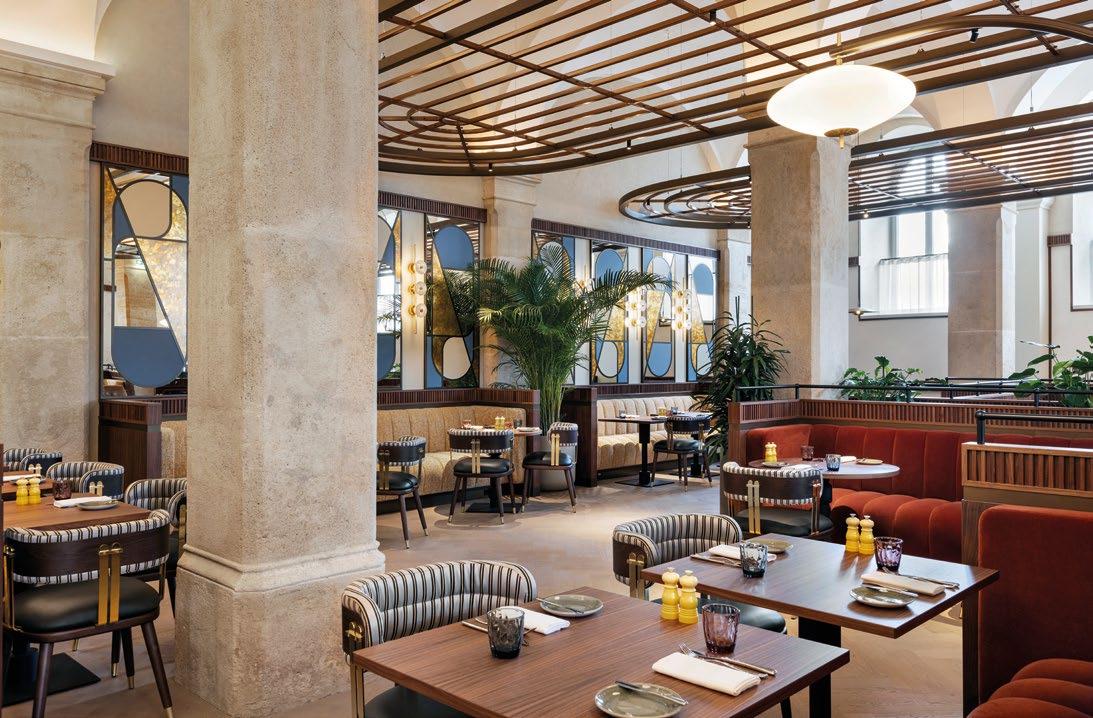
Some cities only preserve the past in museums— Vienna keeps it alive in every corner café. In the stately Austrian capital, where coffeehouse culture has been ingrained in the fabric of everyday life for centuries, two icons are finding new ways to honour this heritage. Julius Meinl, the storied Viennese coffee brand, and the newly reimagined Imperial Riding School, Autograph Collection Hotel, share more than a city—they share a sensibility. One serves its legacy in porcelain cups, the other in architecture and atmosphere. But both are united by a belief in elegance, craft, and the enduring value of unhurried moments.
Located in the city’s third district and originally built in the 18th century as Palais Harrach, the Imperial Riding School was designed by the same architect responsible for Vienna’s Baroque Belvedere Palace. Since then, it has worn many hats: an aristocratic residence, an equestrian academy, and a grand cinema. In 2024, following a meticulous transformation by London’s Goddard Littlefair design studio, it reopened as a deluxe hotel under Marriott’s Autograph Collection. Behind its historic façade, a warm, contemporary aesthetic pays tribute to Vienna’s layered heritage while looking to the future: vaulted ceilings and stable-inspired flooring meet Klimt-hued walls and modern art installations. With 342 rooms, a tranquil garden, various wellness offerings, and an effortlessly cool dining and bar scene, it’s a destination made for savouring the pleasure of leisure—and what better way to do so than with a cup of coffee in hand?
CLOCKWISE FROM OPPOSITE A Julius Meinl
coffee served at the Imperial Riding School hotel © Sophie Kirchner; Elstar Restaurant at the Imperial Riding School © Cathrine Stukhard; flank steak with Arabica rub, vanilla-whiskey carrots and coffee jus © Sophie Kirchner.
It’s a setting that makes perfect sense for Julius Meinl, whose own story began in 1862 and has grown from a single shop into one of the world’s oldest coffee roasters. For more than 160 years, Julius Meinl has not only shaped how coffee is made but also how it’s experienced. Across 70 countries, in over 50,000 hotels and cafés, the brand remains anchored in Viennese tradition while embracing global tastes and continuously evolving expectations. That duality is part of the magic. Julius Meinl doesn’t just serve coffee—it serves moments. This idea is rooted in Vienna’s own coffeehouse culture, which has long stood as »

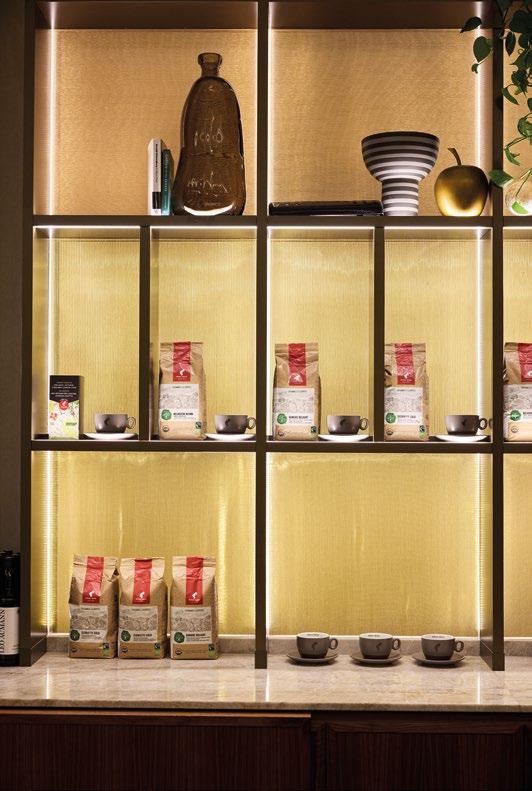
« a refuge for the creative, the curious, and the contemplative. Writers, artists, and thinkers once gathered in coffeehouses not for the hustle but to slow down. These venues were less cafés than salons, and time, as the saying goes, was the true luxury on offer.
That philosophy lives on at the Imperial Riding School. Whether you’re alone with a book in your suite or sharing conversation in one of the hotel’s inviting communal spaces, the presence of Julius Meinl elevates the experience. Inroom, guests enjoy home-compostable capsules—the perfect way to start the morning, with the smell of fresh coffee lingering in the air as you gaze out the window, soaking up the sights and sounds of Vienna as it rises. In the Elstar restaurant and The Farrier Bar, it’s Gloriette Gold that takes centre stage. A blend from Julius Meinl’s double-certified The Originals Bio Fairtrade line, it delivers a smooth, velvety body and rich cacao notes, especially luxurious with milk—an homage to Vienna’s patisserie scene, and to the art of treating oneself.
It’s served, of course, in classic Viennese style: on a silver tray, accompanied by a small glass of water. Not out of formality but out of respect for the drink, the guest, and the centuries-old coffeehouse culture that Julius Meinl continues to champion worldwide. Since 2011, that very culture has been recognised by UNESCO as part of Austria’s intangible heritage. It’s not about nostalgia; it’s about the
belief that connection, reflection, and creativity flourish best over a cup of coffee.
However, this extends beyond just what’s in the cup. At The Farrier Bar, once the building’s original riding hall, coffee takes on new life. By day, it’s a relaxed coffeehouse. By night, under the watchful eye of Bar Manager Piotr Krejza, it transforms into a cocktail destination where design and atmosphere take the lead. Meanwhile, Elstar—the hotel’s signature restaurant and an aesthetic masterpiece in its own right—serves up modern Austrian cuisine against an awe-inspiring backdrop inspired by Klimt’s Golden Phase, complete with suspended metal-framed niches and glowing mirror finishes. Here, too, Julius Meinl’s presence is more than symbolic. At a recent collaborative dinner, chef Max Kischnick and his team crafted a menu that drew on the sensory profile of coffee: beetroot tartare served on coffee soil, flank steak with Arabica rub and a coffee jus, and a decadent chocolate brownie with Gloriette Gold espresso to finish.
“It’s a real pleasure to lead a team so passionate about delivering high-end hospitality experiences that feel both personal and elevated,” says chef Max Kischnick. “Naturally, great coffee has always been part of that story—it sets the tone for so many memorable moments. Having our dishes paired with Julius Meinl coffee is something we’re proud of, and being given the chance to get creative with a coffee-inspired menu was a fantastic opportunity to push boundaries and bring something unique to the table.”
Indeed, that is where this collaboration shines: in its subtlety, its shared values, and its mutual understanding that luxury doesn’t always have to be flashy. Sometimes it can be the simple, heartwarming feeling of being part of something that has been unfolding for centuries and continues to evolve with grace.
ABOVE At The Farrier Bar, the Gloriette Gold blend from Julius Meinl’s doublecertified The Originals Bio Fairtrade line is served © Sophie Kirchner.
BELOW In-room, guests enjoy home-compostable Julius Meinl coffee capsules © Sophie Kirchner.
In the Julius Meinl experience at the Imperial Riding School, Vienna’s famed coffeehouse culture is beautifully preserved through a modern lens. Rooted in heritage, elevated by design, and served with unmistakable finesse, this is coffee as it was meant to be: a pause worth savouring, a ritual worth repeating. And like the city itself, it manages to feel both timeless and entirely of the moment. In other words, it’s not just coffee. It’s Vienna in a cup—refined, reflective, and ready to be experienced all over again.


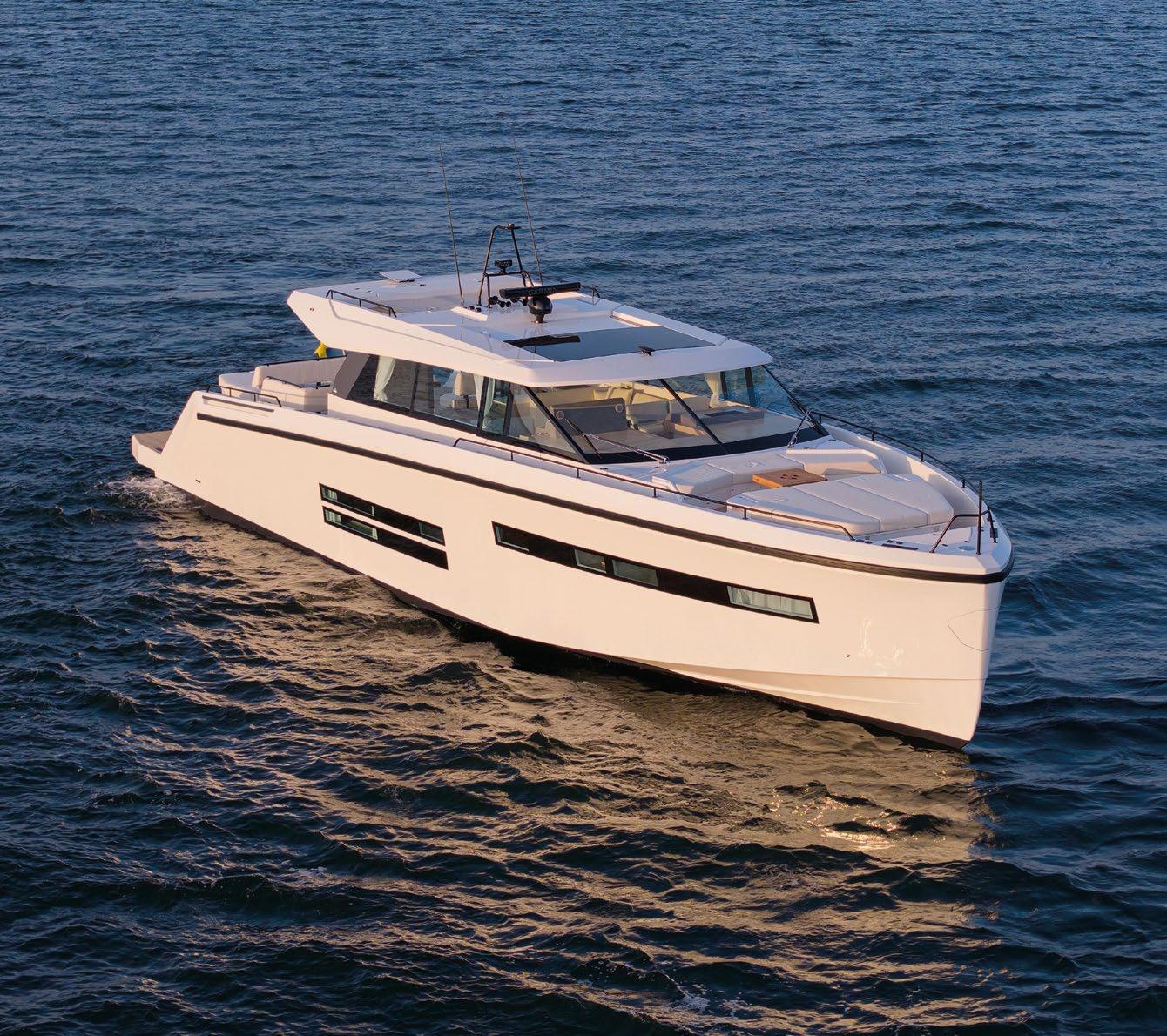
The new Delta 72 is a statement in style and quality. Built entirely in lightweight carbon fiber with a handcrafted interior, it delivers exceptional fuel efficiency, speed, and living spaces — setting a new standard for modern motor yachting. Discover more at deltapowerboats.se


At familux resorts , dreams unfold in every detail. Parents unwind in serene spa retreats, indulging in ultimate relaxation, while gourmet cuisine delights every taste. For the youngest guests –from babies to teens – dedicated Kids Clubs spark joy and curiosity. Together, families create moments of pure happiness, bringing home a treasure trove of cherished memories to last a lifetime.







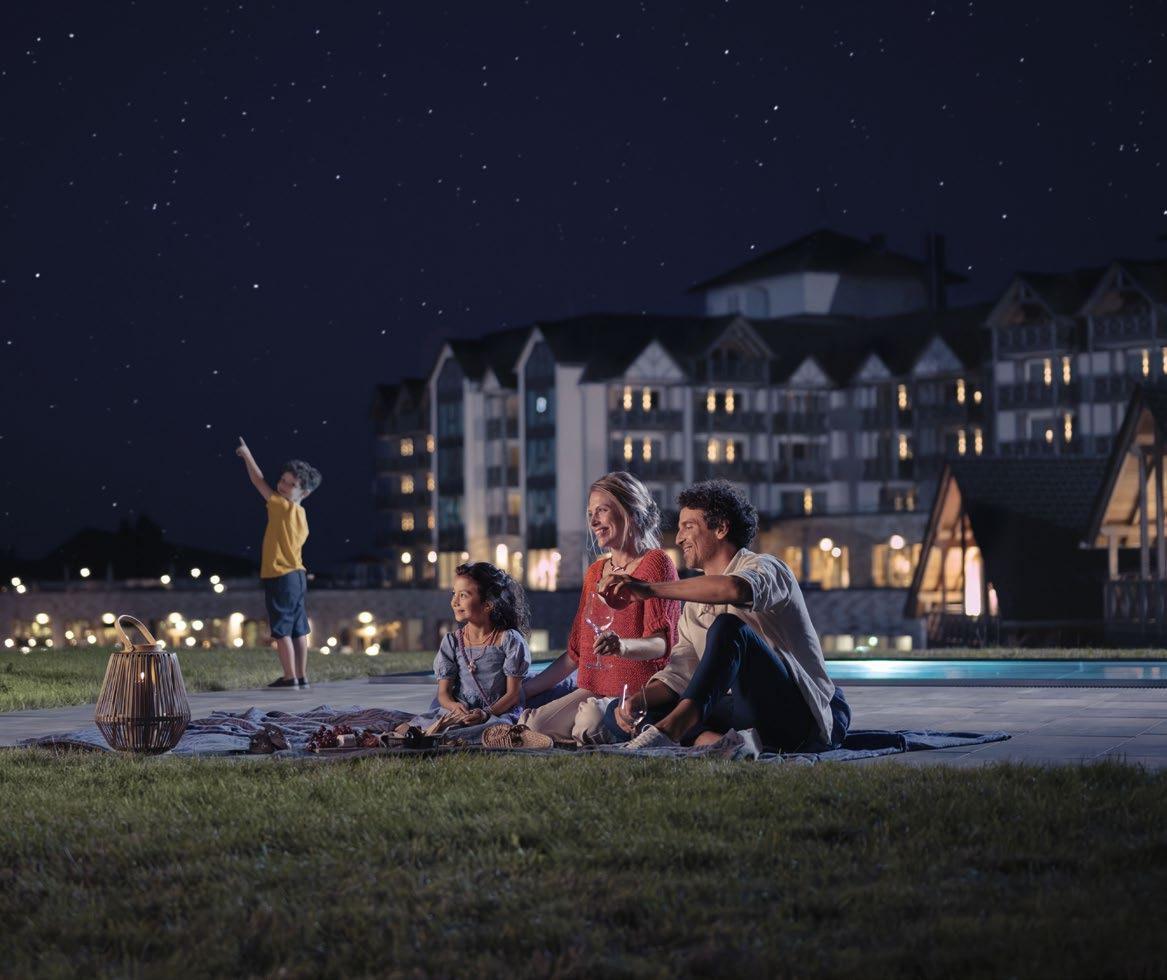

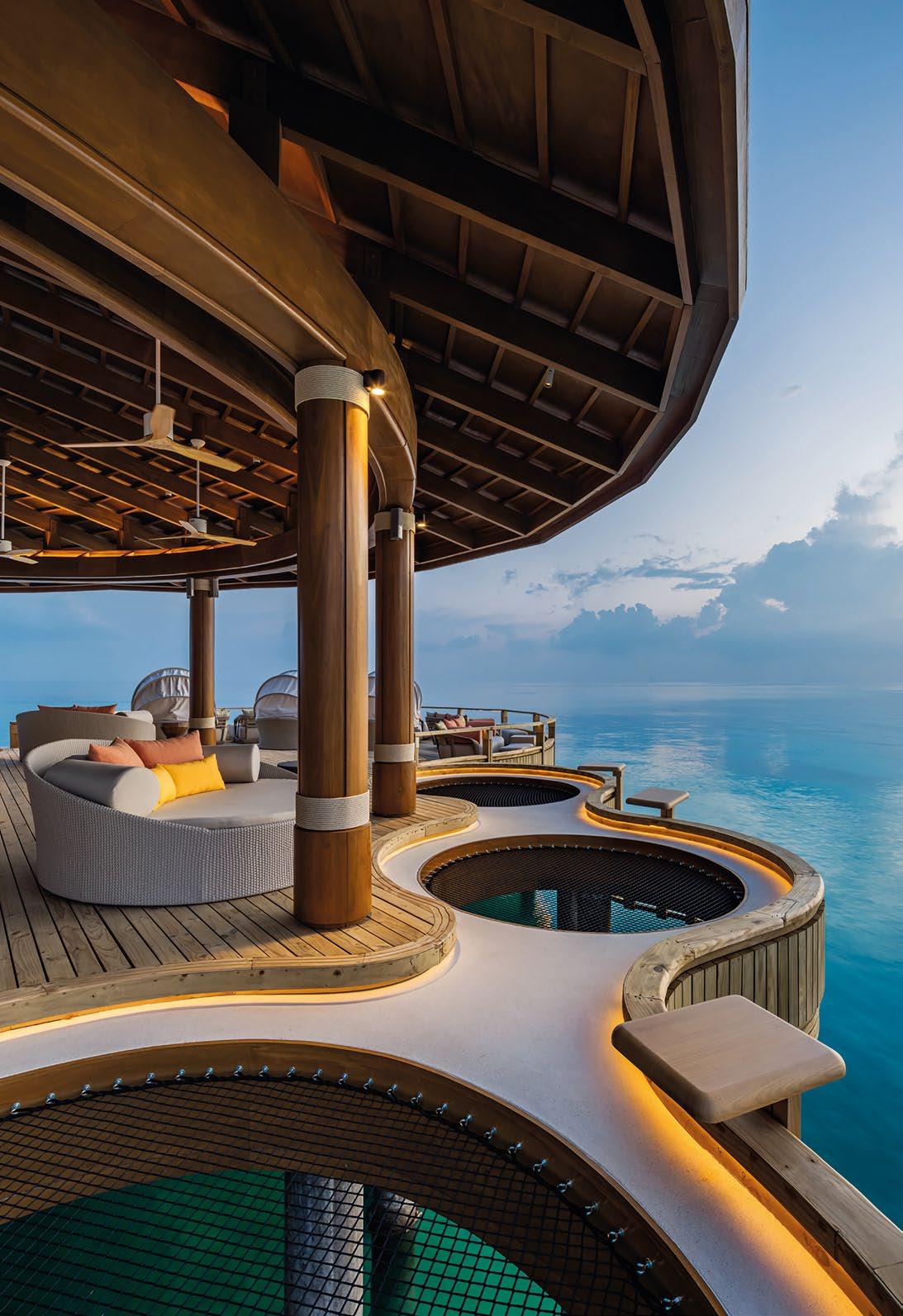
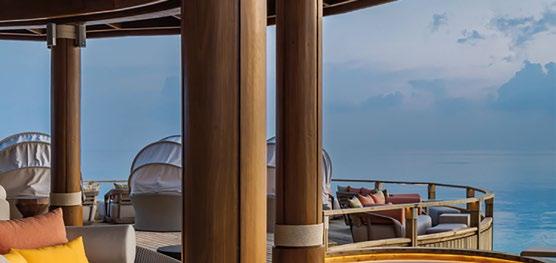


Seychelles · Maledives · Mauritius · La Réunion
Madagascar · South Pacific · Sri Lanka · Bali · Lombok
Thailand · Cambodia · Vietnam
Dubai · Qatar · Oman · Southern Africa
Balearic Islands · Sardinia · Marrakesh
To escape from everyday life – a thought that is particularly tantalising at this time of year: immerse yourself in foreign cultures, discover exotic spices and indulge in gourmet cuisine. Experience the perfect service, spacious villas with ultimate privacy and breathtaking natural backdrops, white sandy beaches by the turquoise sea ... Whenever your desire for relaxation and an unforgettable break grows, our experienced experts will fulfil all your wishes with attention to detail – ensuring you enjoy the most precious days of the year to the fullest.


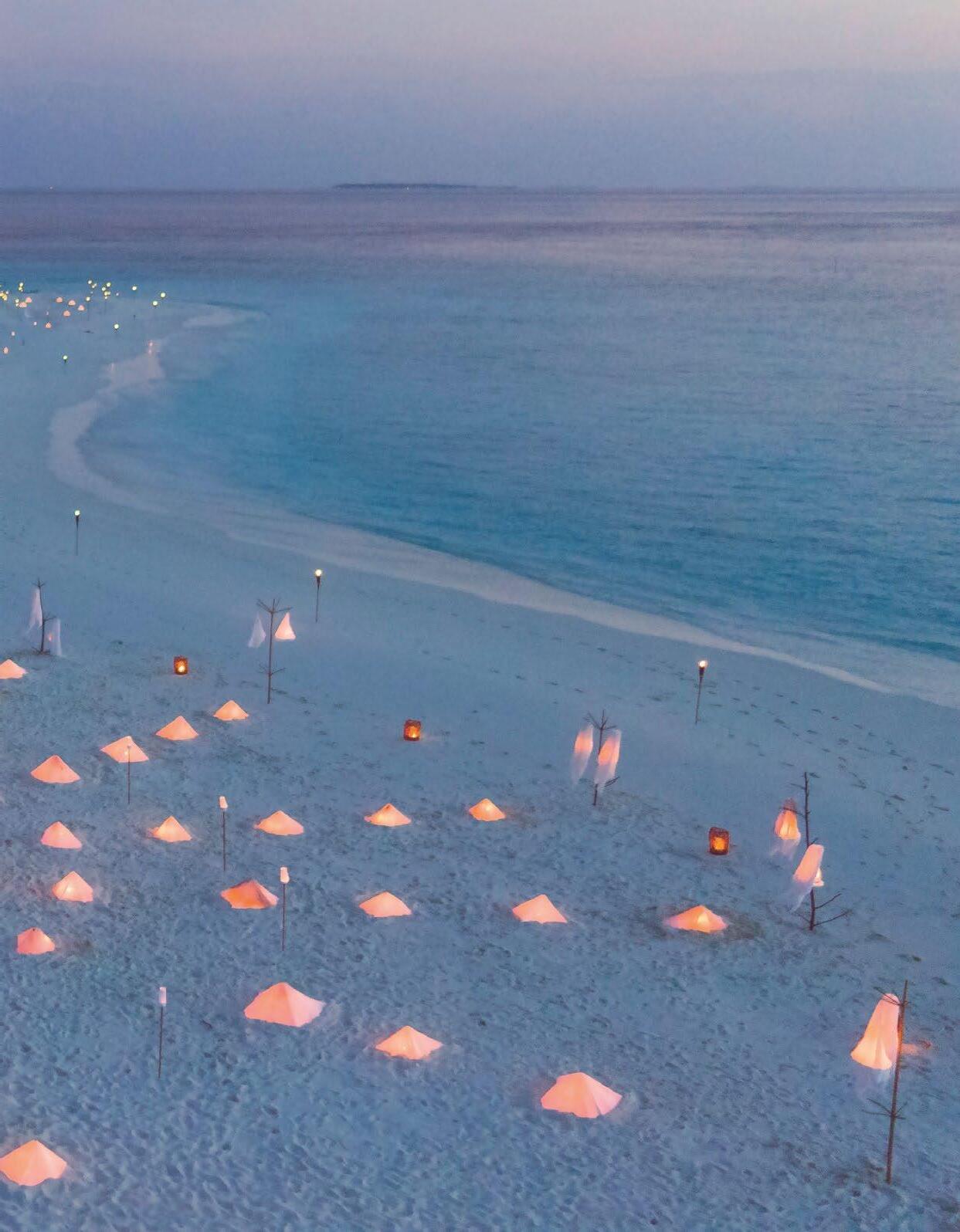
Order and browse our brochure free of charge. Simply give us a call on +49 8152 9319-0
Trauminsel Reisen Maisie und Wolfgang Därr GmbH Info@TrauminselReisen.de · Phone +49 8152 9319-0 www.TrauminselReisen.de







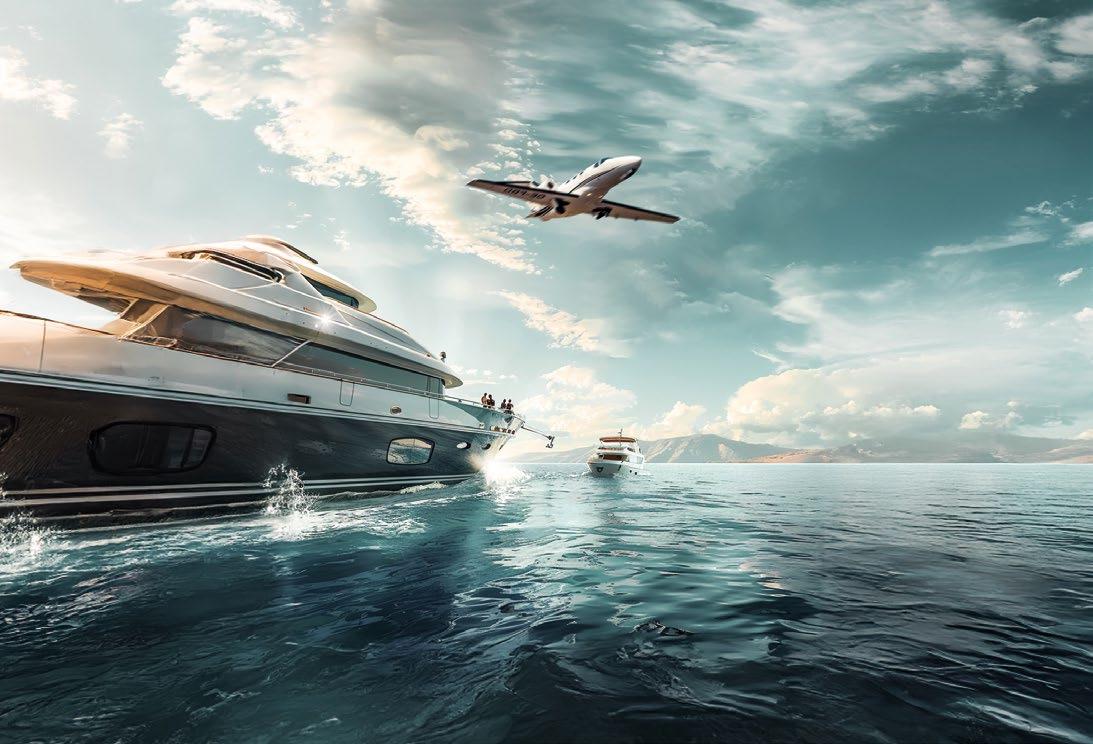
From Sardinia’s rugged coastlines to the Balearic breeze and the French Riviera’s timeless elegance, GlobeAir takes you to the world’s most iconic summer destinations.
Summer calls for discovery, renewal, and above all, time well spent. GlobeAir believes that the journey should be every bit as rewarding as the destination. With direct access to 984 airports worldwide, its services extend far beyond Europe, yet the Mediterranean remains a summer favourite—captivating travellers year after year with its blend of natural beauty, cultural richness, and timeless allure.
SARDINIA’S UNTAMED ELEGANCE
Sardinia is a sanctuary for those seeking untouched landscapes and understated sophistication. From the white sands of Costa Smeralda to the unspoilt archipelago of La
ABOVE With GlobeAir, travellers can arrive stress-free at their summer holiday destination and transition seamlessly to their yacht or villa.
Maddalena, the island offers a pristine escape where time slows and nature takes centre stage.
Arrive effortlessly in Olbia or Cagliari aboard a GlobeAir jet and transition seamlessly to your coastal villa, yacht charter, or countryside retreat. Whether it’s dining under the stars in a secluded agriturismo or exploring the coastline by sea, Sardinia is best enjoyed with the freedom that private aviation affords.
BALEARIC BEAUTY
Each of the Balearic Islands reveals a distinct character. Ibiza, long known for its lively spirit, also offers a quieter side, with wellness sanctuaries, private estates like Villa Can Nemo, and tranquil beaches waiting to be explored. »

« In Mallorca, history, gastronomy, and landscape converge. Hike the Tramuntana mountains, unwind at a boutique finca, or explore Palma’s cathedral and galleries. Through GlobeAir, guests enjoy tailored access to these experiences—from curated wine tastings to helicopter tours across the archipelago.
Whether it’s a long weekend or an extended escape, the Balearics promise versatility, charm, and moments of true repose.
The French Riviera is synonymous with summer glamour. From the golden promenades of Nice to the timeless sophistication of Saint-Tropez, this is where heritage meets high style.
GlobeAir allows travellers to arrive directly at La Môle for immediate access to Saint-Tropez or into Nice for effortless connections to Cannes, Antibes, and Monaco. Enhance your perspective with a helicopter tour in partnership with BLADE, offering a sweeping view of the region’s vineyards, villas, and Mediterranean coastline. With every detail—from accommodation to on-the-ground experiences—meticulously arranged, the Riviera becomes a canvas for unforgettable summer stories.
As Europe’s leading private jet operator, GlobeAir is trusted by discerning travellers across the globe. With over 17 years
BELOW
of operational excellence and a commitment to safety, punctuality, and discretion, the company offers a truly global service—delivering you to the world’s most exceptional destinations with efficiency and style.
At the height of summer, timing is everything. GlobeAir removes the delays, crowds, and uncertainty of commercial travel, allowing you to maximise your time where it matters most. The aircraft is ready when the client is, ensuring a seamless transition from daily life to the world’s most beautiful shores. This season, GlobeAir takes travellers further. Whether discovering new favourites or returning to beloved destinations, your journey begins the moment you step aboard.






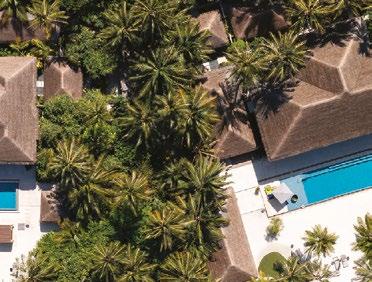

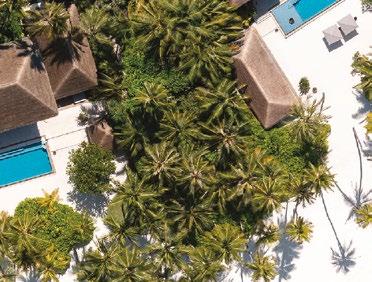




















FOUR sits down with TJ Joulak, General Manager of Waldorf Astoria Maldives Ithaafushi, to hear how this paradisiacal property continues to deliver one of the most personalised luxury hospitality experiences in the Indian Ocean.
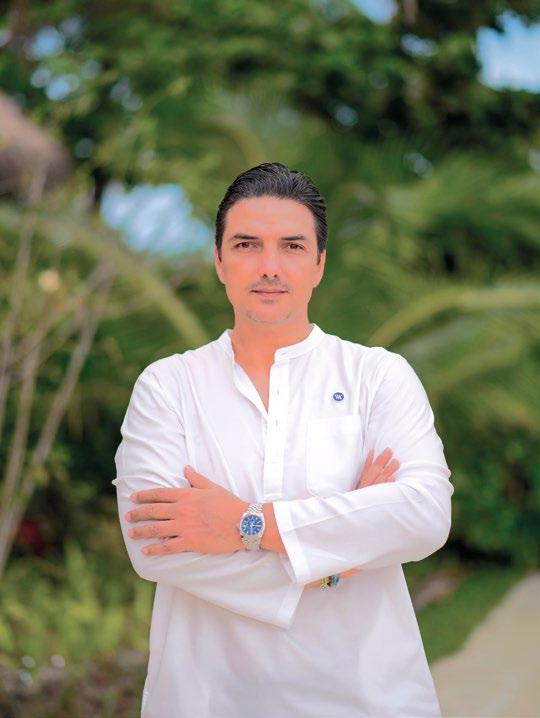
HOW DID YOU GET INTO THIS LINE OF WORK, AND WHY ARE YOU SO PASSIONATE ABOUT THE HOSPITALITY INDUSTRY?
I was born in a family of hoteliers. My father was chairman of a hotel group in North Africa, and I spent summer holidays in one of the resorts, where I developed a taste for hospitality. My passion grew for creating exceptional guest experiences, and my fascination with the dynamic nature of the hospitality industry sparked my journey into this field. After completing my studies in hospitality, I had the privilege of beginning my career with esteemed luxury brands like Iberostar, Starwood Hotels and Resorts, Marriott Hotels, and then Shangri-La Hotels and Resorts before joining the Waldorf Astoria Maldives Ithaafushi. These
opportunities exposed me to diverse countries and markets and provided invaluable insights into delivering world-class service. From my formative years in Tunisia, Doha, and Bali to leading iconic properties in Istanbul and beyond, I have always been driven by a deep desire to create unforgettable moments for guests while cultivating an innovative and empowering environment for my teams. What I find most inspiring about hospitality is its ever-evolving nature and the daily opportunities it offers to lead with purpose, embrace innovation, and continuously redefine the guest experience.
WHAT DO YOU
As General Manager, my primary goal is to create an environment where luxury meets innovation. I strive to bring a balance of operational excellence and visionary leadership, ensuring that every guest’s experience is truly exceptional. Personalisation is at the heart of what we do here, and I work hard to foster a culture where my team consistently exceeds expectations. Additionally, I am deeply committed to sustainability and wellness, integrating these elements into our operations so that we can deliver meaningful and memorable experiences. Please allow me to highlight that it all starts with my team, without whom I would be nothing.
WHAT ARE SOME OF THE THINGS YOU’VE LEARNT THAT ARE KEY TO YOUR MANAGEMENT
Over the years, I have learnt that leadership is most
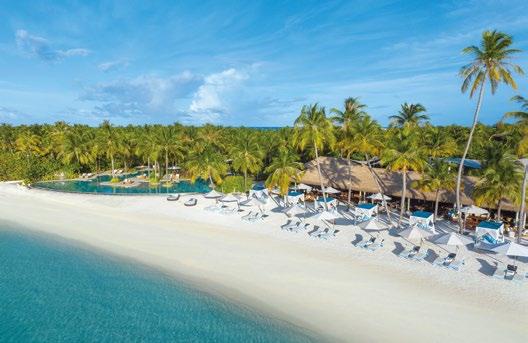

effective when it is rooted in authenticity and collaboration. I always lead by example, being hands-on and fully present in the day-to-day operations. Furthermore, as an expat living in a foreign country, it’s crucial to learn the local culture and customs and adapt. Moreover, empowering my team is another key lesson—creating a collaborative and supportive environment where everyone feels valued and has the autonomy to excel in their roles. I have also learnt that adaptability is critical in this fast-evolving industry, and I continuously look for ways to innovate
BELOW Three-Bedroom
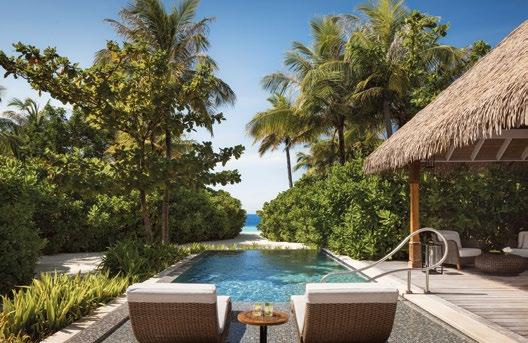
and stay ahead of trends. Above all, I prioritise creating unique, personalised guest experiences that make a lasting impression.
WHAT DO YOU THINK GUESTS LOOK FOR IN THEIR STAY, AND HOW DOES THE HOTEL DELIVER THIS?
Guests today are looking for something deeply personal and authentic—a stay that goes beyond expectations. At Waldorf Astoria Maldives Ithaafushi, we deliver this through meticulous attention to detail, from the comfort of our rooms to the quality of our gastronomy and wellness offerings. Our ability to personalise each guest’s experience is a key factor in keeping them coming back. Whether it’s a bespoke spa treatment, a tailored culinary journey, or simply creating an environment of seamless relaxation, we ensure every guest feels valued and understood. Our Personal Concierges are the quintessential ingredient to all our experiences.
HOW DO YOU KEEP THE HOTEL’S HIGH-QUALITY HOSPITALITY AND SERVICE STANDARDS CONSISTENT?
Consistency is non-negotiable in luxury hospitality. We achieve this by regularly gathering guest feedback, conducting audits, and continuously training our team. I believe in empowering my team through development opportunities so they are always prepared to deliver at »
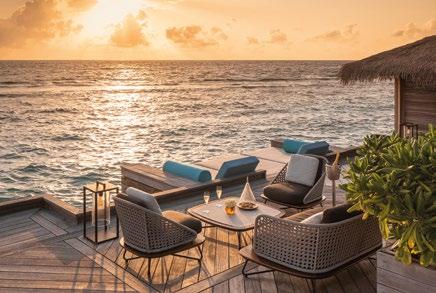
« the highest level. Technology also plays a significant role in maintaining efficiency and quality, helping us finetune operations while ensuring every guest experience is flawless. Clear communication and celebrating the successes of my team further reinforce our standards.
THE HOTEL IS PART OF THE RENOWNED WALDORF ASTORIA GROUP—WHAT VALUES DOES THIS INSTIL IN THE PROPERTY, AND HOW ARE THESE REFLECTED IN ITS OFFERINGS?
Being part of the Waldorf Astoria family means upholding values of timeless luxury, innovation, and personalisation. These values guide everything we do, from how we design our spaces to the level of service we provide. At Waldorf Astoria Maldives Ithaafushi, we embody these values by offering tailored experiences, uncompromising quality, and a commitment to sustainability. Our goal is to create unforgettable memories while reflecting the sophistication and excellence that Waldorf Astoria is known for.
WHAT ARE SOME OF THE CHALLENGES YOU FACE AS GENERAL MANAGER IN THIS INDUSTRY, AND HOW DO YOU OVERCOME THEM?
One of the biggest challenges is keeping up with the ever-evolving expectations of our guests. To address this,


I make it a priority to stay connected with both guests and industry trends, ensuring we are always innovating. Another challenge is maintaining team motivation and engagement, especially in such a demanding industry. I overcome this by creating a culture of empowerment, recognition, and continuous learning. Finally, balancing sustainability with luxury can be complex, but we have proven that it’s possible to integrate eco-friendly practices without compromising the guest experience.
What I enjoy most is the opportunity to create meaningful connections with my team, our guests, and the industry as a whole. There’s immense satisfaction in shaping memorable experiences for guests while fostering a positive and innovative work culture. I appreciate the dynamic nature of this role, where no two days are the same, and the chance to lead a team that shares my passion for redefining luxury hospitality.
Guests at Waldorf Astoria Maldives Ithaafushi can expect nothing short of perfection. From our beautifully designed villas that blend luxury with comfort to our diverse culinary experiences at one of the 11 restaurants, every detail is crafted to create unforgettable memories. One of my personal favourite aspects is our spa—it offers a blend of holistic wellness treatments that cater to both relaxation and rejuvenation. And, of course, the natural beauty of the Maldives is seamlessly integrated into every part of the guest journey, making every stay truly magical.
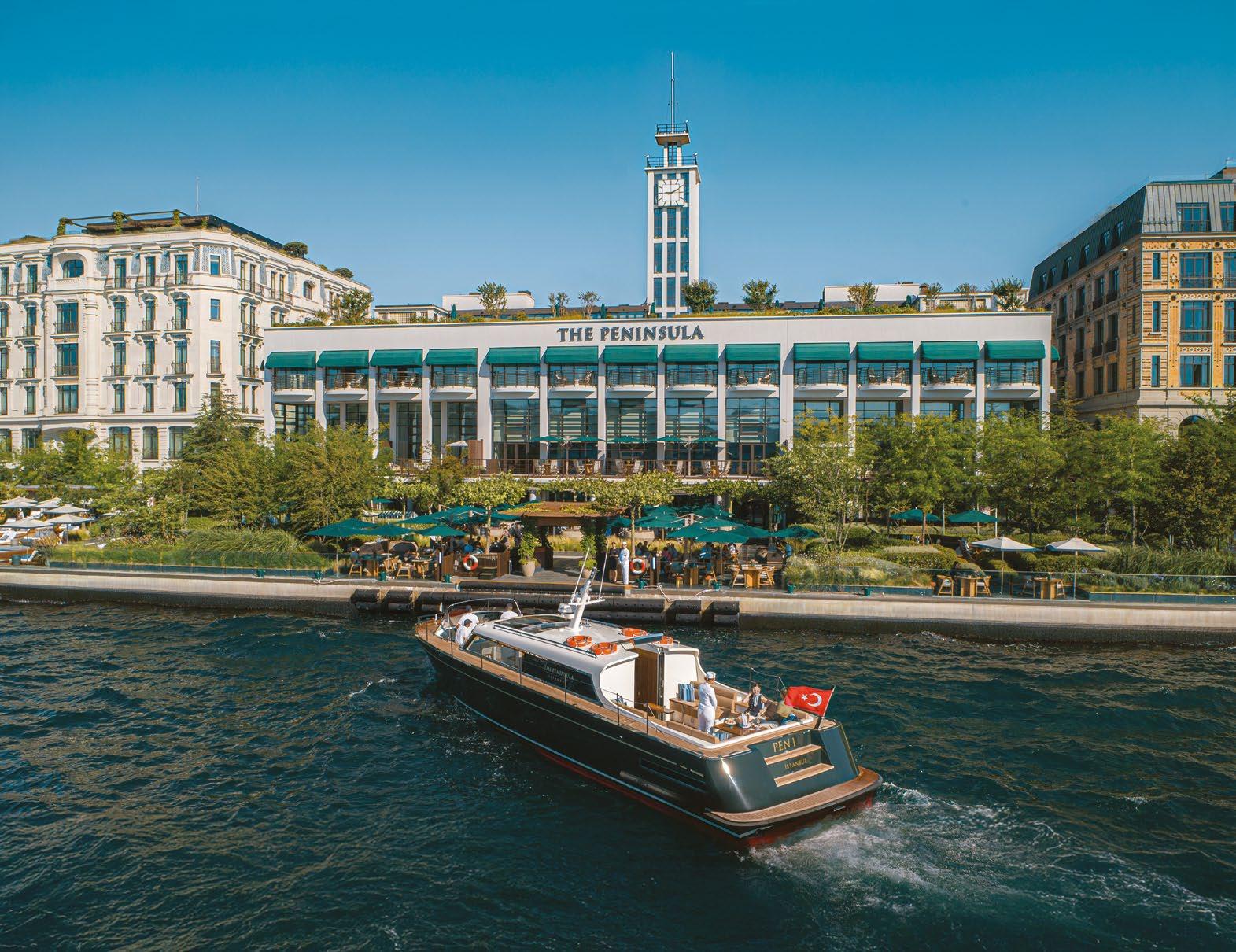

Big-name brands and bold independents alike are raising the bar in hospitality the world over, leaving traditional five-star luxury in the dust.
From Andalusia to the Americas, we tour the latest string of just-opened properties that are turning heads for all the right reasons…
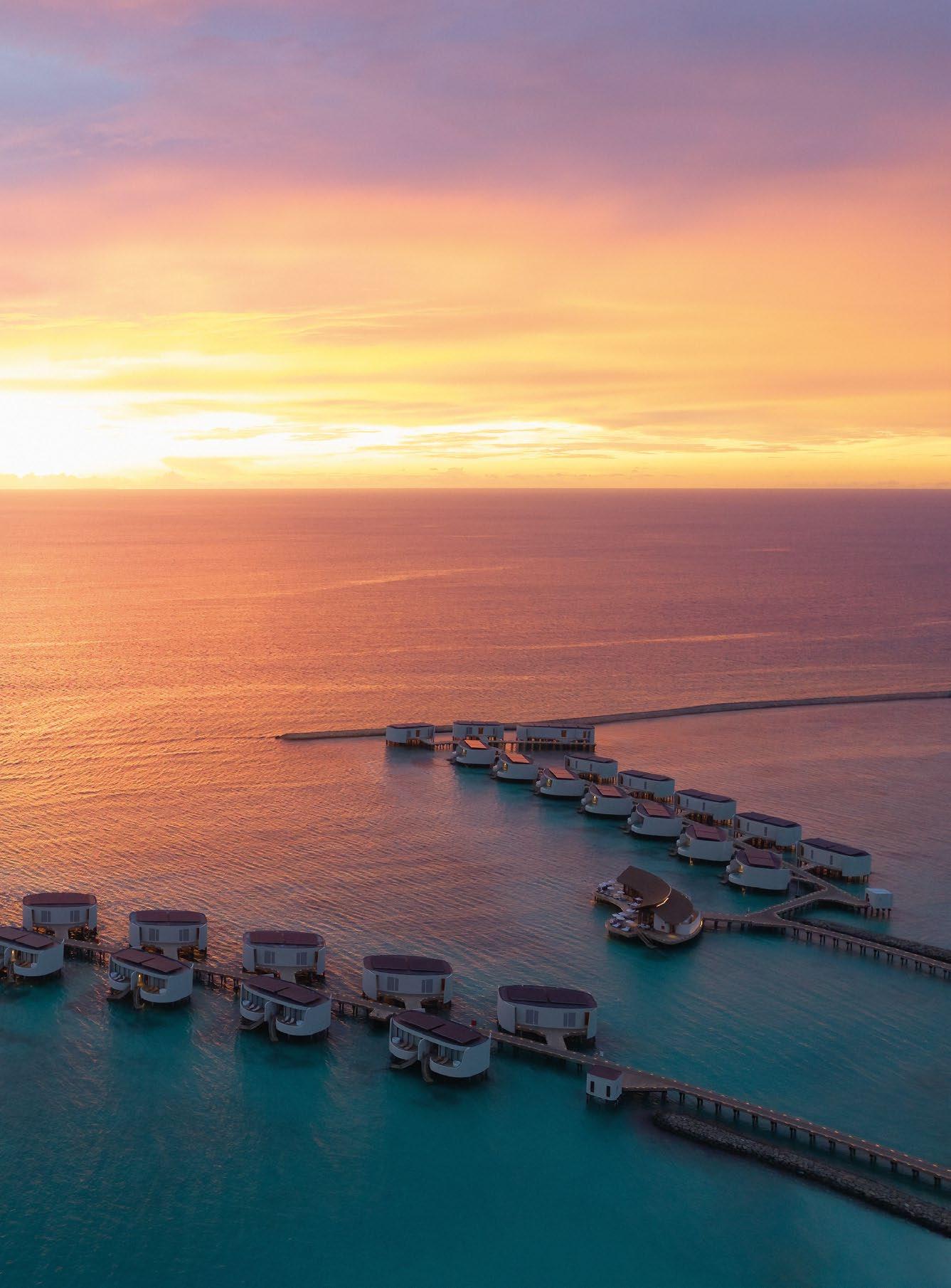

SPAIN
A new chapter in Andalusian luxury has arrived with the debut of Fairmont La Hacienda Costa del Sol. Positioned along the sun-kissed San Roque coastline, this striking new property from the renowned Fairmont portfolio manages to feel both grand and grounded—its whitewashed villas and terraced suites echoing the charm of a traditional pueblo, while its scale and ambition are unmistakably global.
A sense of place dominates the design. Interiors by Studio Ibu lean into natural textures—Campaspero stone, untreated wood, woven jute, and organic linen—while works by local artisans and wide-open sea views forge a constant connection to the land and its culture. With 153 rooms and suites plus 47 private villas—some with private pools—and the largest entry-level rooms in the region, space and serenity are central to the offering.
The resort’s culinary anchor is Dalmar, where two-Michelin-starred chef Benito Gómez lets top-tier Andalusian ingredients speak for themselves in dishes like Barbate bluefin tuna or Maresme peas with eel and sea urchin. Add to that a sprawling spa, two championship golf courses, and a location within easy reach of Marbella, Gibraltar, and Málaga, and Fairmont La Hacienda isn’t just another beach resort—it’s a fresh take on Costa del Sol living.
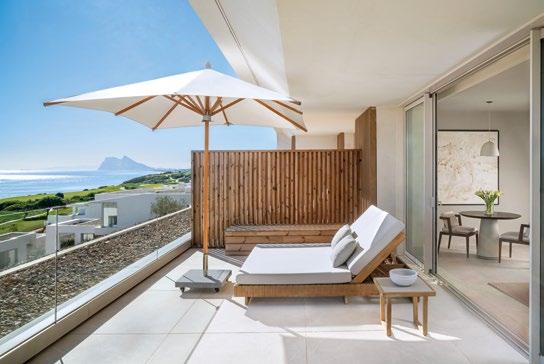

PREVIOUS SPREAD
Overwater villas at Centara
Grand Lagoon Maldives.
CLOCKWISE FROM TOP LEFT Set along the less-trodden edges of the Andalusian coast, Fairmont La Hacienda Costa del Sol features low-slung villas, earth-toned suites, and subtle landscaping; located on Nusa Dua’s southern coast, Paradisus by Meliá Bali takes the original Meliá Bali—once the brand’s first property outside Spain—and reimagines it for a new generation of luxury travellers; Paradisus by Meliá Bali is home to 485 suites with an additional seven private villas; perched between Cádiz’s cliffs and coastlines, Fairmont La Hacienda Costa del Sol is bathed in sun and sea views.
Currently undergoing the final stages of a major transformation, Meliá Bali is set to reopen this December as Paradisus by Meliá Bali—marking the luxury brand’s Asian debut. Located in the heart of Nusa Dua, the refurbished resort will introduce Paradisus’ DestinationInclusive® concept to Indonesia, blending immersive local experiences with high-touch, all-suite luxury.
The resort will unveil 485 redesigned suites and seven private villas, surrounded by tropical gardens and framed by Bali’s iconic shoreline. Four lagoon-style pools, a newly envisioned YHI Spa, and a wellness calendar that includes daily yoga and hydrotherapy rituals round out the holistic offering. But it’s the cultural programming that sets Paradisus apart—guests are invited to go beyond the resort through thoughtfully curated experiences that explore the island’s artistry, landscapes, and spiritual rhythms like never before.
With eight distinctive food and drink venues, from the Spanish-rooted Peseta to Japanese-inspired Tokimeku, Middle Eastern-focused Samira and the beachfront Kanna, which fuses South American flavours with Bali’s seafood bounty, dining will also offer a cultural immersion of its own kind. Meanwhile, The Reserve caters exclusively to adults with upgraded service and private spaces, while the Family Concierge ensures multi-generational fun, complete with kids’ and teens’ clubs and even a water park.
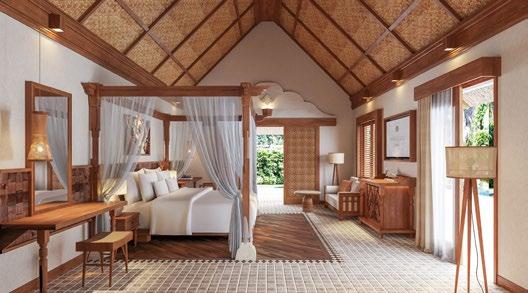

GREECE
Tucked between the Aegean Sea and Mount Olympus on a quiet stretch of the Kassandra peninsula in southern Greece, the adults-only Zélia Resort & Spa Halkidiki blends laidback sophistication with serious culinary and wellness credentials. The vibe is calm and curated—from swim-up suites and rooftop DJs to scent-soaked spa treatments and garden-to-table dinners served under olive trees.
Designed with a focus on space, light, and natural materials, the resort’s 104 rooms and suites all feature plush bedding, Le Labo toiletries, and either garden or sea views, while the foliage-enveloped spa offers a lush hideaway
CLOCKWISE FROM ABOVE
Zélia Resort & Spa Halkidiki is an adult’s-only resort set on Greece’s southern coast; Zélia Resort & Spa Halkidiki’s boasts a boho-chic aesthetic; Zélia Resort & Spa Halkidiki’s Shizen restaurant delivers an immersive Japanese-Peruvian culinary experience.
in its own right, complete with sensory showers, Pilates reformers, and custom wellness therapies.
Chef Vassili Papatheodorou, a Le Cordon Bleu alum, leads the resort’s four-restaurant lineup, which includes a Japanese-Peruvian outpost, a breezy all-day café, and an alfresco chef’s table in the resort’s beautifully manicured garden. The drinks list is equally considered, with Greek wines and seasonal cocktails served around shallow pools, low-lying fire pits, and live music.
Thoughtfully laid out and well away from the noise, the resort’s beach deck is reached via a short path, but guests are just as likely to be found hiking to flamingo-dotted wetlands, pedalling through coastal forests, or unwinding in the sauna after a morning yoga session.
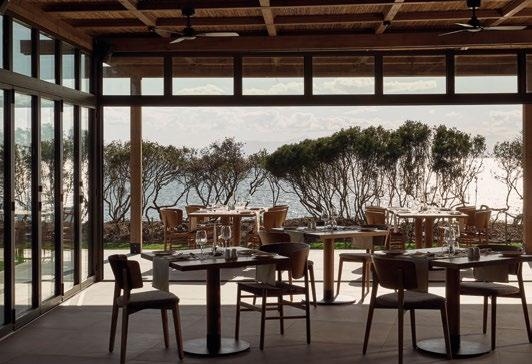
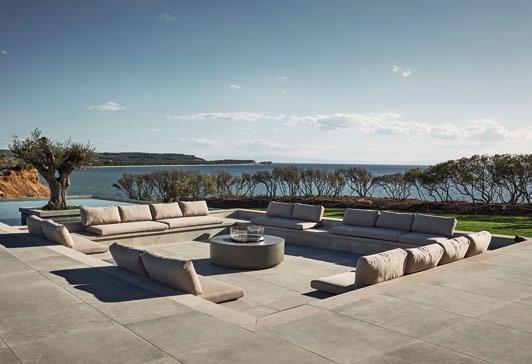

MALDIVES 4
Open as of April 2025 as part of Centara’s multi-island Atollia project, Centara Grand Lagoon Maldives brings together the best of two worlds: a serene, grown-up retreat in a setting that also grants access to the more high-energy offerings of its sister property, Centara Mirage Lagoon Maldives.
Set on its own stretch of paradise in the North Malé Atoll, the resort’s 142 villas—ranging from sleek one-bed overwater hideaways to expansive three-bedroom beach residences—are generous in size and fluid in style, edged by tropical greenery or suspended above impossibly clear waters. Most come with private pools, jacuzzis, or both, while larger options include living and dining areas, ideal for those travelling in groups or with family in tow. The interiors feature soothing tones and natural textures, complementing the lagoon’s dreamy palette.
Days could start with a swim straight from your deck, continue with long lunches in one of several restaurants, and end in the calm of the Spa Cenvaree Retreat, where wellness takes a holistic approach. While the experience is distinctly Maldivian in mood, Thai-inspired hospitality shapes everything from the service ethos to the thoughtful extras.
CLOCKWISE FROM ABOVE
Set across a private island in North Malé, Centara Grand Lagoon Maldives is home to 142 beachfront and overwater villas; the overwater villas at Centara Grand Lagoon Maldives grant guests direct access to the Indian Ocean’s crystalclear waters; the main pool at Centara Grand Lagoon Maldives.
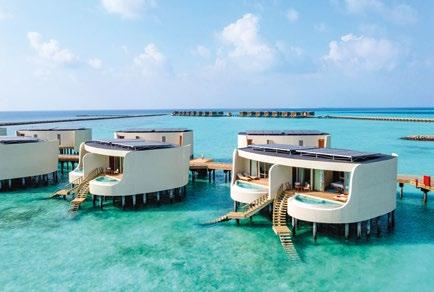
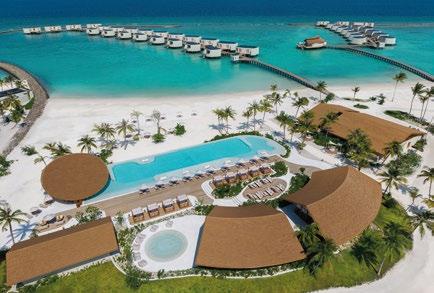
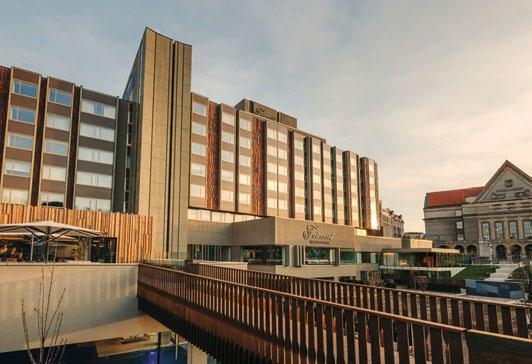

Once a modernist landmark, now a new beacon of luxury on the banks of the Vltava, Fairmont Golden Prague has reopened following a sweeping renovation that bridges Czech heritage with contemporary comfort. Set at the edge of Pařížská Boulevard in the city’s historic Old Town, the hotel occupies one of Prague’s most distinctive brutalist buildings—originally designed by architect Karel Filsak in 1974 and now reimagined by Marek Tichý with restored glass chandeliers, sculpted colonnades, and gilded details intact.
Inside, 320 rooms and suites balance clean-lined design with nods to Czech craftsmanship, while a curated art collection—spanning the 1960s to today—further roots the space in local culture. Six dining and drinking venues give guests ample choice for food and drink, from the rooftop fine dining of Zlata Praha to the cinematic Asian finesse of Golden Eye. Downstairs, Coocoo’s Nest, an homage to Miloš Forman’s cult classic, connects seamlessly with the in-house art gallery.
Wellness takes a front-row seat, too: the 1,400-squaremetre spa features a nature-integrated pool, serene garden, multiple saunas, and tailored treatments. For those seeking discretion, the Fairmont Gold ‘hotel within a hotel’ concept provides personalised service in a more intimate setting. With panoramic views, original design heritage, and an eye toward the future, Fairmont Golden Prague offers a stay that feels as timeless as the city itself.
Hotel Caesars New Orleans
Tucked inside the newly transformed Caesars Tower on Canal Street, Nobu Hotel Caesars New Orleans makes a strong and stylish entrance into the Louisiana city’s everevolving luxury scene. It’s the third collaboration between Nobu Hospitality and Caesars Entertainment, and though compact in scale—just 54 rooms and suites—the hotel makes an impression through its sharply honed details and signature Nobu simplicity.
CLOCKWISE FROM TOP LEFT Fairmont Golden Prague commands a prime position on the edge of Pařížská Boulevard in the city’s historic Old Town; reimagined by Marek Tichý, Fairmont Golden Prague’s interior features clean lines, elegant furnishings, and nods to the buildings 1970s heritage; like all Nobu properties, at the new Nobu Hotel Caesars New Orleans, Japanese minimalism dominates the design language.
The interiors, designed by Rockwell Group, blend Japanese minimalism with soft, contemporary accents, creating a calm, refined space that offers a welcome contrast to the sensory buzz of the surrounding French Quarter. From the upper floors, Mississippi River views stretch across the city, while inside, guests are greeted by an aesthetic that feels more Tokyo penthouse than Bourbon Street boutique.
Of course, food plays a starring role. Guests are just steps from Nobu New Orleans, where the brand’s hallmark dishes meet Southern influence—think local seafood, Louisianasourced ingredients, and a few regional nods woven into the classics. The hotel’s ideal location positions it as a go-to for travellers who want to be at the heart of the action without compromising on tranquillity or taste.

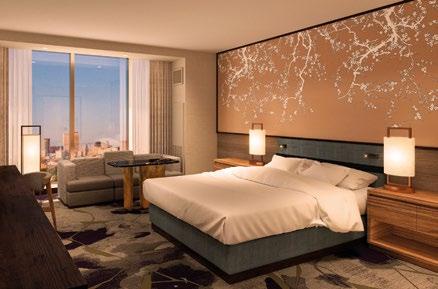
After two decades as an iconic barrier island retreat, The Ritz-Carlton Key Biscayne, Miami is undergoing a thoughtful redesign that honours its past while opening space for what’s next.
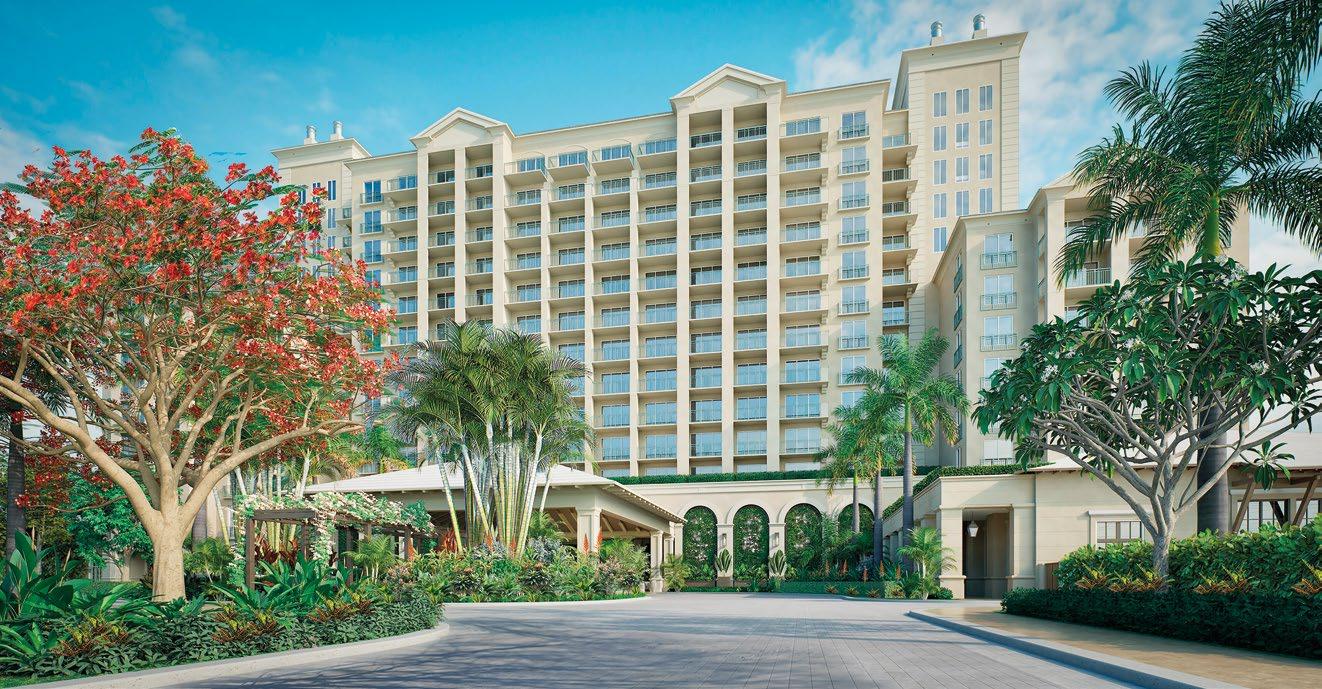
Across the bridge from downtown Miami, past the high-rises and the traffic, Key Biscayne might only be a stone’s throw from the mainland, but it feels like a world apart.
Lush, residential, and lulled by the lapping sea, the barrier island is home to one of the region’s most beloved resorts: The Ritz-Carlton Key Biscayne, Miami. And now, this South Florida icon is poised to turn over a new leaf.
Set to reopen in December 2025 following a $100 million transformation, the resort is being reimagined with a focus on balance—between past and present, natural beauty and modern design, and privacy and community. The intention is not to replace what guests have long cherished but to elevate it: preserving the signature warmth, sophistication, and beachside serenity that have defined the property since its debut in 2001.
Located at 455 Grand Bay Drive, The Ritz-Carlton Key Biscayne, Miami is sprawled across 17 oceanfront acres and rises 13 stories above 600 feet of private shoreline. It has long been a cornerstone of luxury hospitality in South Florida, offering a quiet, suburban alternative to the energy of downtown and South Beach. This next evolution reaffirms that role, introducing a new level of design, wellness, and gastronomy that speaks to how guests travel now, seeking not just a tranquil escape but a place to unwind and reconnect with themselves, their family, or friends.
The transformation is being led by architecture and design firms known for their ability to harmonise luxury with a sense of place. Hart Howerton, DesignAgency, and Chapi Chapo Design are collaborating to revamp both public and private spaces, drawing inspiration from the island’s
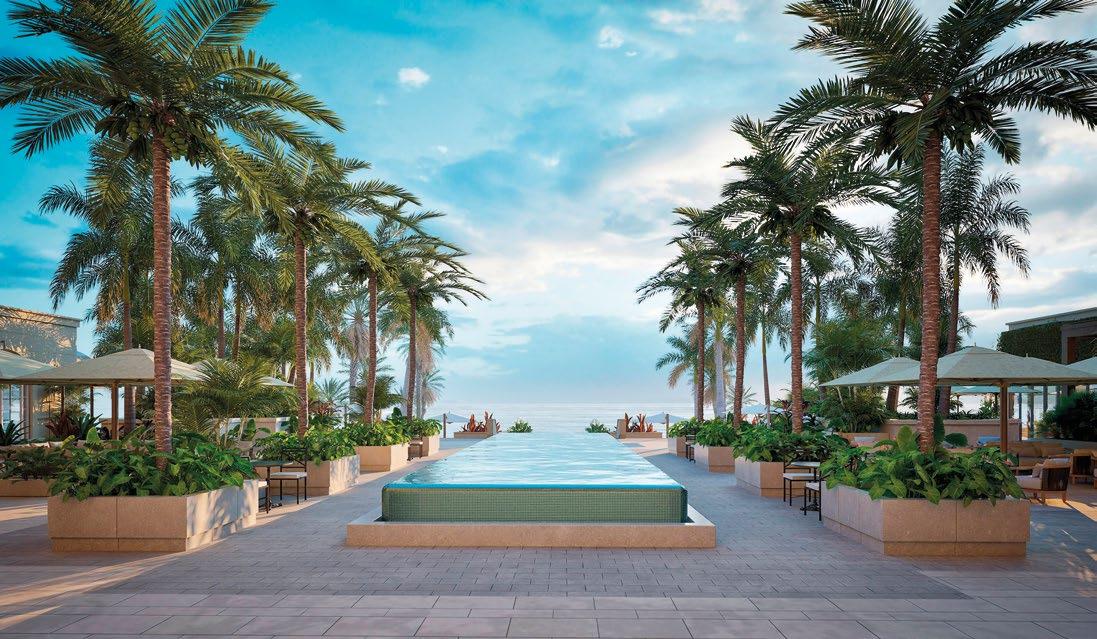
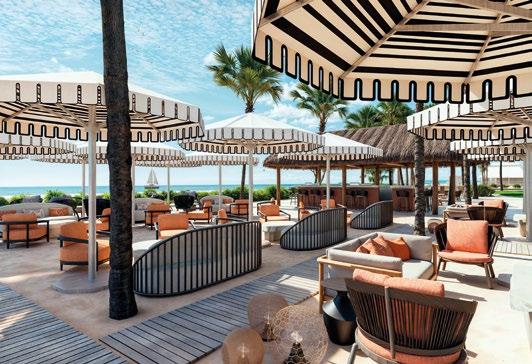
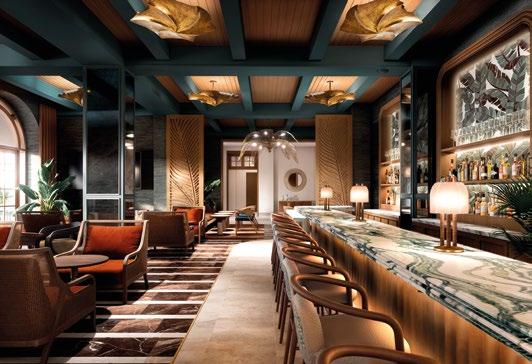
coastal surroundings. Interiors will feature soft furnishings, organic textures, and a palette that mirrors the colours of sand, sea, and sun. The result is an atmosphere that feels calm, considered, and deeply connected to its setting.
The redesigned lobby will introduce an east-facing glass façade that frames unobstructed views of the Atlantic, allowing guests to experience the landscape from the moment they arrive. Textured stone, warm wood, and layered natural materials will create a sense of fluidity between indoors and out. The new arrival experience is all about openness—welcoming guests with a visual and emotional cue that they’ve arrived somewhere luxurious and inviting.
Across the 420 redesigned guestrooms, the design will follow a similar narrative. Rooms and suites will be grounded in tactile simplicity—rich textures, light-filled
spaces, and design elements that feel curated without being too formal. It’s luxury made livable, meant to complement the surroundings rather than distract from them.
The sense of relaxation and rejuvenation continues into the newly reimagined spa, where treatments will draw from Key Biscayne’s native elements—mangroves, limestone, and saltwater. The spa’s design and offerings are shaped by the belief that restoration doesn’t always mean retreating, but instead arriving at a more attuned version of yourself—and this is felt from the moment one enters this beguiling building.
Outdoors, the hotel’s position on the island is matched by amenities that embrace it. A refreshed poolscape and Club Lounge beckon guests to linger longer in the sun. The Cliff Drysdale Tennis Centre—the largest tennis facility of any Ritz-Carlton property—remains a highlight, offering »
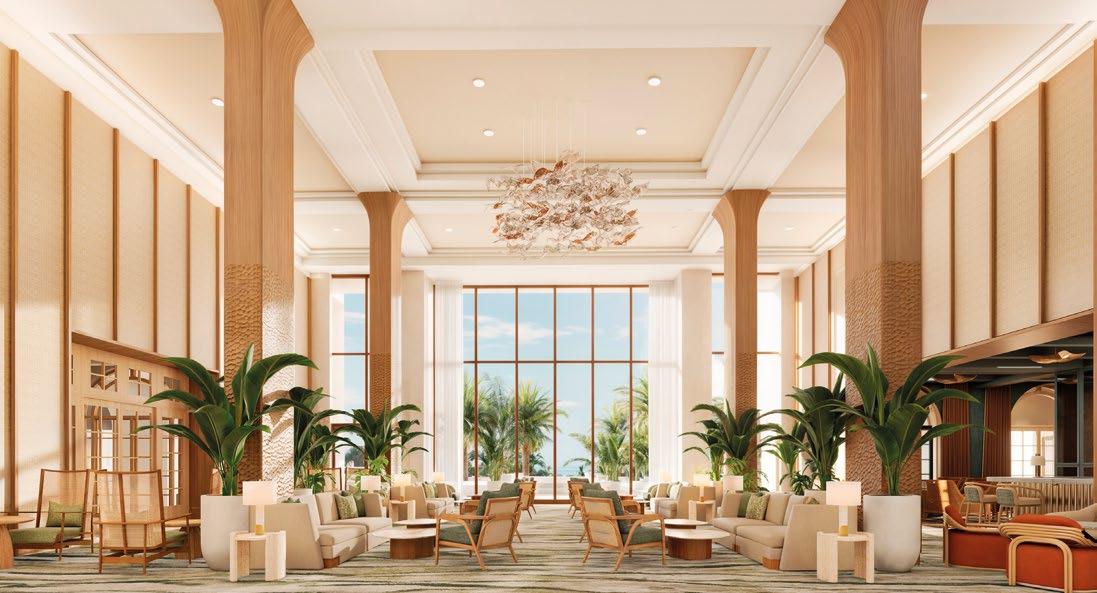
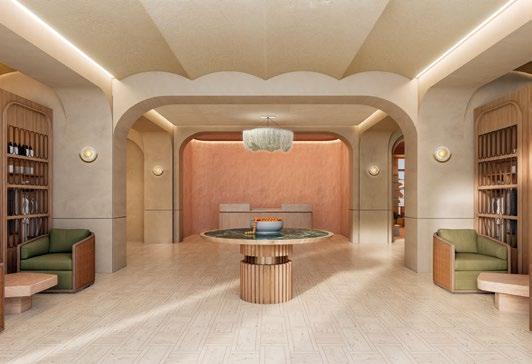

CLOCKWISE FROM TOP
« professional-grade courts and programming in a tropical setting. A state-of-the-art fitness centre and a private stretch of beach complete the picture of wellness with intention.
Dining will also celebrate the coastal setting with the introduction of a signature three-meal restaurant that offers a blend of seaside simplicity, sensory delight, and culinary depth. Six additional venues—including returning favourites like RUMBAR, Cantina Beach, Dune, Scoop, Stefano’s, and Key Pantry—will each bring their own personality to the table, allowing guests to move freely between casual, family-friendly options and more refined, immersive experiences. The culinary focus is on variety, quality, and locality.
While the resort is tailor-made for leisure, it doesn’t forget its place in the business world. With 37,000 square feet of flexible meeting and event space, it’s just as suited to corporate retreats as it is to destination weddings or
The new glass-fronted lobby is bathed in views of the Atlantic; all the refurbished rooms and suites are decorated in natural hues that complement the seaside setting; the spa is an oasis of calm clad in stone and wood.
family festivities. The varied indoor and outdoor areas are designed to feel integrated rather than separate, bringing a sense of ease and natural flow to each event.
For guests with families, the experience is set to be engaging without overwhelming. The Ritz-Kids programme has been completely reconceived, offering vibrant, hands-on learning spaces that encourage curiosity and interactive play. A new focal wall greets children as they step inside, and throughout the Kids Club, colours and materials have been chosen to stimulate imagination while providing moments of calm for adventurers of all ages.
More than anything, the next iteration of The RitzCarlton Key Biscayne, Miami is defined by its connection to the island. Every design choice, every experience, and every new element has been shaped by the idea that luxury is most powerful when it’s discreet, grounded, and honest. The goal isn’t to reinvent the destination but allow it to reveal itself in a new, more elevated and authentic way.
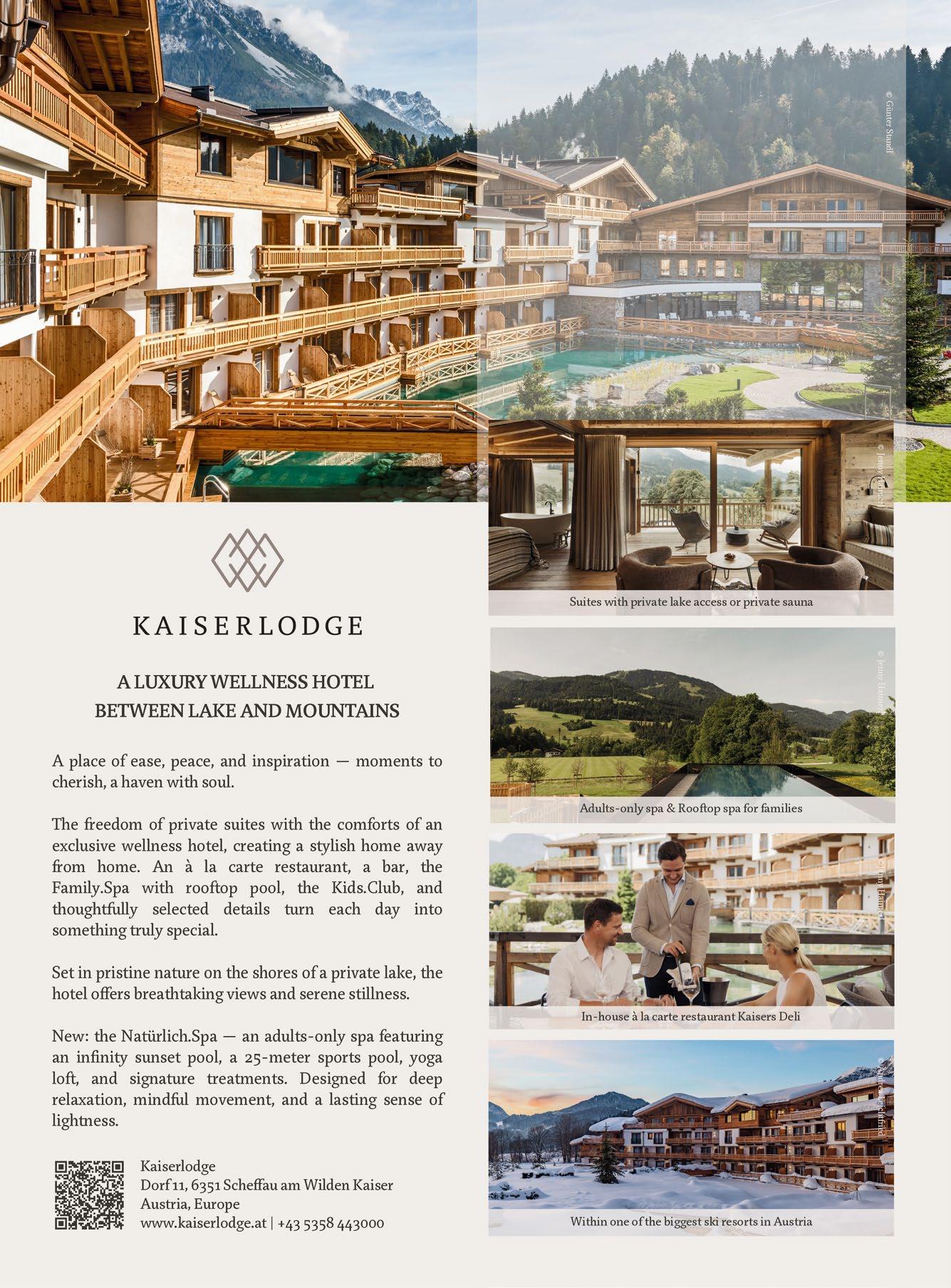


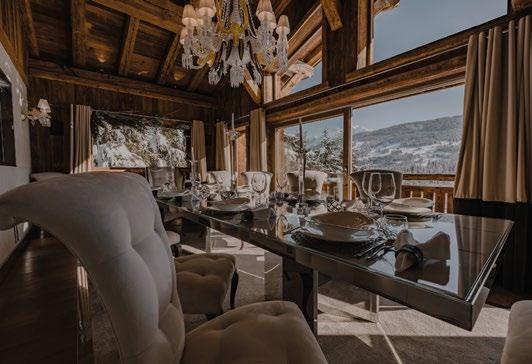
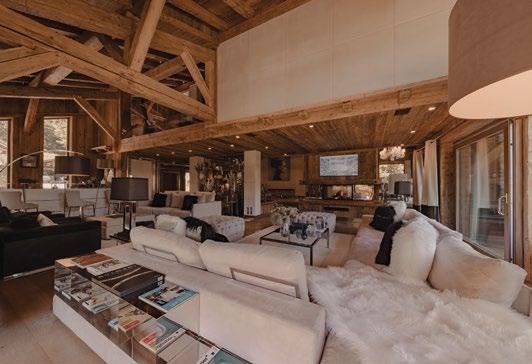

Two properties, two different landscapes, one philosophy of living well: welcome to Ultima Megève and Ultima Corfu—where luxury takes on new meaning in the mountains and by the sea.
Some escapes soothe, others transform, but the rarest breed offers both—crafted with such nuance and poise that it feels almost otherworldly. From the pine-fringed slopes of Megève to the crystalline coves of Corfu, the Ultima Collection doesn’t just offer places to stay; it curates places to be—fully, freely, and without compromise. Ultima Megève, a secluded sanctuary in the French Alps, is as far from a traditional chalet as it gets. This doubleresidence estate, nestled in the wild quietude of the HauteSavoie, reimagines mountain living as an ultra-luxurious playground for families or friends, or both. Imagine a private nightclub tucked beneath the snowline, an arcade for allnight nostalgia, and a wine cellar stocked with vintages begging to be discovered. Above all, it’s a home—if your
CLOCKWISE FROM TOP
LEFT Ultima Megève holds a prime position in Haute-Savoie, overlooking the majestic French Alps; meals at Ultima Megève are prepared by an in-house chef; Ultima Megève boasts an array of wellness facilities, including an indoor-outdoor pool, hammam and fitness suite; with an abundance of space, Ultima Megève is the perfect retreat for friends and family.
idea of home involves two chalets linked by a private spa, complete with a hammam, fitness suite, hair salon, and indoor-outdoor pool that reflects the peaks of Mont Blanc. What sets Ultima Megève apart, beyond the fireplaces clad in bronze and the marble finishes cast in soft gold, is the feeling of immersion. There’s no line between inside and out; your concierge might arrange a massage one hour and map out a hiking trail the next. Days unfold on your own terms, whether that means chef-prepared picnics on the terrace, ski adventures across 325 kilometres of pristine slopes, or cinematic evenings beneath a blanket of Alpine stars.
Ultima Collection’s brilliance doesn’t stop at the summit, however. Follow the sun south and you’ll arrive—by boat, of course—at Ultima Corfu, a villa estate that unfurls down an


emerald hillside toward the Ionian Sea. From the moment your feet touch the villa’s private dock, the rest of the world melts away.
Set over three levels with sweeping views of the Greek and Albanian coastlines, Ultima Corfu boasts six suites that accommodate twelve guests, each featuring its own dressing room, bathroom, and a panoramic view. There’s no need to overplan here. With a private chef, butler, housekeeping, and spa therapists on hand, days evolve naturally—from yoga on the waterfront terrace to shared laughter over seafood barbecues or open-air cinema screenings under a pastel-painted sky.
Wellness is also woven into every detail of Ultima Corfu. Whether in the villa’s two heated pools, the stone-lined hammam, or the waterfall spa, the atmosphere invites moments of pause and reflection. Guests often oscillate between detox and indulgence—sunrise smoothies and sunset cocktails, meditation and moonlit swims, all made effortless by staff that anticipates without intrusion.
At both properties, the service is signature Ultima Collection: a blend of discretion and intuition that feels less like the work of employees and more like an extension of your own family. There’s a fine line between luxury and intimacy, and the Ultima Collection team has mastered walking it.
What unites these two worlds—one Alpine, one oceanic—is the belief that true luxury lies in the freedom


to live unhurried. Whether it’s the crackle of a fire in Megève or the gentle lapping of waves in Corfu, Ultima Collection invites its guests to slow down, settle in, and sink into the most coveted comfort of all: time, beautifully spent.
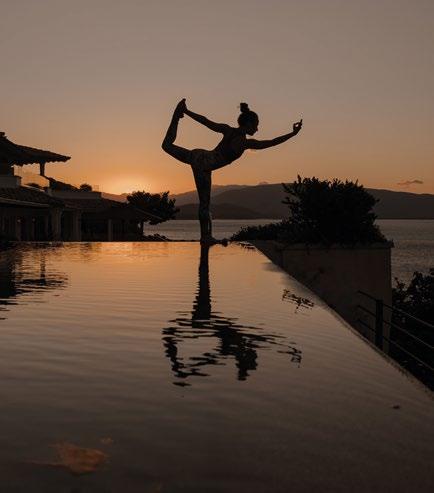
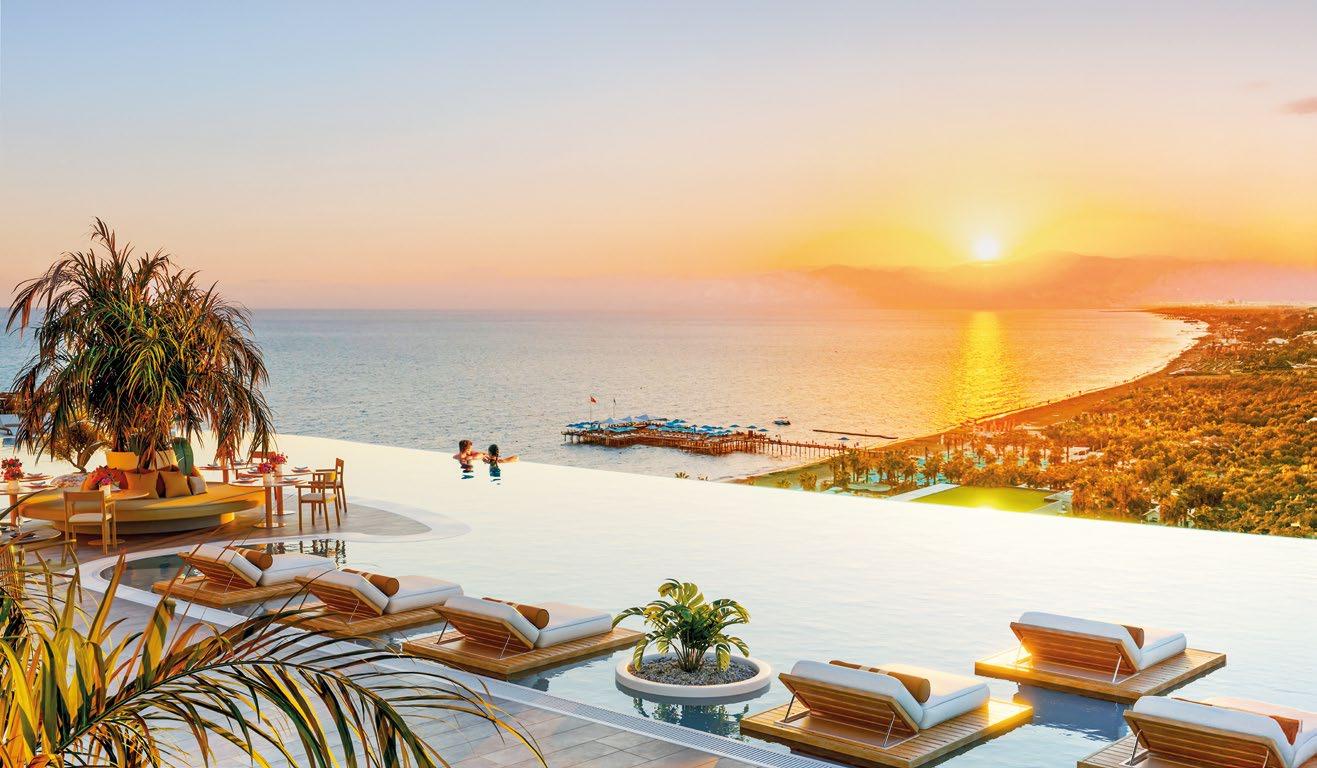
Perched above Antalya’s shimmering shoreline, Regnum The Crown delivers a new perspective on Mediterranean luxury complete with all-suite accommodations, global flavours, and the city’s first rooftop infinity pool.
There’s luxury, and then there’s Regnum.
For those already acquainted with Regnum Carya—the expansive, design-led retreat set amid Belek’s sun-drenched coastline—the name alone conjures images of wide terraces, pristine private beaches, and round-the-clock indulgence. But summer 2025 marks a new chapter for the brand: Regnum The Crown is bursting onto the scene, and with it, offers an elevated take on what the modern resort experience can be.
Set to open as a seamless extension to its awardwinning sibling, The Crown will distinguish itself not through grandeur alone, but through precision. Every element has been engineered for impact. The all-suite concept, for example, goes far beyond a room category.
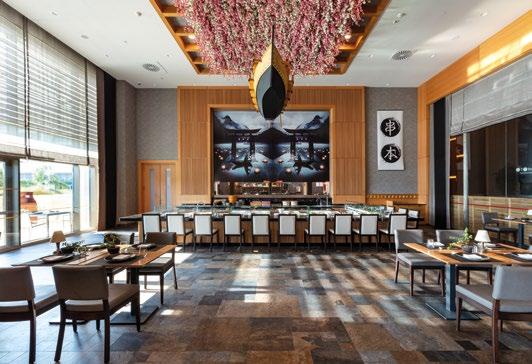
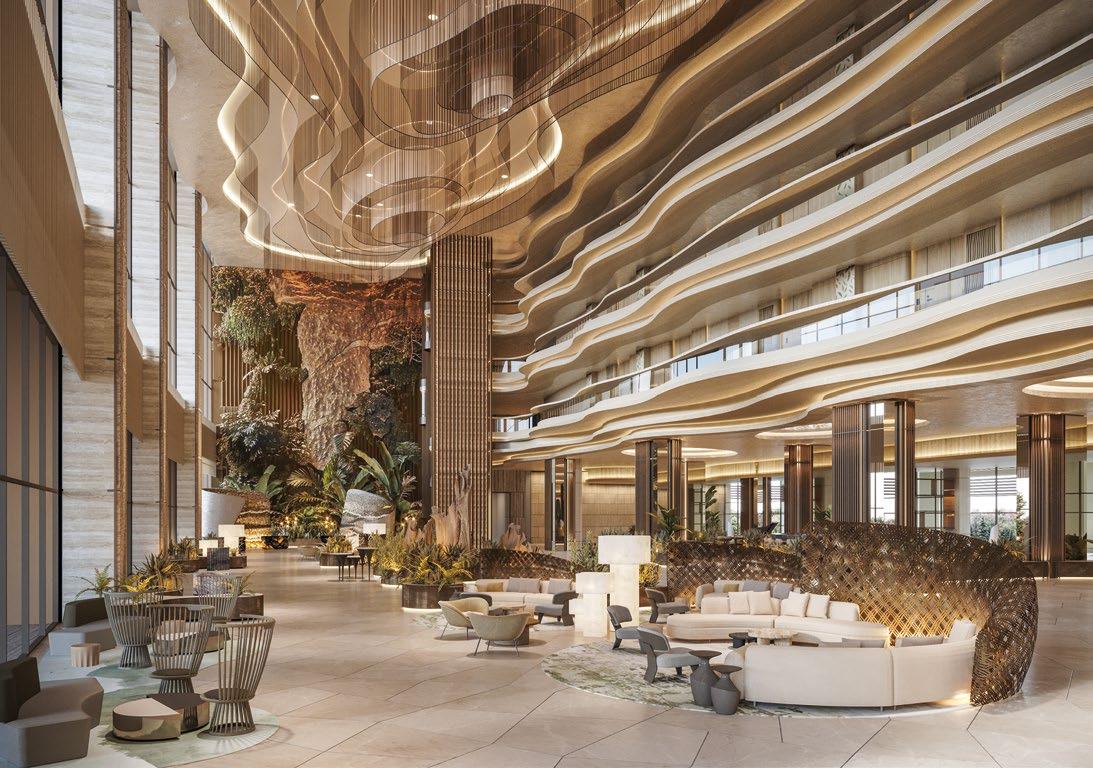
Here, the smallest suite measures in at 110 square metres, and the largest stretches to a staggering 1,700 square metres—spaces more akin to high-end residences than hotel accommodations. An array of privileged services further adds to its appeal: helicopter transfers, private butlers, in-suite chefs, and full household support—housekeepers, bartenders, even bespoke event staff—can be arranged upon request.
Another standout feature—and sure to be one of the most photographed—is Antalya’s first and only rooftop infinity pool. Paired with a gourmet restaurant and members-only fitness club, the rooftop will become a destination unto itself. It’s a daring move in a region already dense with upscale properties but one that Regnum seems uniquely positioned to pull off. The architectural language is refined yet unpretentious, favouring natural materials and organic textures over glossy surfaces. This is understated elegance on a grand scale.
Of course, no Regnum property would be complete without a serious food game. The Crown’s culinary programme continues the brand’s tradition of breadth and quality while adding new global flair to the mix. Guests can expect a curated range of international cuisines—from vibrant Mexican to richly spiced Arabic and traditional Slavic offerings—each handled with respect and skill. It’s a far cry from the tired buffet trope that haunts so many five-star hotels. This is dining designed to excite.
For those familiar with the Regnum experience, the connective thread between The Crown and Carya will come as welcome news. Guests of either property can move freely between the two, gaining access to a full suite of activities and services. That includes everything from the Carya Golf Club—host of the Turkish Airlines Open and Europe’s only floodlit championship course—to the resort’s private concert arena, which has seen performances by icons like Jennifer Lopez, Christina Aguilera, and Ricky Martin. »
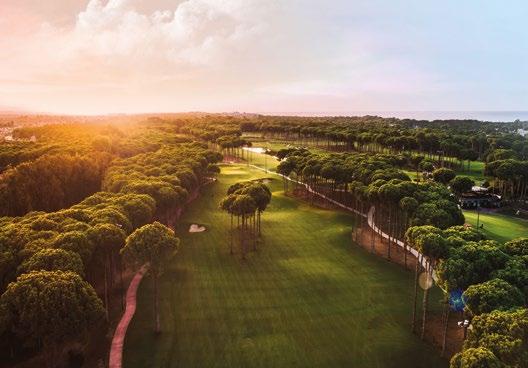
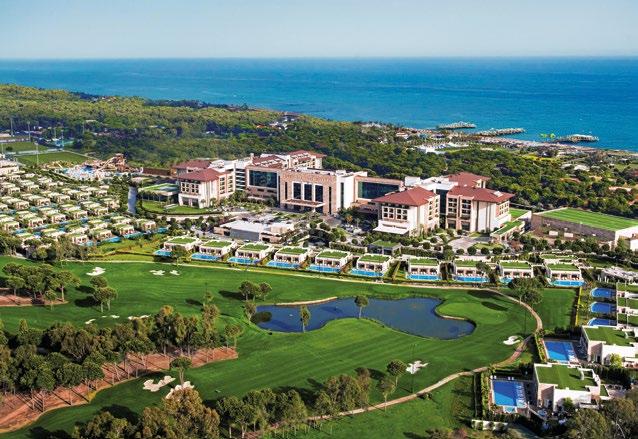
« It’s also worth noting that Regnum has proudly become a hub for large-scale events and private functions. With a convention centre that accommodates up to 2,000 guests and a history of hosting world leaders during the G20 Summit, it offers serious potential for high-end conferences, impressive product launches, and fairytale weddings, particularly during Belek’s milder winter season.
Yet Regnum The Crown isn’t just about splashy amenities or star-studded guest lists. What sets this project apart is a sense of intention. The sustainability ethos that underpins Carya has been carried forward, with a focus on eco-conscious materials, green energy use, and minimalimpact design. It’s not a greenwashing gesture—it’s part of a larger, holistic philosophy that defines the brand’s evolution.
That same all-encompassing philosophy extends to wellness. Beyond the private rooftop club, The Crown will

offer exclusive spa rituals and rejuvenation experiences tailored to the property’s atmosphere: private, calm, and deeply restorative. Meanwhile, the 5,000-square-metre spa at Regnum Carya, featuring a Technogym fitness centre and full wellness programme, also remains within easy reach. Whether it’s a sunrise yoga session overlooking the sea or a tailored fitness regime designed by elite trainers, this isn’t wellness as a box-ticking exercise—it’s wellness as a lifestyle.
The setting, of course, does much of the heavy lifting. Belek’s Mediterranean coastline is no stranger to luxury, but Regnum has always made the most of its natural advantages, like the fact that it receives 300 days of sunshine a year. The new resort will feature a Caribbeanstyle seawater pool—an oasis in its own right—and is set against a backdrop of manicured gardens, mature trees, and striking water features.
CLOCKWISE FROM ABOVE
While Regnum The Crown is undoubtedly geared toward couples and jet-setters seeking privacy and tranquillity, it will still benefit from the family-friendly DNA of its larger ecosystem. Guests will be able to access everything from aquaparks and kids’ clubs to the Real Madrid Foundation summer clinic, offering families a rare opportunity to blend five-star relaxation with world-class youth programming. Notably, guests of Regnum Carya have exclusive access to the nearby Land of Legends Theme Park with unlimited, complimentary entrance and shuttles. Babysitting services and thoughtful inclusions like baby care items and child-friendly dining further ensure that no guest feels overlooked.
With the opening of The Crown, Regnum has sought to preserve the brand’s signature pillars of exceptional service, first-class facilities, and gourmet dining, delivered as part of a more intimate, all-suite experience. And while The Crown will serve as a new standard in Turkish hospitality, its spirit remains grounded in the same principles that first defined Regnum Carya back in 2014: thoughtful design, authentic connection, and a reverence for nature. Even the name “Regnum”—Latin for “kingdom”—is a nod to enduring strength, while “Carya”, referring to the hickory tree, signals deep-rooted resilience. Together, these ideas form the foundation on which The Crown has been built: steadfast, timeless, and ready to evolve.


With just 72 rooms and a mix of culinary worlds led by some of France’s finest chefs, Cheval Blanc Paris feels like a true urban retreat, rooted in place yet in a class of its own.


Rising above the Right Bank in the exquisitely restored silhouette of La Samaritaine, Cheval Blanc Paris brings new life to one of the city’s most iconic Art Deco buildings. With the Seine gliding past its doorstep and the Louvre just steps away, this 72-key hotel offers a hidden retreat in one of the world’s most enchanting cities.
Opened in 2021, the Parisian Maison was envisioned to bring together past and present, honouring tradition while infusing the space with a contemporary energy. Interiors by Peter Marino pair Art Deco motifs with custom-designed furnishings, rich palettes, and a mix of expressive vintage and commissioned artworks that speak to the building’s 1930s heritage. Floor-to-ceiling windows pull the city inside, framing shifting light and sweeping panoramas from the Eiffel Tower to NotreDame. Suites are designed not as showpieces but as living spaces: generously proportioned, serenely residential, and unashamedly comfortable.
The service also makes guests feel at ease. Here, Ambassadeurs—never simply staff—anticipate, adapt, and tailor each guest’s stay with care that feels both natural and meticulously thought through. There’s no formula, only intuition, attention, and time well spent.
That same spirit threads through the Maison’s culinary universe. Plénitude, the three-Michelin-starred restaurant helmed by Arnaud Donckele, is an exploration of taste built around the alchemy of sauces and the seasons. Le Tout-
CLOCKWISE FROM TOP LEFT Cheval Blanc Paris is located just steps from the Louvre and Pont Neuf; the Maison’s Art Deco-inspired interiors were envisioned by Peter Marino; the 72 rooms and suites are havens of calm.
Paris, a sunlit brasserie with a one-star distinction of its own, serves up a dose of classic Parisian conviviality while Langosteria delivers Italian generosity with Mediterranean flair—and a terrace that seems designed for goldenhour moments.
Most recently, Hakuba has added a different tempo to the mix. On the ground floor, beneath low lighting and sculptural woodwork, chefs Arnaud Donckele, Takuya Watanabe, and Maxime Frédéric craft a layered ode to Japanese tradition. The Omakase menus—always carefully

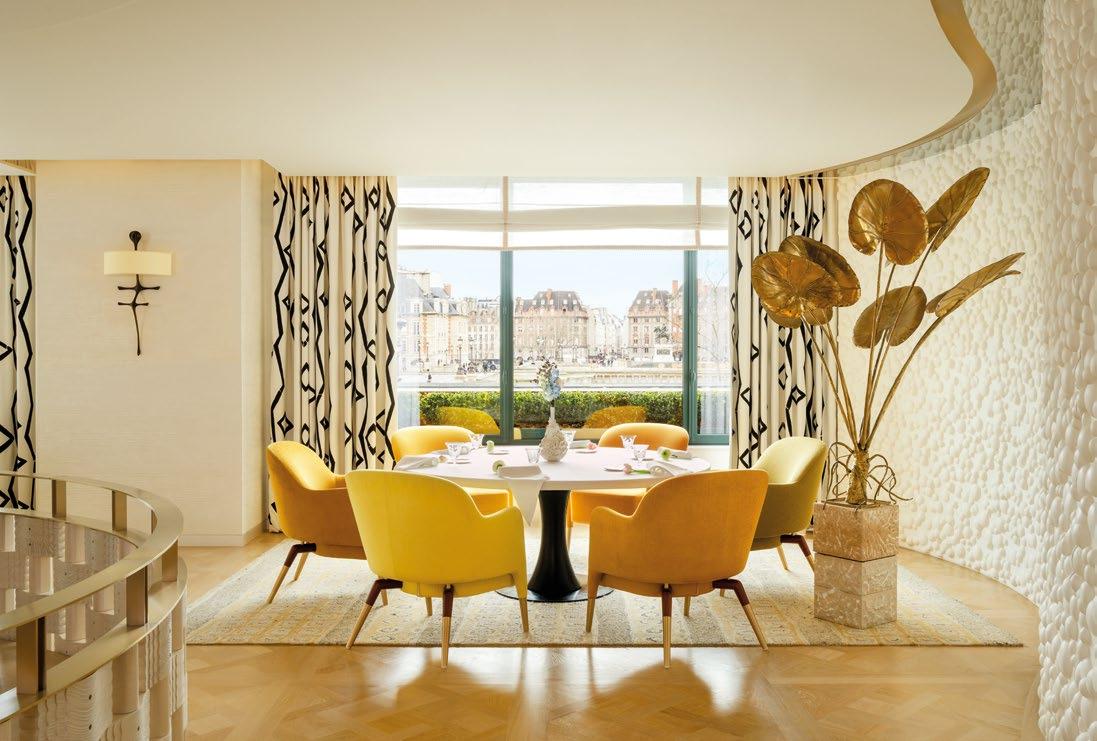
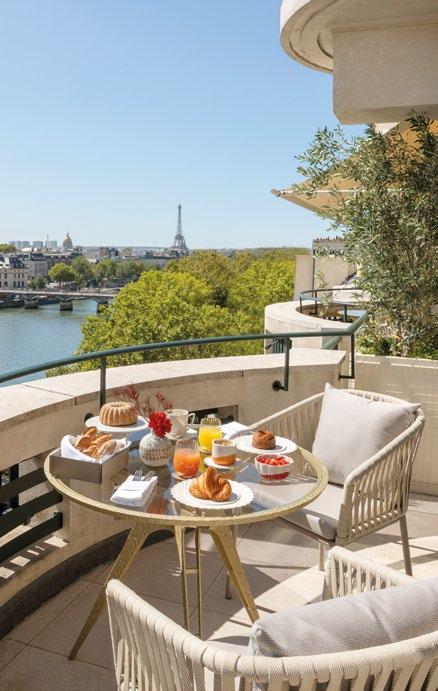
composed, sometimes surprising—unfold like narratives. Soba, sushi, sauces, and mochi are paired with rare sakés and French wines, all served across three intimate counters where the line between chef and guest softly dissolves.
On the seventh floor, another kind of escape awaits. Le Jardin is Cheval Blanc Paris at its most playful—a 650-square-metre rooftop terrace dressed in red, white, and sunshine yellow. Shrubs, thyme, basil, and cherry tomatoes perfume the air. Table football and postcard moments collide with sundowners and Provençal sharing plates. It’s a garden party in the sky, open all summer and entirely its own.
For those seeking calm, the Dior Spa Cheval Blanc offers a shift in gear. Spread across six exceptional suites—each designed for a particular kind of sensory experience—it’s more than a spa; it’s a physical embodiment of Maison Dior’s philosophy. The Bonheur Suite, the New Look Suite, and the Sauvage Suite each bring a unique cadence to the wellness ritual, while a shimmering 30-metre mosaiclined pool invites a leisurely swim. A private fitness studio and a Rossano Ferretti hair salon complete the comprehensive offering.
In this pocket of Paris, nothing feels imposed. Instead, Cheval Blanc Paris creates space—emotional and physical— for guests to settle into their own pace, whether that’s over morning coffee with the Seine for company, a private dinner orchestrated à la minute, or a quiet moment in one of the Maison’s gallery-like salons.

Tucked beneath the jagged spires of the Latemar and the fiery-rose Catinaccio massifs in South Tyrol, Carezza’s location alone would be enough to impress. Add to that a spirit of genuine hospitality and a proud local-first philosophy, and this becomes an alpine destination apart.
Designated a UNESCO World Heritage Site, the Dolomites have long captivated climbers, poets, and artists with their ethereal beauty and shifting seasonal charms. There are few places on Earth that can successfully capture the same sense of magic year-round: from the snow-dusted peaks of winter to lush, vibrant summers. But Carezza, a lesser-known corner of South Tyrol’s dramatic terrain, manages to do just that.
Set against the southern edge of the imposing Rosengarten massif, right in the heart of the Eggental valley, Carezza remains refreshingly untouched by mass


tourism. Its name, which fittingly means “caress” when translated from Italian to English, beautifully encapsulates the area’s blend of rugged alpine beauty and heartfelt hospitality. And although it may look like it’s been plucked from a fairytale, it’s no postcard cliché; Carezza remains authentic and full of life, with a true sense of place that can be seen and felt at every turn.
This pride in provenance is so ingrained in the South Tyrolean mindset that it’s apparent even before arrival. Onboard SkyAlps, passengers are served locally produced wines and snacks, while the in-flight magazine offers engaging stories rooted in the region—like the history behind Loacker biscuits, crafted just a short drive from where you’re headed. From Bolzano Airport’s mountainframed tarmac, the road to Carezza climbs steadily through vineyards that spill down cliff edges, past stacks of larch trunks and timber huts wedged into forested slopes, between wildflower-dotted meadows and rivers rushing in glacier-blue hues. Each twist in the road takes you deeper into a landscape that feels at once wild and welcoming.
A destination for all seasons, Carezza’s appeal in summer lies in the variety of ways you can engage with it. Some visitors arrive with hiking boots, backpacks and walking poles, eager to tackle the trails that crisscross the Latemar and Rosengarten ranges. Others come to find solace in leisurely wellness experiences amid pristine nature, strolling through forests, swimming in cool mountain lakes, and sweating in pine-perfumed saunas. Most inevitably come to do both.
An address that perfectly embodies this combination is Cyprianerhof, a five-star retreat at the base of the majestic
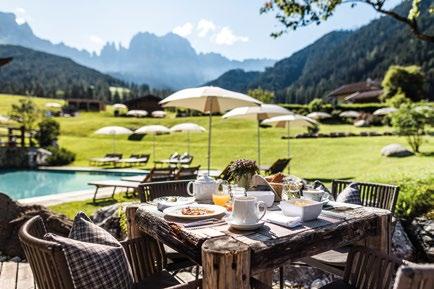

CLOCKWISE FROM TOP
LEFT The Cabrio Cable Car in Tiers offers a breathtaking ride to the Rosengarten massif; the natural bathing pond at Cyprianerhof © Globusliebe; breakfast by the pool at Cyprianerhof © Niederkofler Hannes.
Rosengarten peaks. “We are not a wellness hotel—we encourage activity. We call it tension and distension; movement in nature followed by relaxation and recovery,” says General Manager Diego. Since the 1960s, the Damian family has thoughtfully nurtured this former family-hometurned-guesthouse into an oasis of mountain hospitality, elegantly fusing architecture, philosophy, and relaxation. Rooms are pared-back and warm, furnished with local stone and larch, and many with balconies bathed in views of the serrated limestone peaks. At Similde Spa, wellness also takes its cue from nature, featuring a natural bathing pond, panoramic glass-fronted saunas, and products infused with healing alpine herbs.
But before indulging in the seemingly ceaseless list of relaxing rituals, guests are encouraged to spend their days outdoors—and the majority do, either heading out solo or joining daily guided hikes led by the Cyprianerhof team. The adventure often begins just steps away from the hotel, aboard the Tiers Cabrio Cable Car, an exhilarating double-decker, open-air gondola—the first of its kind in Italy—that ascends 800 metres in just seven minutes. On clear days, the ride offers unobstructed 360° views stretching all the way to Catinaccio’s rocky crown and the surrounding summits, where pale stone glows gold »
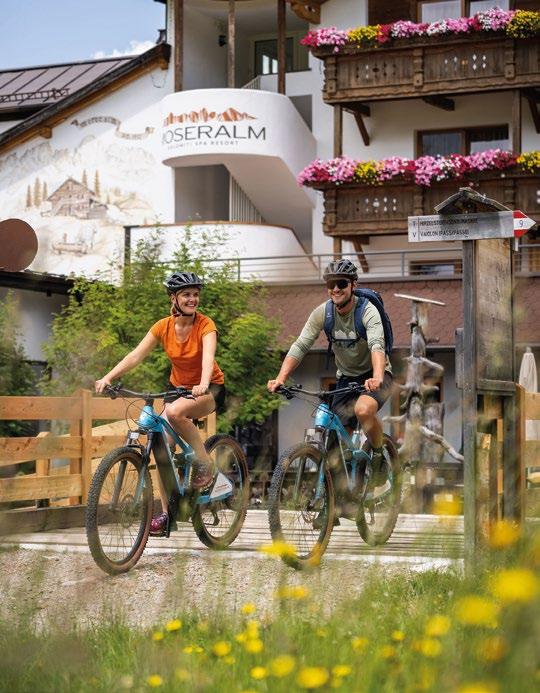
« and pink in the shifting daylight—a phenomenon locals call enrosadira. At the top, trails fan out in all directions. Some gentle, some demanding, all beautiful. A circular route offers just enough effort to earn lunch at Laurins Lounge—the highest panorama lounge in South Tyrol, perched at 2,300 metres—where a taste of the Eggental is served at altitude. A glass of local wine and a plate of moreish handmade beetroot dumplings are reminders that this region’s identity isn’t just shaped by its mountains but by its farms and kitchens, too.
Back at Cyprianerhof, this sentiment is reinforced. Monica, daughter of the Damian family, works with her trusted team to merge Mediterranean influences with culinary traditions from Austria and South Tyrol. Much of the produce is grown in a shared regional garden, while meat is

CLOCKWISE FROM LEFT E-bike tours from Hotel Moseralm © Daniel Demichiel; Hotel Moseralm holds an enviable position between the Rosengarten range and Lake Carezza © Gabriel Eisath; Hotel Moseralm boasts an array of wellness facilities and treatments © Daniel Demichiel.
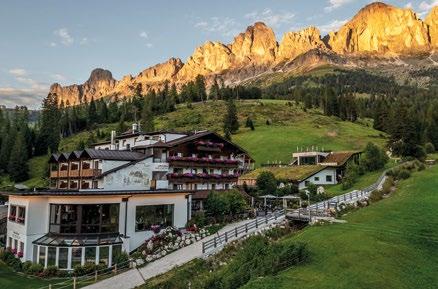
sourced whole, encouraging the chefs to work respectfully and with skill. After dinner, guests can look forward to weekly concerts, held outdoors or in an intimate salon, personally curated by Diego, an opera singer himself. “We want to give guests something unexpected,” he explains. “Of course, people don’t expect to come to the mountains and listen to opera, but if it’s delivered in a good way, they’re really happy about it.” Under his leadership, the hotel has become a stage for music and art, and this all forms part of Cyprianerhof’s wider philosophy. Coined “Cultura Dolomiti”, this holistic ethos enriches every stay through curated events, creative pursuits, and communal connection.
Further along the plateau, the historic Hotel Moseralm offers a more laid-back pace. Once a modest mountain inn, it now boasts a new adults-only spa that rivals any in the region. Vast and bright, it features glass-walled relaxation rooms, an impressive circuit of themed saunas, and a sky pool that appears to spill into the valley. The views from here are relentless: alpine pastures, larch forests, and the towering Rosengarten range right on your doorstep, making the hotel feel rooted—literally and philosophically—in its surroundings.
Hotel Moseralm also excels in promoting outdoor pursuits, particularly e-bike tours that wind through the endlessly scenic landscapes. A favoured track takes visitors past meadows and shaded paths, pausing at Baita Häusler Sam, a rustic hut famous for its hearty Ladin cuisine and incomparable mountain views, before ending at Lake Carezza—a small spring-fed alpine lake renowned for its jewel tones and folkloric charm. According to legend, a sorcerer once shattered a rainbow here in a failed attempt to impress a mermaid, scattering colours into the water. True or not, the lake holds its spell. Its hues move with the light—from emerald to turquoise and deep indigo—and on a windless day, its mirrored reflections of the looming Latemar peaks are startlingly vivid.
Even with so much natural beauty on offer, Carezza remains remarkably peaceful during the peak summer season. Trails are uncrowded, allowing visitors ample space to pause, reflect, and immerse themselves fully in their surroundings. There’s an unspoken respect here, an understanding that nature comes first, and every effort is made to protect the integrity of this extraordinary place. And thanks to direct flights from London Gatwick to Bolzano with SkyAlps, reaching this quiet pocket of the Dolomites at any time of the year has never been easier.

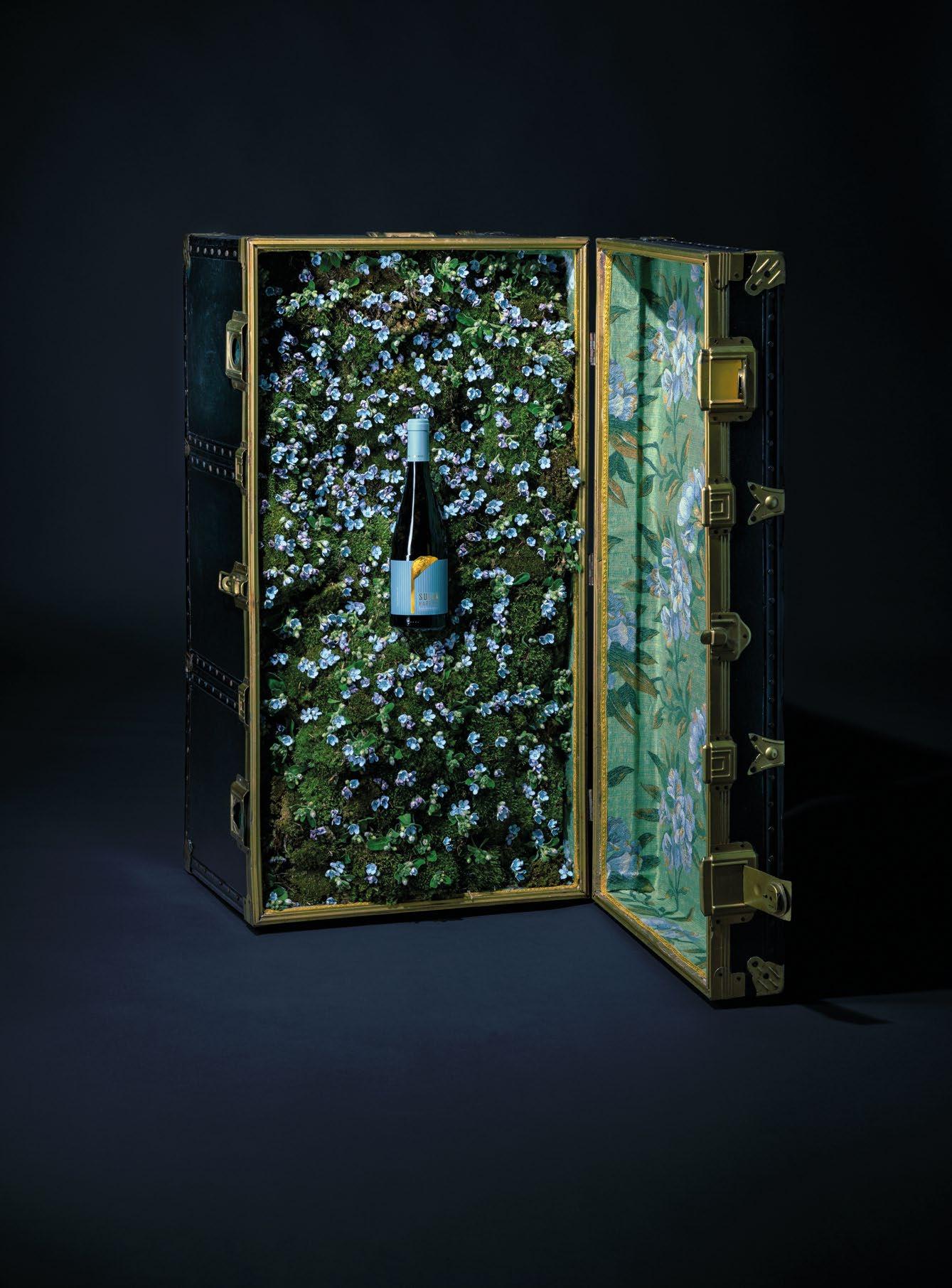

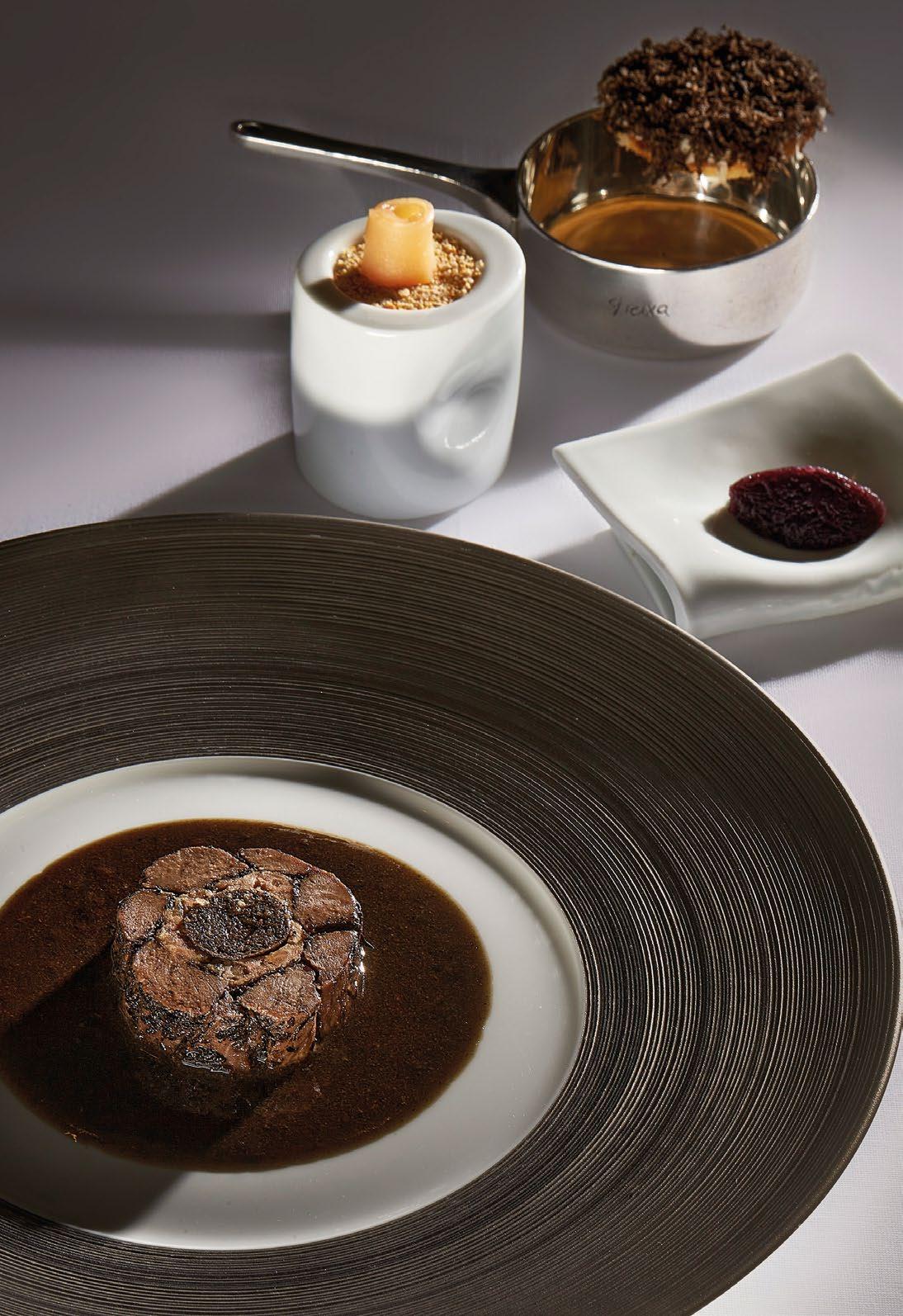
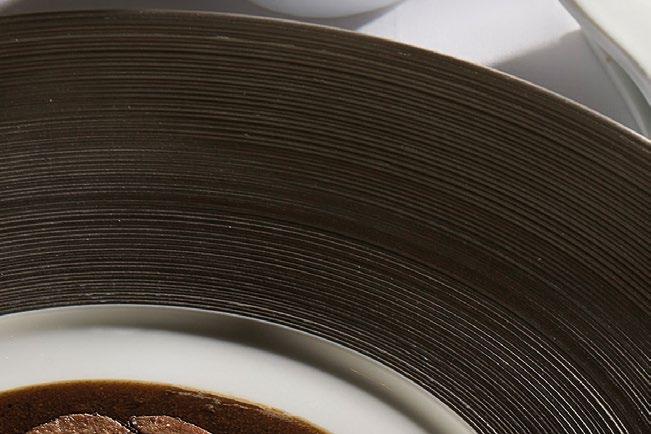

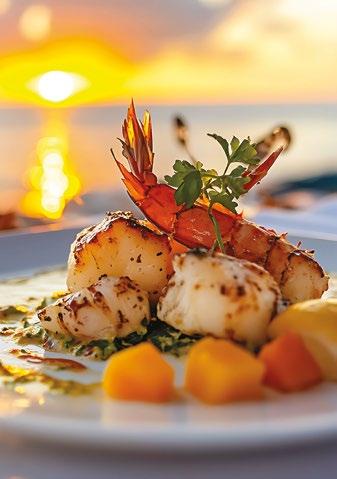
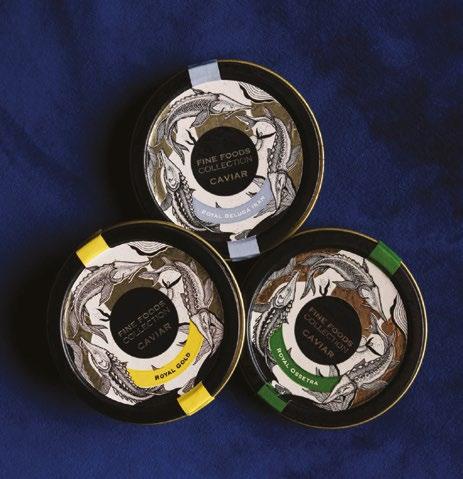

CAVIAR - TRUFFLES - RARE SEAFOOD - CHOCOLATES & SWEETS
FOIES GRAS & PATE - PANETTONE - GIFTS & HAMPERS
OUR PARTNERS












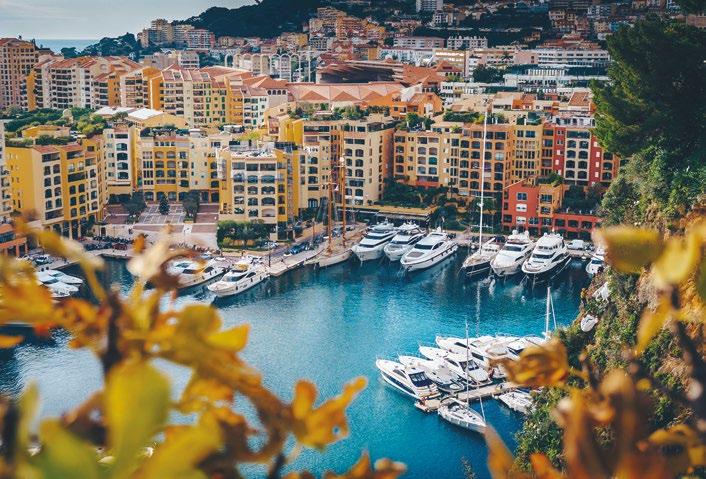

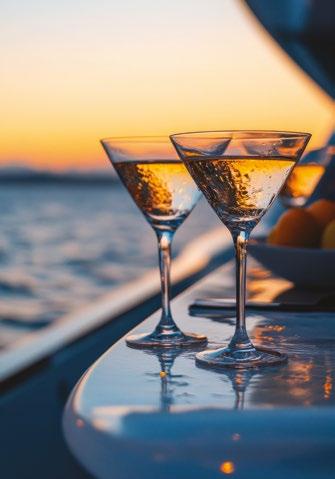
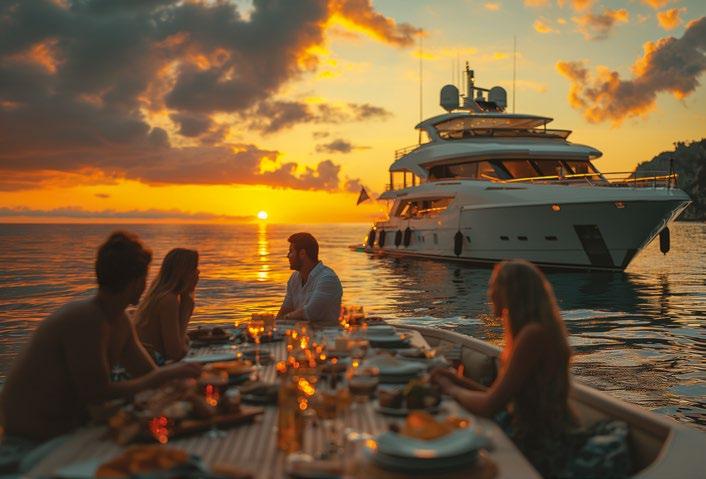
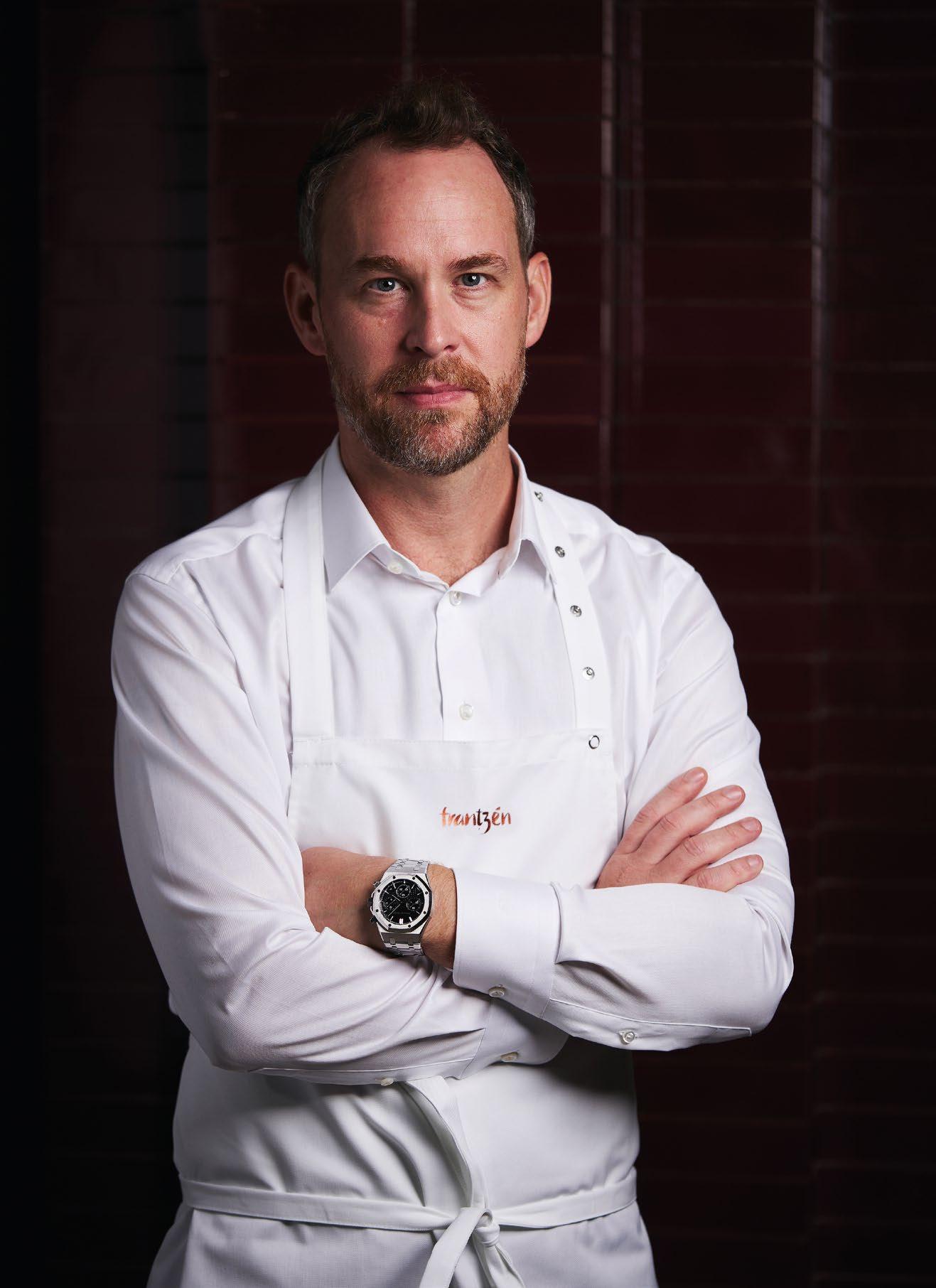
What does it take to open a three-Michelin-starred restaurant in three different countries? For globally acclaimed Swedish chef Björn Frantzén, the answer lies in craftsmanship, curiosity, and an unrelenting pursuit of excellence.
When Björn Frantzén opened his restaurant Frantzén in Stockholm in 2008, he set in motion not just a culinary vision but a global standard. What began as an audacious attempt to fuse modern European cooking with Japanese influences quickly evolved into something extraordinary. In just a year, Frantzén earned its first Michelin star. A second followed, then a third—making it the first restaurant in Sweden to reach that milestone. Today, Frantzén sits at No. 38 on the World’s 50 Best Restaurants list and remains a lodestar for chefs and gourmands alike. But what truly distinguishes Björn Frantzén isn’t only the accolades— it’s his unwavering pursuit of innovation, emotional connection, and culinary storytelling.
That ambition now stretches across countries and continents, from Stockholm to Singapore, Hong Kong to Bangkok, and most recently, to the glittering shores of Dubai. With the launch of FZN at Atlantis, The Palm, Frantzén has achieved something few chefs ever will: three three-Michelin-starred restaurants in three different countries. “FZN is the sibling to my three-Michelin-star restaurants, Frantzén in Stockholm and Zén in Singapore,” he explains. “The idea of FZN is stepping into my home.”
That mantra shapes every element of the FZN experience. Designed across two floors, the journey begins in a refined living room with canapés and a welcome drink, followed by a guided ‘house tour’ that transitions guests into
the dining room for a nine-course tasting menu. To close the evening, guests move once more—this time for petit fours and post-dinner drinks. “The FZN dining experience is a journey,” says Frantzén. “It starts light and welcoming with canapés served in one spot—a little hello that sparks your curiosity. Then you move for the main courses, each bringing something new and surprising. Finally, you move again for the petit four—a sweet way to end the meal feeling satisfied. It’s all about a smooth flow. The interactive dining format was very intentional. We want guests to go beyond just eating. Food is social, and by integrating interactive elements like tableside preparation and storytelling, we turn diners into active participants. This makes the experience memorable.”
Like its siblings, FZN reflects a deeply personal design language rooted in Swedish craftsmanship and legacy. Frantzén has always treated the venue as an ingredient in itself, and the Dubai restaurant is no different. “FZN is a completely immersive and exclusive experience,” he says. “The space is designed to encourage guests to navigate through different sections, from a living room to a dining room and the 18-seat terrace, offering views of the Dubai skyline. We really wanted to experiment with the space like we’ve done in Stockholm, and luckily, Atlantis, The Palm agreed.”
The ambience, too, is carefully orchestrated. A playlist of 300 personally curated tracks offers a sonic palette that leans toward the unexpected. “Music is a big part of the guest »
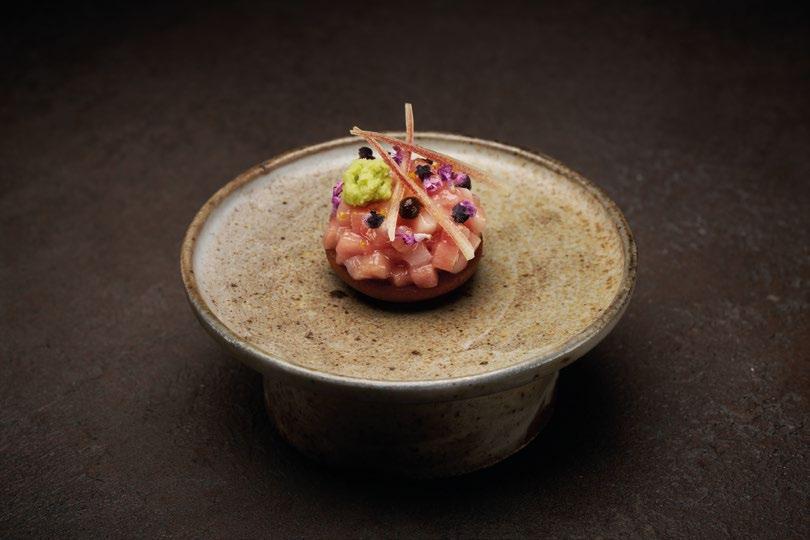
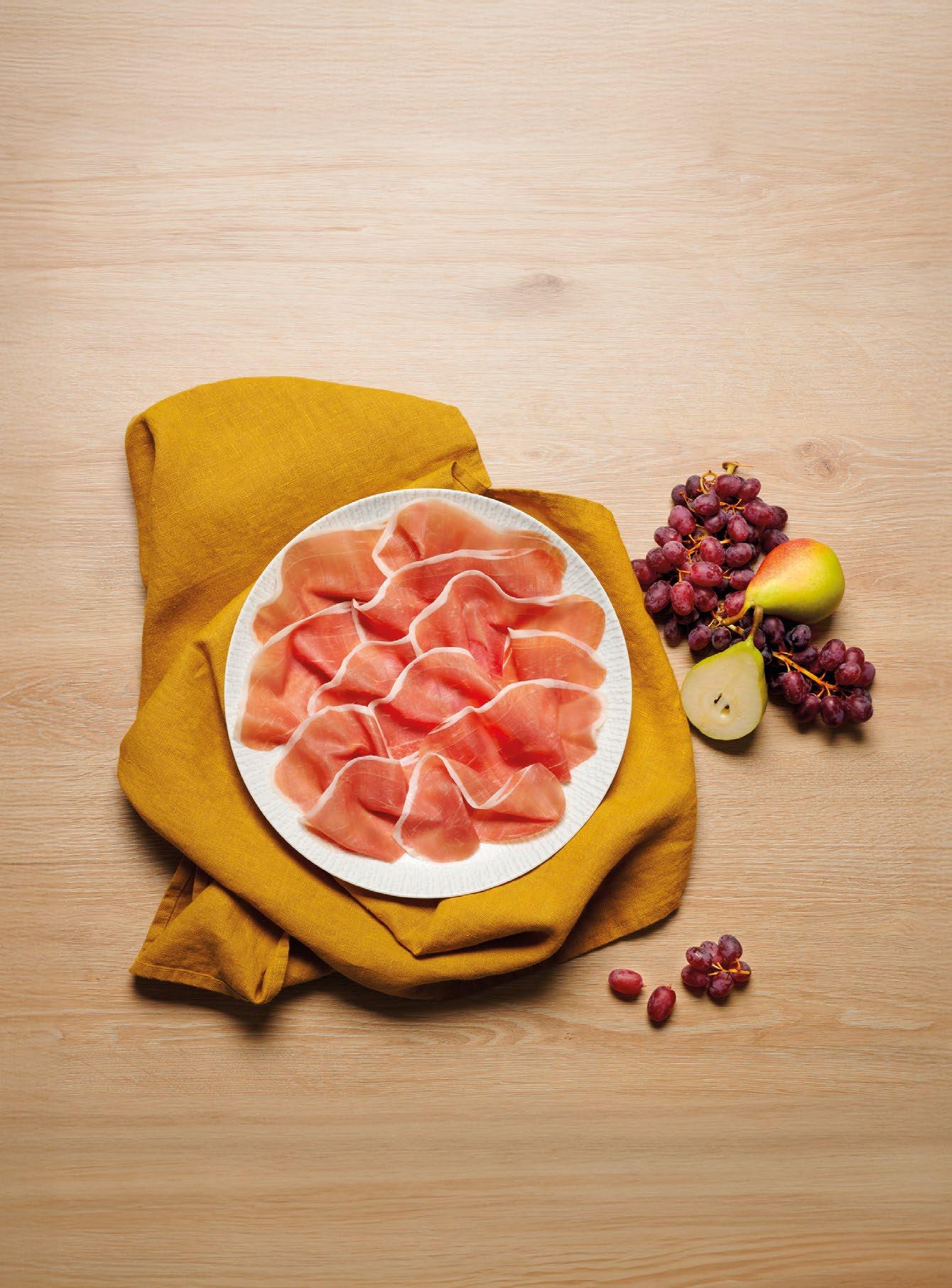
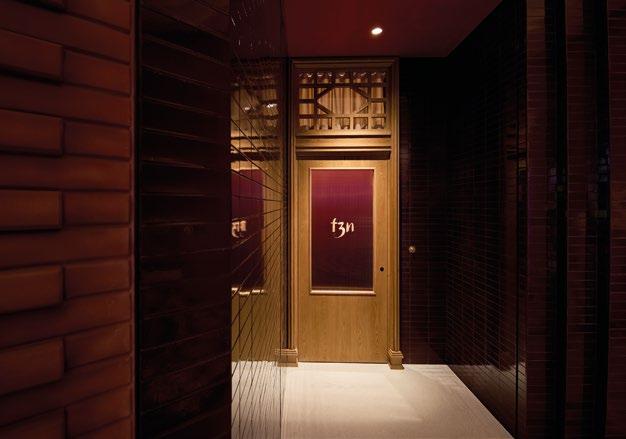

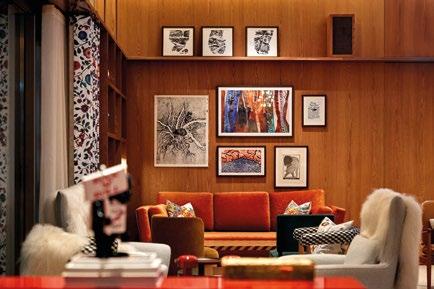
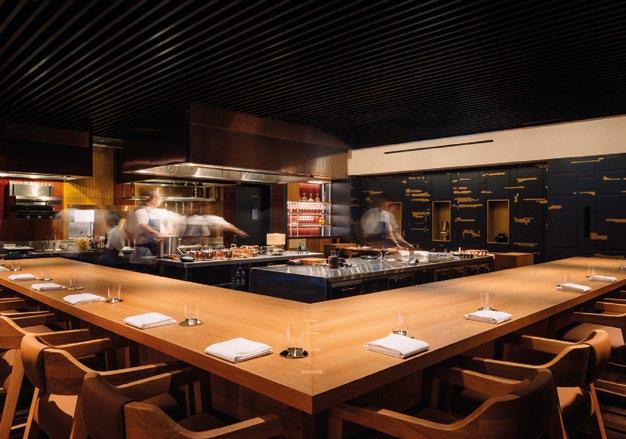
“We want guests to go beyond just eating. Food is social, and by integrating interactive elements like tableside preparation and storytelling, we turn diners into active participants.”
« experience at FZN. For me, it’s about creating a relaxed and welcoming atmosphere that helps guests feel at ease. I wanted the playlist to contrast with what people might expect from a fine dining restaurant—not too formal or stiff but inviting and approachable. The music should support the experience without overpowering it.”
This attention to detail extends well beyond the décor and setting. The food, as ever, is the core of the experience. Each dish in the seasonally changing FZN tasting menu is the result of meticulous development and weeks—
sometimes months—of refinement. “Inspiration usually comes from new experiences, like travelling,” Frantzén shares. “Once I’ve got that idea, I start sketching the dish, figuring out the flavours, textures, and how it’ll look. Then the team and I get into the test kitchen, cooking, tasting, tweaking, and repeating until it feels just right.”
Among the many menu highlights is a inventive spin on a Swedish classic that takes not just hours but days to prepare. “One meaningful and technically challenging dish is our Råraka, a refined take on the classic Swedish hash brown,

topped with Kalix vendace roe, crème fraîche, and pickled onions. It starts with shaving potatoes into thin strings with a Japanese slicer, then twirling them into a cylinder, and the whole process takes several days to perfect.”
FZN’s menu also subtly nods to its geographic home. While Frantzén’s culinary framework is unmistakably European, he continually adapts his dishes to incorporate local influences. “While the foundation of my cuisine is rooted in modern European cooking, I am always deeply inspired by the unique flavours of the destinations where my restaurants are located,” he says. “At Zén in Singapore, the menu reflects the vibrant local flavours and ingredients, blending them seamlessly with my signature dishes. These adaptations not only honour the location’s culinary heritage but also allow guests to experience a fusion of tradition and innovation. Similarly, at FZN, the menu will soon feature dishes that are thoughtfully crafted to highlight the region’s distinctive tastes, while maintaining my signature offerings that remain consistent across all of my global locations.”
This ability to evolve without diluting his identity is part of what keeps Frantzén’s global offerings compelling. The Frantzén Group, now encompassing a portfolio of world-class dining venues, operates with a philosophy that balances consistency and individuality. “It all comes down to staying connected to the heart of what we do—we are in the business of people,” he reflects. “We’ve built a close-knit team that gets the vision, and I try to spend time in each location whenever I can. Many team members have been
with me for years and have moved between restaurants, such as Karin Ågren, now General Manager at FZN in Dubai, who previously worked at Frantzén in Stockholm. That shared DNA keeps the vibe consistent, even as each place brings its own local flavour. It’s not copy-paste—it’s more like different songs, same playlist.”
In Dubai, that approach seems particularly resonant. The city’s cosmopolitan energy and appetite for one-of-akind experiences align naturally with Frantzén’s immersive style. “As one of the world’s most popular international destinations and multicultural cities, Dubai has become a thriving culinary hub unlike any other,” he says. “Luxury dining in Dubai goes far beyond the food on your plate; it’s about the spectacle and unique experiences that accompany it.”
The beverage programme at FZN mirrors this ethos. With over 1,600 wine labels from 16 countries, ranging from boutique producers and internationally acclaimed labels to Dubai firsts, the offering is as ambitious as the food—and just as considered. “Food is my main focus, and I’m lucky to have a really talented team that handles the beverage side with a lot of skill and creativity. I trust them completely, but of course, we work closely together to make sure the pairings—wine or non-alcoholic—truly support the food. It’s not just about matching flavours but making sure the drinks add something to the overall experience.”
Though he operates at the very pinnacle of global gastronomy, Frantzén remains committed to making »
« fine dining feel more inclusive. “I’ve always believed in making fine dining more approachable by blending sophisticated culinary artistry with a relaxed, welcoming atmosphere,” he says. “I wanted to break away from the traditional formality that often makes fine dining feel intimidating, creating a space where guests can truly feel at ease. For me, it’s about fostering a personal connection with my guests, engaging with them directly, and ensuring that the experience feels intimate and warm. By embracing a more flexible approach to service and offering dishes that balance uniqueness with familiarity, I’ve aimed to open the door to fine dining for everyone, making it something that’s not just enjoyable and memorable but also free of pretension.”
That philosophy echoes in his leadership style as well. Frantzén’s background as a professional footballer deeply informs how he runs a kitchen—through team synergy, trust, and shared goals. “There are many similarities between playing football and cooking with a team. It’s all about group dynamics, teamwork, and performing together under high expectations. Just like in a sports team, it’s essential to find the right balance to get the best out of everyone. With so many moving parts, teamwork in the kitchen is crucial, especially when opening a restaurant in a new location such as FZN and Studio Frantzén, my latest ventures at Atlantis, The Palm, Dubai.”
Despite achieving near-mythical status in the culinary world, Frantzén shows no signs of slowing down.
His motivation, he admits, is both internal and instinctive. “Even after all the accolades, what drives me creatively is the constant curiosity and the hunger to push boundaries,” he says. “The kitchen is never predictable—there are always surprises, new ingredients, or techniques that challenge me. Those moments keep me excited. It’s about growth, discovery, and never settling for the same old thing.”
For Frantzén, it’s no longer just about being recognised— it’s about building something more enduring. “Success today means creating something meaningful and lasting— great food, a strong team, and a real experience. I’m competitive by nature and always want to be the best, so awards and stars still mean a lot. But back in the early days, it was all about proving ourselves and hitting milestones. Now, it’s also about staying true to our vision and making sure everyone involved feels valued. The definition [of success] has definitely evolved, but that drive to be number one is still very much alive.”
Looking forward, his aspirations continue to expand. In addition to the dual Dubai projects, the Frantzén Group is set to open Brasserie Astoria in Marbella and a new restaurant in his hometown of Stockholm. And yet, in spite of the accolades, the empires, and the Michelin stars, Björn Frantzén is still that 12-year-old boy in Stockholm, wide-eyed over a plate of steak frites with homemade béarnaise and crispy fries. “It was hands down the best thing I’d ever eaten,” he recalls. “That’s when I decided I wanted to be a chef, just so I could make that dish every day.”

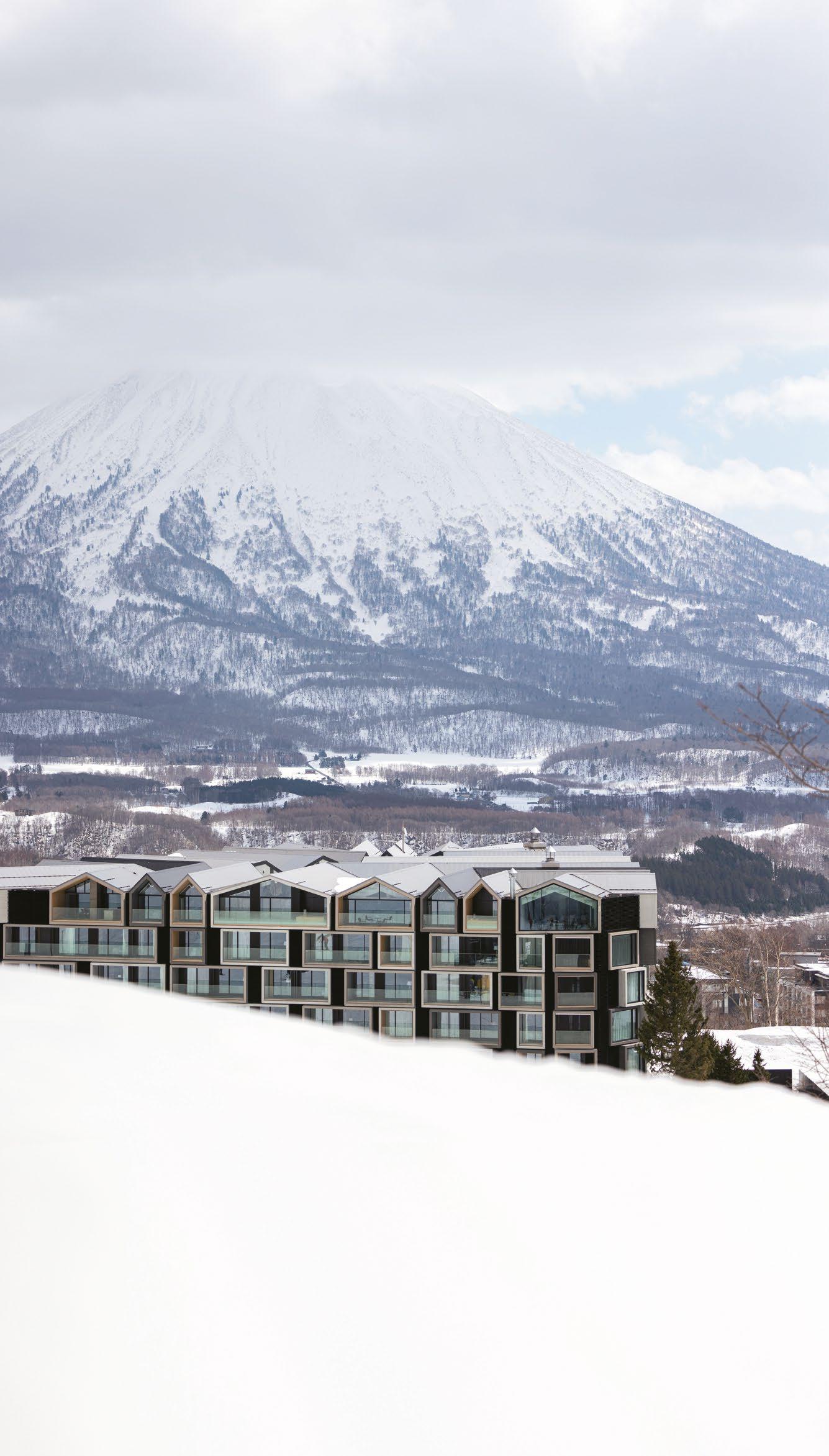

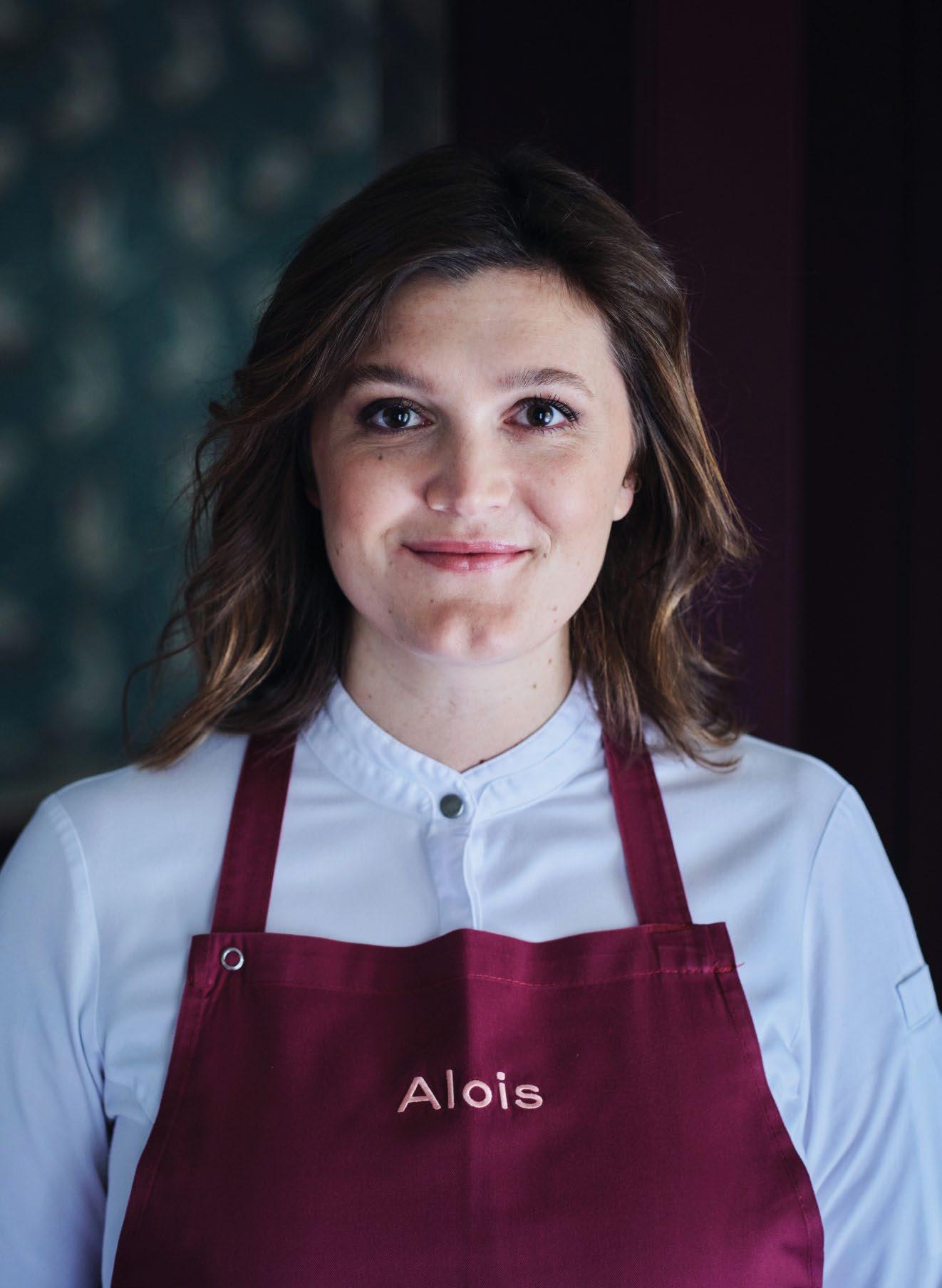
Bavarian by birth and Nordic in spirit, Rosina Ostler brings a fresh, youthful energy to Munich’s fine dining scene at two-Michelin-starred Alois, combining technique and terroir with a philosophy rooted in seasonality, soul, and shared enjoyment.
PHOTOGRAPHY BY DAVID MAUPILÉ

Walk up a discreet staircase above Munich’s iconic Dallmayr delicatessen, where the shelves brim with caviar and rare spices, and you’ll find a restaurant that feels more like a friend’s living room than a gastronomic landmark. It’s here, in this intimate, colour-filled space that Rosina Ostler is shining a new light on the city’s fine dining scene. And though she only took the reins at Alois in December 2023, she’s already become one of Germany’s most talked-about culinary figures—and for good reason.
Born in Munich and raised in the countryside 30 minutes south of the city, Rosina grew up surrounded by nature, spending much of her time outdoors in the family’s large garden alongside a menagerie of pets. Her childhood was filled with hobbies—from playing the piano to sports—and she later completed her final two years of school at a boarding school in the UK. Amid all the activity, one thing remained constant: a deep appreciation for good food, not through elaborate meals but in the everyday enjoyment of flavour, seasonality, and time spent around the table. “My family always prioritised good food, dining, and cooking, so I was introduced to the culinary world very early on,” says the chef.
It’s a world Ostler now navigates with stunning clarity and confidence. At 33, she is one of only a handful of female
chefs in Germany—and the world—to hold two Michelin stars. But if you ask her what shaped her cooking style most, she doesn’t point to a single moment. “There is no specific event,” she says. “It’s the sum of things. I took what I’ve seen, tasted and learned and transformed it into my own cooking style. I try to create very freely and with an open mind.”
“My passion for the culinary arts comes from a deep love for hosting and creating meaningful experiences through food. Cooking gives me the freedom to express my creativity, blending aesthetics and art to craft dishes that are both visually stunning and emotionally resonant,” she continues.
“For me, cooking is about more than just preparing food— it’s about sharing and giving, bringing people together, and evoking emotions through taste and presentation. My ambition drives me to continuously refine my craft, always striving to create beauty on the plate and beyond.”
However, her path to the top wasn’t the most conventional. After an early stint studying media management, she pivoted toward professional kitchens with a determination that belied her limited formal experience. She began with stages at renowned restaurants under the guidance of respected chefs like Martin Fauster (formerly at Königshof), Tanja Grandits (Restaurant Stucki), and Johannes King (Restaurant at Dorint Söl’ring Hof). »



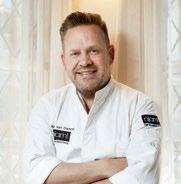

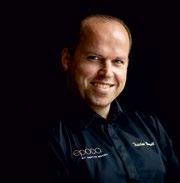





« Then came a classic apprenticeship at the revered Hotel Traube Tonbach in the Black Forest, followed by a role at the legendary Schwarzwaldstube under Torsten Michel. Later, she moved to Berlin’s einsunternull, and eventually, driven by a desire to gain international experience in Nordic cuisine, found herself in Oslo at three-Michelin-starred Maaemo.
What she discovered in Norway was more than a change in geography—it was a shift in mindset. Maaemo’s ethos of purity, respect for nature, and radical ingredient integrity struck a chord. Soon after, she was entrusted with leading the opening of Mon Oncle, Maaemo’s Michelin-starred à la carte sibling, before returning to the main restaurant as Chef de Cuisine under Esben Holmboe Bang for eight months. Then, Alois beckoned, and she made her way back to Munich with a clear vision and sense of purpose. “For me, cooking means evoking emotions and providing guests with unforgettable taste experiences,” she says. “In my kitchen, I blend elements of classic French haute cuisine with modern techniques and international influences to create unique dishes.”
“My culinary philosophy is centred around a deep respect for the highest quality ingredients, precision, and craftsmanship,” she adds. “Every dish we create is a balance of creativity and uniqueness, highlighting seasonal
“For me, cooking is about more than just preparing food—it’s about sharing and giving, bringing people together, and evoking emotions through taste and presentation.”
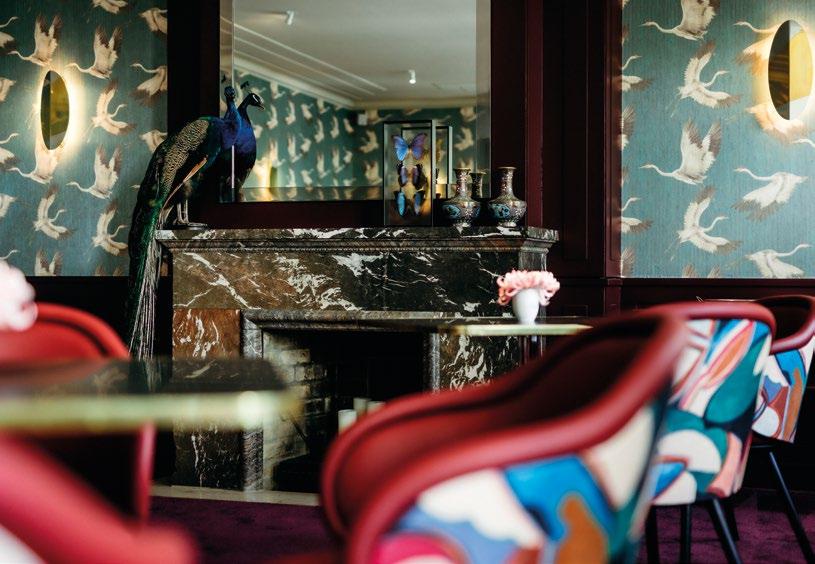
produce and working closely with small local producers. Nature plays a fundamental role in our cuisine, inspiring us to incorporate wild and unusual ingredients, as well as unexpected flavour combinations.”
It’s not just the ingredients that set her food apart, though—it’s also how they’re presented. “Aesthetics are equally important—each plate is thoughtfully composed, not only in taste but also in visual presentation. Our menu is designed as a cohesive whole, where every dish contributes to a harmonious and immersive dining experience.”
Spanning a range of tastes and textures, the menu at Alois begins and ends with small, one-bite dishes—six to seven at the start, and again at the finish—framing seven to nine larger courses in between. “Each dish has its purpose to create an overall fantastic, surprising and unique experience where the diner is excited and hungry for more until the very last bite,” she says.
One such morsel—a crowd favourite—features deer, pear, and coffee. “It’s a fried warm, airy dough filled with a purée made from preserved pears from last year and green peppercorn. It’s dusted with a toasted coffee, green peppercorn and vinegar powder, and spiced flaky salt.” Cured and charred venison sits on top, finished with flakes of salted, smoked and dried deer heart and liver. “The meat is brushed with a honey and coffee shoyu glaze,” she
adds. “It shows my cooking philosophy well, since we are showcasing a local game product of superb quality (also parts like livers and hearts), preserved seasons (pear), and a complex and exciting use of spices, temperatures, textures, and techniques without being hard to understand or enjoy. The bite takes you on a journey from the first chew to the last, in each you taste something different.”
In Ostler’s hands, this level of flavour and skill is never an accident. “Personality, uniqueness, clear and strong flavours and textures, perfect craft, passion… intention of the dish in context of the whole menu,” she says when asked what makes a dish work. Her ingredient preferences reflect that same holistic mindset: “Citrus, salad, wild ingredients, game, intestines, local fish, seasonal local vegetables, tea, different kinds of chilli, high quality dairy.” These are not just products—they’re tools for storytelling.
And to tell her story well, she sources from the best. Quality, passion, excitement, knowledge, skill, philosophy, proximity, and consistency are all key factors she considers when selecting her suppliers. “I source from small, super high-quality producers, where I have personal contact and communication… a lot of them from the region,” she explains. “Also, foragers. Sometimes we are our own suppliers and forage for ourselves.” That hyperlocal attention is supported by the vast network of the Dallmayr »

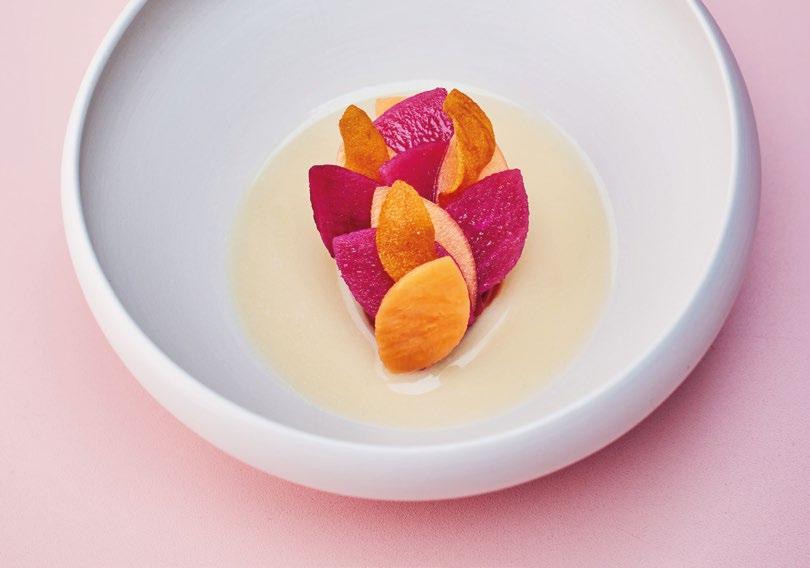
« delicatessen—a historic institution that has provided Munich with gourmet products for centuries.
And then there’s the space itself. The restaurant, located above the delicatessen in a refined townhouse near Marienplatz, is deliberately unpretentious. “Casual, cosy, living-room-like atmosphere, positive energy and passion,” she says of the ambience. “For a few hours, guests can forget about the outside world and dive into a unique experience.” Every aesthetic detail—from the handmade, delicate crockery to the artful colour scheme—has been specially curated. “It’s all about details—everything is very carefully selected and individually chosen. This is extremely important to me.”
That sense of care extends to the kitchen brigade, where every person works together as a unit to deliver a flawless experience for guests. Ostler describes the kitchen as a collaborative, evolving environment. “We are a very young team and try to always be a bit better from one day to the other, and one dish to the next.” New concepts start in her head, then on paper, before being tested and refined. “Myself, the team, brainstorming sessions, the products, the producers, the experts, the season, nature, the menu overall, books”—that’s what shapes a dish. Creativity, she says, comes from intuition but also from “tastes, nature, colours, shapes, products, dining, travelling”.
Local markets, foreign cuisines, personal memories—these are her palette. And with Alois providing state-of-the-art equipment, a supportive management, and unparalleled access to ingredients, she feels freer than ever to experiment. “This gives me the freedom to access the best products for my dishes and to try new things again and again.”
This also allows her to change the menu often. “I love all the dishes, but sooner or later I get a bit tired of all of them and need a change,” she says. “The beauty of everything we do is also its transience… a momentum when you’re super excited about the creation. It wears off after a while, and then it’s time for something new—and in the best case, something better.”
This desire to constantly improve has led Rosina and the restaurant to great acclaim. In both 2024 and 2025, Alois retained its two Michelin stars under Ostler’s leadership, and this year she was named Chef of the Year by both Gusto and Falstaff Gault&Millau also awarded her as the Discovery of the Year 2025. As amazing as these achievements are, Rosina’s focus remains on her diners. “All of [the awards] mean a lot to me, but what matters more is a full restaurant where every single guest has the greatest time—as well as the team!” she says. What does she hope people take away from a meal at Alois? Her answer is beautifully simple: “Enjoy life and its beauty to the fullest.”
A storied spa town awakens once more as Baden-Baden’s legendary hotels re-emerge— elegantly refreshed and as inviting as ever.
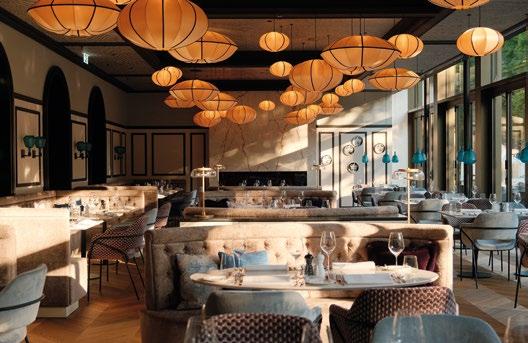
At the edge of Germany’s Black Forest lies Baden-Baden—a spa town that has inspired royals, artists, and travellers for centuries. Known for its healing thermal waters, peaceful parks, and rich cultural life, the town blends tradition and elegance with a relaxed, modern spirit. And now, Baden-Baden is entering an exciting new chapter: three of its most iconic hotels are returning— restored, refreshed, and ready to welcome a new generation of guests.
Leading the way is the Steigenberger Icon Europäischer Hof, which reopened this summer after an extensive renovation. Located in the heart of the city, just steps from the famous Casino and the beautiful Lichtentaler Allee, the hotel combines nineteenth-century charm with five-star comfort. Guests can enjoy stylish rooms and suites, a new spa and wellness area, and fine dining in a setting full of history.
Soon to follow is the Brenners Park-Hotel & Spa – an Oetker Collection Hotel, one of Europe’s most legendary addresses. Set in a peaceful park along the Oos River, Brenners is known for its timeless elegance and worldclass service. When it reopens later this year, guests can look forward to redesigned interiors, a top-level wellness offering, and the return of the much-loved Fritz & Felix restaurant.
Also nearly ready to welcome guests again is the Badischer Hof – Leonardo Limited Edition, once Germany’s first palace hotel. Now in the final stages of renovation, this former Capuchin monastery offers a unique blend of

CLOCKWISE FROM TOP
LEFT Restaurant Café de l’Europe at Steigenberger Icon Europäischer Hof © Baden-Baden Tourismus GmbH; Prestige Junior Suite at Brenners Park-Hotel & Spa © Brenners Park-Hotel & Spa; New rooftop bar overlooking Baden-Baden at Steigenberger Icon Europäischer Hof © BadenBaden Tourismus GmbH.
heritage and relaxation, with elegant rooms, large gardens, and direct access to Baden-Baden’s famous thermal waters.
With its grand hotels returning and its timeless charm shining brighter than ever, Baden-Baden is the perfect place to recharge, slow down, and enjoy the best of European spa culture—whether for the first time or as a welcome return.
To find out more, visit baden-baden.com
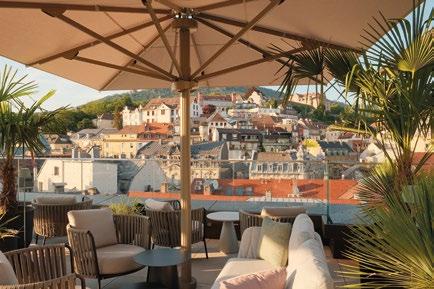

From a childhood spent in a flour-dusted village bakery to earning two Michelin stars in Madrid, Spanish chef Ramón Freixa has turned memory, mastery, and Mediterranean warmth into his most enduring recipe: joy.
Ramón Freixa has long been one of the most distinctive voices in Spanish fine dining. Over the past three decades, the Barcelona-born chef has shaped a style that blends tradition with creativity, underpinned by emotion and exactitude. At each of his restaurants, he brings a deeply personal approach to Mediterranean cuisine—one that tells stories through flavour, structure, and detail. “I am lucky that my job is also my passion,” he says. “So being a chef is more than just a profession—it’s my life.”
That life began in Castellfollit de Riubregós, a small Catalan village near Barcelona, where his childhood centred around playtime and pastry. “I grew up smelling of flour and playing games with the customers, pretending to be a shop assistant and baker at my grandparents’ bakery,” he recalls. “During my high school years, I started preparing my first desserts with my grandparents, among sugars, creams, and hot ovens.” But everything really fell into place when his dad and mom—a chef and front-of-house manager, respectively—opened their first restaurant. He then began taking culinary trips with his parents, and a dinner at a three-Michelin-starred restaurant left a mark that no childhood dream of rock stardom could compete with. “I could define myself as a young foodie,” he exclaims. Cooking wasn’t just something he admired—it was, after all, in his DNA.
To pursue his path in the culinary arts, Freixa attended the prestigious Escola Universitària d’Hoteleria i Turisme Sant Pol de Mar in Barcelona. From there, he expanded his horizons with formative stages in Belgium and France, including a stint in Laguiole with celebrated chef Michel Bras. Even after rubbing shoulders with culinary heavyweights, it was his father’s advice that had the greatest impact: “The most valuable lesson I have learned from my parents is to stay faithful to your own way of understanding cuisine, adding three essential ingredients: work, work, and work. As painter Pablo Picasso said: ‘Inspiration has to find you working.’”
This ethos would serve him well when, in 1994, he joined his father in the kitchen of their family restaurant, El Racó d’en Freixa, in Barcelona. It was here that Ramón learned the importance of the product, the power of memory, and the soul behind every well-made recipe, and by 1998, he had taken the helm. While honouring the restaurant’s foundations in traditional Catalan cuisine, he began introducing a more contemporary and creative edge, earning and maintaining its Michelin star. Under his leadership, the restaurant became one of the most respected dining rooms in the country, and Freixa himself was twice named Spain’s Best Chef.
In 2009, he left his native Barcelona to open his own signature restaurant, Ramón Freixa Madrid, in the upscale »
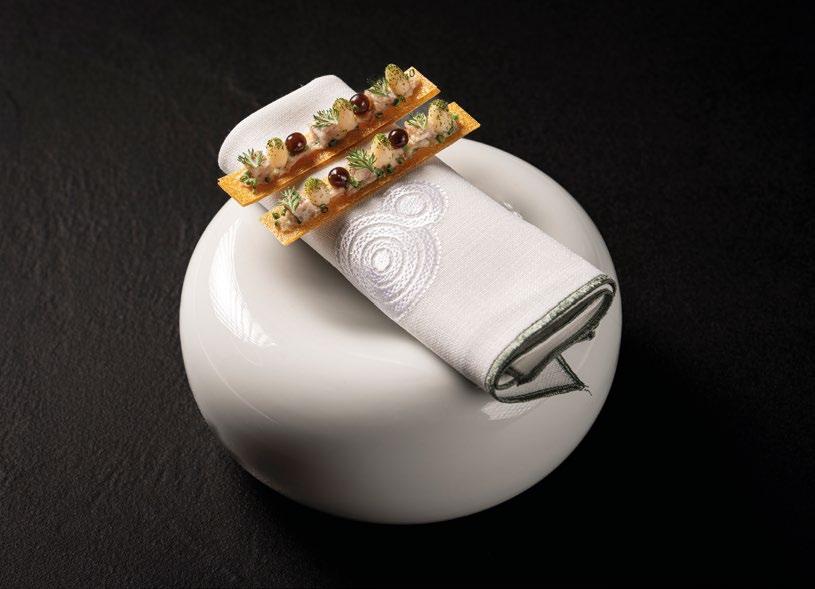


At Canne Bianche Lifestyle Hotel, every detail re ects a deep connection with nature and culture. Indulge in Mediterranean cuisine crafted from seasonal, local ingredients.
At Canne Bianche Lifestyle Hotel, every detail re ects a deep connection with nature and culture. Indulge in Mediterranean cuisine crafted from seasonal, local ingredients.
At Canne Bianche Lifestyle Hotel, every detail re ects a deep connection with nature and culture. Indulge in Mediterranean cuisine crafted from seasonal, local ingredients.
At Canne Bianche Lifestyle Hotel, every detail re ects a deep connection with nature and culture. Indulge in Mediterranean cuisine crafted from seasonal, local ingredients.
Reawaken your senses at our holistic Aqua Spa. Experience a sustainable escape where luxury ows gently, in harmony with the land and sea of Puglia.
Reawaken your senses at our holistic Aqua Spa. Experience a sustainable escape where luxury ows gently, in harmony with the land and sea of Puglia.
Reawaken your senses at our holistic Aqua Spa. Experience a sustainable escape where luxury ows gently, in harmony with the land and sea of Puglia.
Reawaken your senses at our holistic Aqua Spa. Experience a sustainable escape where luxury ows gently, in harmony with the land and sea of Puglia.
CANNE BIANCHE LIFESTYLE
CANNE BIANCHE LIFESTYLE HOTEL
CANNE BIANCHE LIFESTYLE HOTEL
Via Appia Antica 32, 72015 | Torre Canne di Fasano - (BR) - Italy Ph. +39 080 4829839 | info@cannebianche.com | www.cannebianche.com
Via Appia Antica 32, 72015 | Torre Canne di Fasano - (BR) - Italy Ph. +39 080 4829839 | info@cannebianche.com | www.cannebianche.com



“I consider every guest coming to my restaurant as the most important. And I feel glad they have chosen me rather than some other restaurant, so I feel responsible for making them enjoy the experience.”
« Salamanca district. It was a defining move for the now globally renowned chef. Located within the five-star Hotel Único, the restaurant earned its first Michelin star just months after launching, followed by a second the next year, alongside three Repsol Suns. Here, Ramón had found the ideal canvas for his full creative expression. Every dish— conceptualised, designed, and executed as part of a distinct narrative—was grounded in his triad of values: product, technique, and feeling. “Excellence in detail is my raison d’être,” he says, simply. “It’s the very core of my being.”
For Freixa, food is memory, mood, and movement. In his kitchens, Catalan roots and creative restlessness meet
in dishes that tell stories—his own, and those of the land he calls home. This sentiment is made all the clearer when he talks about his favourite ingredients: “Chocolate, egg, and tomato. These three basic ingredients have marked my life and vision. Chocolate, because I need a daily dose; egg, because it is the basis of my style of cooking; and tomato, because it forms the foundation of my cuisine as a Catalan and Spanish ambassador to the world.” One of his earliest and most personal creations—chocolate, bread, olive oil, and salt—holds a special place in his heart, as it was based on his childhood experiences. “As in the novel In Search of Lost Time by Marcel Proust and the ‘episode of the madeleine’,

early memories come to my mind through the senses, and this turns into a dish in many different ways,” he says. “Taste of bread and the first desserts made with chocolate and learning—the vision of life in the restaurant—are two senses always present and committed in my cuisine.”
Freixa’s emotion-fueled, multisensory approach lies at the core of his culinary offering, and this, paired with his desire to bring joy through food, is undoubtedly one of the reasons he has been so successful in the industry. “I am a chef of sensations, of feelings, of thought. That’s my understanding of cuisine, but it’s also similar to my way of working in the kitchen. If you want to make guests feel happy in the restaurant, you have to cook in the same way,” he says. This makes his dish creation process very involved; however, the end goal is always to find harmony on the plate while respecting his origins. “Creating a new dish can be simple and complex at the same time,” he explains. “Of course, memories and DNA are always present, but there are many other factors—product, flavour, colours, technique. I usually move between opposites, and finding a balance between, for example, chaos and order and tradition and vanguard, is what keeps me open to new concepts and new ways to tell stories through my dishes. I never forget my past, because whoever forgets their past loses their identity. In other words: no evolution without tradition.”
While no single dish defines him—his menus shift with the seasons, products, and moods—there are recurring themes: the playful integration of Catalan classics, the delicate use of veils and foams, the reinvention of childhood staples. But taste, at the end of the day, is the most important. “I am an enthusiastic creator with my points of reference in tradition, in family, and in nature,” he says. “They are my roots, my source of inspiration, which I praise and share as far as possible. What I want you to experience is to allow your senses to revel in my creations and understand that colour could be just as important as flavour, and that flavour is the reason why you are here. Cuisine is a matter of taste, of flavour.”
Freixa’s culinary language is inseparable from his heritage. Even as he ventures into global markets—opening restaurants in Colombia and Mallorca, collaborating with airlines and cruise lines—he remains anchored to the local. “I am a strong advocate of the ‘glocalisation’ concept,” he says. “Thinking globally and cooking locally. But the essence is to stay faithful to your own way of understanding cuisine, respecting your identity and specific location, product, and heritage.”
It’s this dual sensibility that has shaped his multifaceted career. From his elegant restaurant Ático perched atop The Principal Madrid Hotel to Mas de Torrent on the Costa Brava, where he revives traditional Catalan cooking »
« shaped by childhood recipes and regional produce, each venue reflects a different part of his culinary personality. In Cartagena, Colombia, he brought his Spanish sensibility to a tropical setting with Erre. In 2020, he launched Singular in Mallorca, a love letter to seasonal, sun-soaked island produce. In 2021, he fused opera and fine dining at the iconic Teatro Real in Madrid with Papagena. No matter where he is, the philosophy remains the same: “In my kitchen, tradition and avant-garde coexist and, in addition to that, all my restaurants have always had my personality and my Mediterranean origin in common.”
Now, in 2025, a new chapter begins, with Freixa launching a dual-concept restaurant in Madrid that embodies the full spectrum of his culinary language. “It will be my most important and personal project. Ramón Freixa will be more Ramón Freixa than ever,” he shares. The space, which will house both a traditional kitchen and a contemporary fine dining experience, represents a culmination of all the chef has learned over the last 50 years.
“My career is the natural result of my way of understanding life and cooking,” he says. “As the title of my latest book, Cooking Happiness, says: cooking is a necessity— being happy cooking and making people happy with my cooking.” This ethos spills into every corner of his work, from the suppliers he chooses, seeking excellence and the best produce in every season, to the guests he greets in the
dining room. “I particularly enjoy personally attending to the customers who come to dine at my ‘home’. I consider every guest coming to my restaurant as the most important,” he says. “And I feel glad they have chosen me rather than some other restaurant, so I feel responsible for making them enjoy the experience.”
For a chef with multiple Michelin stars, international restaurants, and high-profile partnerships—including Iberia Airlines and MSC Cruises—Freixa remains refreshingly grounded. “Michelin stars, the Best Chef Awards… all of them are important,” he admits. “But making people happy every day with my cuisine is the best achievement. I have always worked to ensure that my cuisine is an honest one.”
Still, there are moments of symbolic weight. “I am particularly proud of cooking several times for Spanish King Felipe VI and Queen Letizia at the Royal Palace of Madrid in state ceremonies,” he shares. “It is not just the grandeur of the space and the importance of the guests, but you are also representing and becoming a culinary ambassador of your country.”
Despite all his accolades and artistic ambition, Freixa has never lost sight of the deeper, more human truth behind the plate: that the purpose of food is not to impress but to delight. “Why do I cook?” he says with a smile. “Because it is a way of making people happy.”









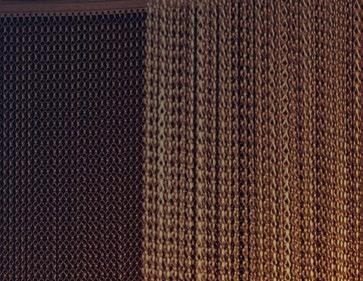



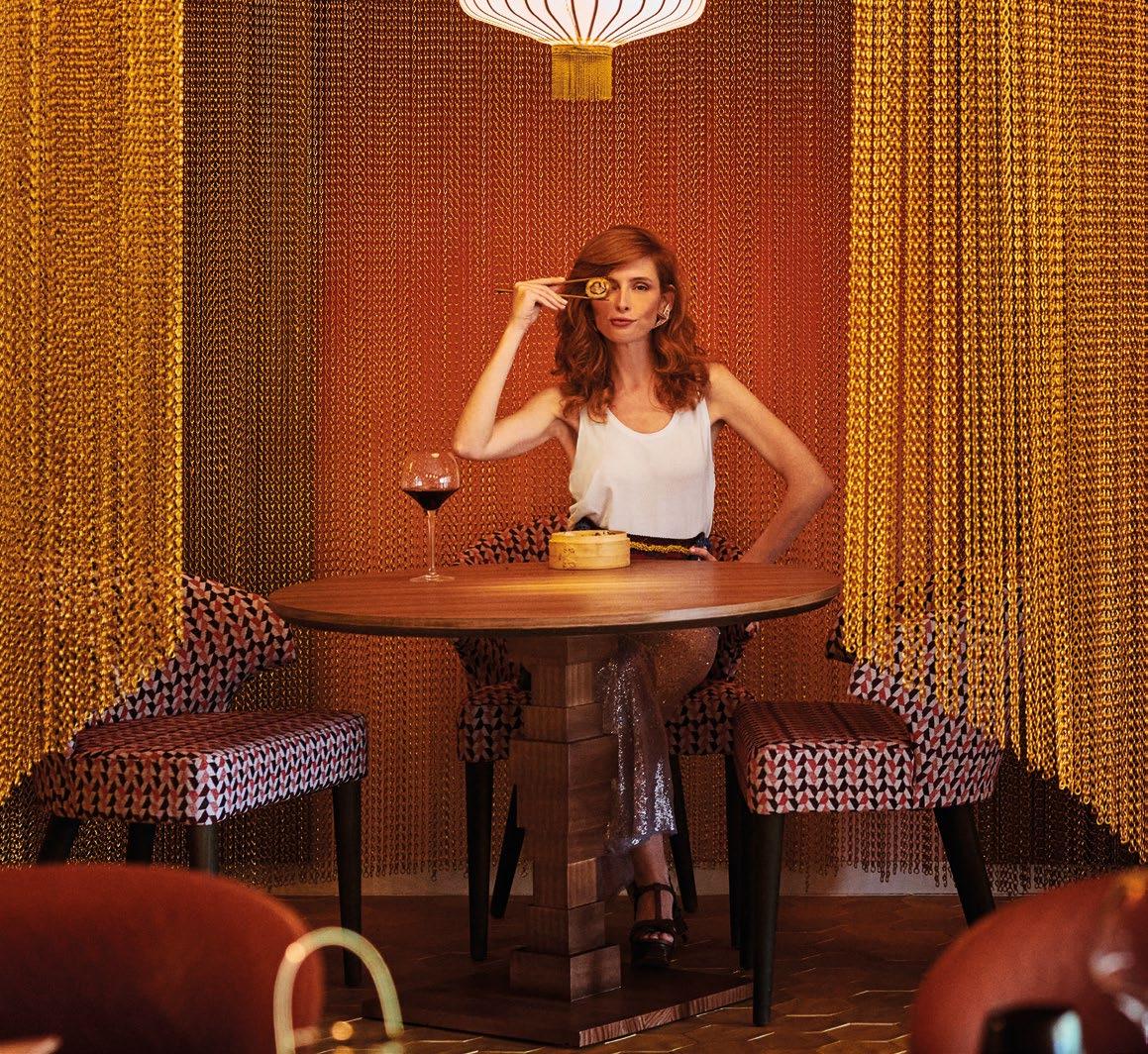
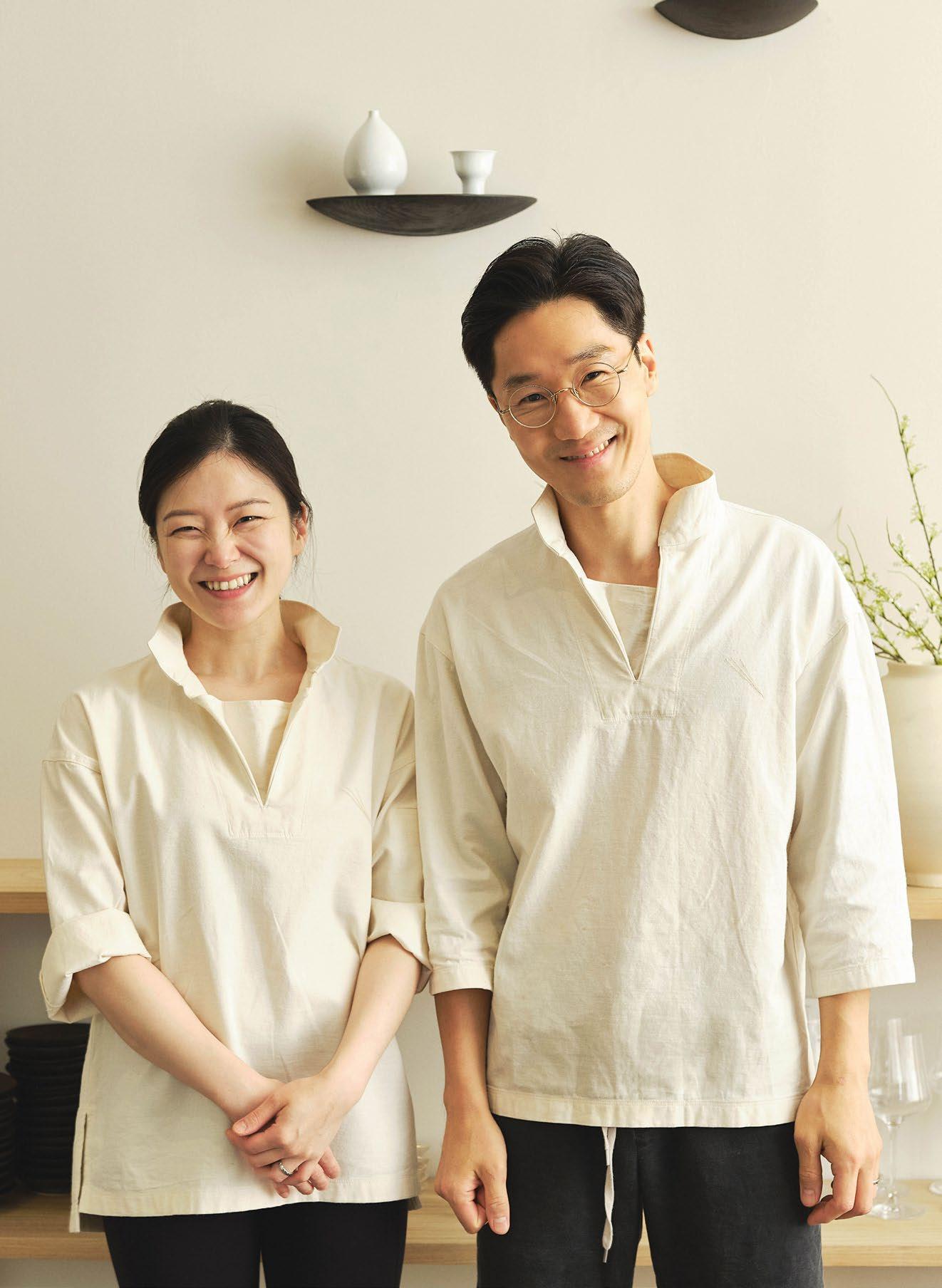
At Michelin-starred Sollip, a unique London bolthole set steps from the bustle of Borough Market, husband-and-wife duo Woongchul Park and Bomee Ki present a refined reflection of their roots: Korean flavours, French technique, and a menu shaped by seasonality, structure, and shared authorship.

In a quiet corner of Bermondsey, just a short walk from London Bridge, Sollip sits with deliberate poise. At first glance, the restaurant’s pale, paredback interiors—characterised by clean lines, Korean ceramics, and touches of wood and natural fabrics— suggest Scandinavian restraint or perhaps Japanese wabisabi. But step deeper into its world, and the intention behind every detail reveals itself as uniquely Korean, filtered through a European lens. This is the domain of chef Woongchul Park and pastry chef Bomee Ki, a husbandand-wife team whose work fuses discipline and emotion with memory and mastery.
Their restaurant, Sollip, takes its name from the Korean word for pine needle—an homage not only to the natural flavours that underscore traditional Korean cooking but also to a kind of poetic duality: delicacy and intensity, softness and strength. This balance is something both chefs have cultivated over the years, first independently, then together, as their professional and personal lives began to intertwine. Park’s love of cooking started early, sparked by the opening of a bakery chain in his hometown of Cheonan, South Korea. “When I was younger, I used to like bread a lot, but my parents’ generation didn’t have many bakeries, so it was not as common as it is today. My parents are
very traditional eaters, but I was much more curious and interested—I loved eating a Western breakfast, for example,” he recalls. “Paris Baguette opened in my neighbourhood when I was eleven. I used to go there every day, and I became interested in baking and cooking as a result.” A couple of years later, he joined a local after-school club called the Baking Academy and quickly realised that while baking fascinated him, it was too precise for his temperament. “It was great at first, but the more we delved into the techniques and started baking more seriously, the more I realised how meticulous you had to be to bake. Cooking fitted my personality and interests more, so naturally I went in that direction.”
His initial training took him from Korea to Boston, where he encountered French technique and Michelinlevel kitchens for the first time. Eventually, his ambitions led him to Le Cordon Bleu in London—an institution that would not only define his classical foundation but introduce him to Bomee, a fellow Korean chef specialising in pastry. From there, his career would span stints at some of London’s most respected kitchens: Koffmann’s, The Ledbury, and The Arts Club, before he took the position as a sous chef at Milieu, Jeju Island’s first fine-dining restaurant, located inside the Haevichi Hotel. Already married to Bomee at this point, she was also offered a position at Milieu as Head »



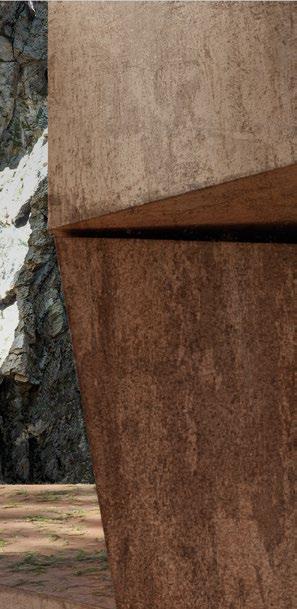

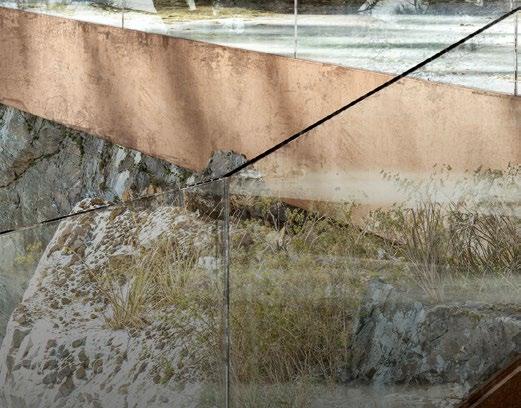
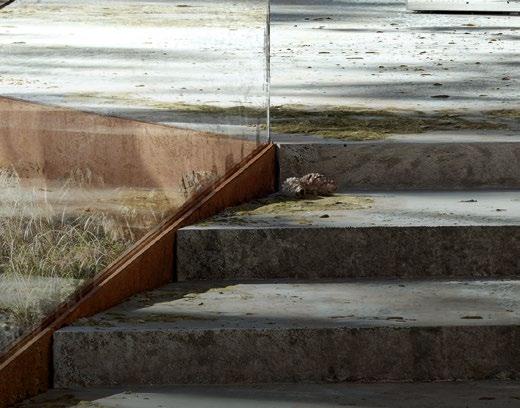


« Pastry Chef, marking the beginning of not just a creative collaboration but a personal one, too.
For Bomee, her journey was similar but focused more firmly on pâtisserie. After training at Le Cordon Bleu, she honed her craft in both London and Korea, including time under Claude Lamarche at The Arts Club. Her signature style—modern French with a Korean sensibility— emerged from this combination of classical education and emotional expression. She showcases this with great finesse at Sollip, crafting standout reinterpretations of Mont Blanc and black pain perdu, alongside seasonal variations of madeleines and gamtae sandwiches—delicate, seascented bites that reference Korean coastal ingredients with the elegance of a French amuse-bouche.
When the couple opened Sollip back in 2020, it was an act of courage and conviction; a leap of faith, if you will. Just months before the pandemic would reshape the dining landscape, they signed the lease and began turning their dream into reality. The aim was to build a space where they could create the food they loved without feeling confined. “I like to think we are not pigeonholed into one style only. At Sollip, we have been on a journey since we opened, constantly evolving dishes and experimenting with new flavours,” says Woongchul. “In my opinion, a successful
“What is most important is a good energy and mindset. It’s essential to surround yourself with like-minded people so that everyone motivates each other to grow and do better—this is how we create great food.”

dish is one that is delicious with lots of flavour but simple at the same time. Most importantly, we create dishes that we would like to eat ourselves. I’d say my cooking is honest and free. I bring my own heritage, experiences, and teachings to the kitchen, so we can create menus that are truly ours, with influences from throughout our lives. The culinary style of each chef is very personal as it reflects their own life experiences.”
“As a husband-and-wife team, working together on crafting our dishes, our touch is present in every aspect of the food and the restaurant,” adds Bomee. “As both a chef and owner, we ensure that our vision is reflected in every detail.”
Though the techniques are exacting, Sollip does not strive to be a temple of perfection. Its real ambition lies in emotion—in creating a space where diners are delighted, and feel cared for on a personal level. “Eating and drinking are what make me happy, and I love to be able to facilitate that feeling for our guests,” says Woongchul. “Being a chef, I guess you approach eating and drinking differently, and so, you know the kind of experience you want to provide at your restaurant. Therefore, I want guests at the restaurant to have the highest possible quality dishes.”
Their menu—nine courses at dinner, four at lunch— draws on both of their backgrounds, refined by their
shared training in French gastronomy. Whilst produce is sourced predominantly from the United Kingdom, a handful of speciality ingredients come from small-scale artisanal producers across Korea. These products, such as gamtae, perilla seed oil, chilli flakes, dried anchovies, and fish sauce, are used with nuance, not as exotic addons but as central narrative threads. Their signature dish, a savoury daikon tarte tatin, beautifully encapsulates this approach. “It is our own interpretation of the classic French dish, tarte tatin,” Woongchul explains. “Bomee and I had been discussing the dish for ages, so it was great to see the finished thing rather than just an idea we had. Taste-wise, it is very delicate and subtle, and it sums up our cooking style—classic French with Korean ingredients and flavours— pure, clean, and neat.” Another highlight is the myeon (noodles) made with chestnut flour and dressed with perilla seed oil.
“Seasonality and great taste are what’s at Sollip’s core and very important to us”, Woongchul reinforces. Naturally, fermentation plays an essential role in their kitchen, with kimchi made in-house from a family recipe. The beverage offering further adds to the experience: an optional wine pairing is available alongside a thoughtful selection of wines by the glass, with a list leaning towards French and Old »
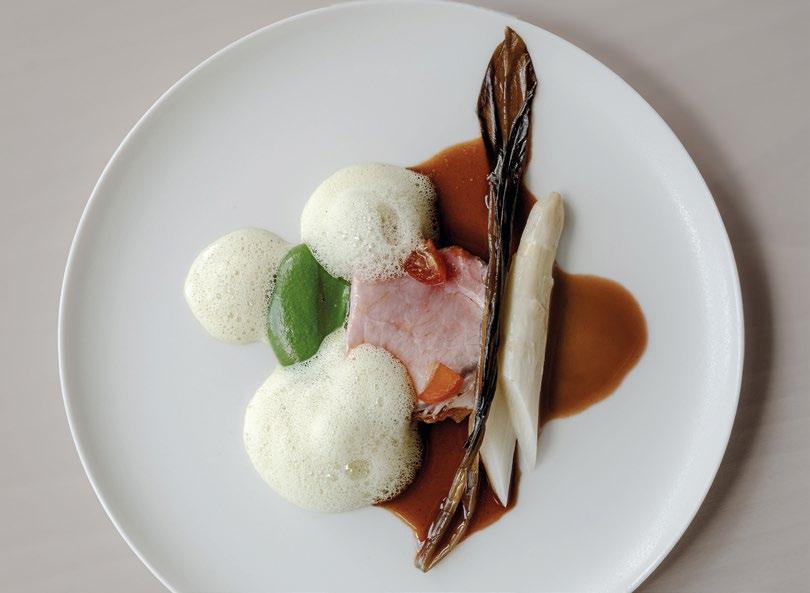

« World expressions. For teetotalers, the drinks menu showcases a variety of Korean teas and soft drinks.
The dining room is also a key part of the story: a serene palette of warm whites and minimalist lines, echoing the Korean aesthetic ideal of the ‘beauty of space’, lets the food shine without distraction. Korean Onggi pots—vessels traditionally used for fermenting kimchi—sit alongside natural fabrics and traditional textures, while most pieces of tableware have been handcrafted by Korean ceramicists. More than decorative embellishments, these details are tangible expressions of the couple’s deep-rooted connection to their heritage and to the Korean artisans whose craft helps shape the individuality of Sollip. “As a Korean, our identity, style, and background make Sollip special,” says Bomee.
However, it’s not just the space that reflects their values—it’s the people, too. From the kitchen to the dining room, Sollip is sustained by a sense of shared purpose and trust. “We have a small but tight and strong team, which I believe really translates into the guest experience as well,” says Bomee. “What is most important is a good energy and mindset. It’s essential to surround yourself with likeminded people so that everyone motivates each other to grow and do better—this is how we create great food,” adds Woongchul. “Our team forms part of what Sollip is, and
together we are successful. Feedback is also a way for us to achieve success; if the guests love it, then we are happy. If not, we try to adapt and take criticism constructively.”
It’s this grounded, people-first ethos—one that prioritises passion and purpose—that makes Sollip’s Michelin star, first awarded in 2022, feel especially well deserved. An acknowledgement not only of technical excellence but of a restaurant with soul. As London’s dining scene continues to evolve, Woongchul and Bomee remain rooted in their belief that originality is found not in novelty but in authenticity. “This industry changes all the time as we see new concepts and styles being recognised,” Bomee reflects. “Mindsets are changing in both the local and global dining scene, and Michelin is recognising more original and innovative cuisines. People are more accepting when it comes to the evolution of gastronomy, and that’s great.”
At Sollip, that evolution is deeply personal for Woongchul and Bomee, and centres around finding good work-life balance while making the most of what they have. Sollip is their life’s work, and contentment for them is both philosophy and practice. “Happiness is eating and drinking incredible food and wine, doing some exercise, and reading books,” concludes Woongchul, summing up a recipe for joy that’s hard to argue with.
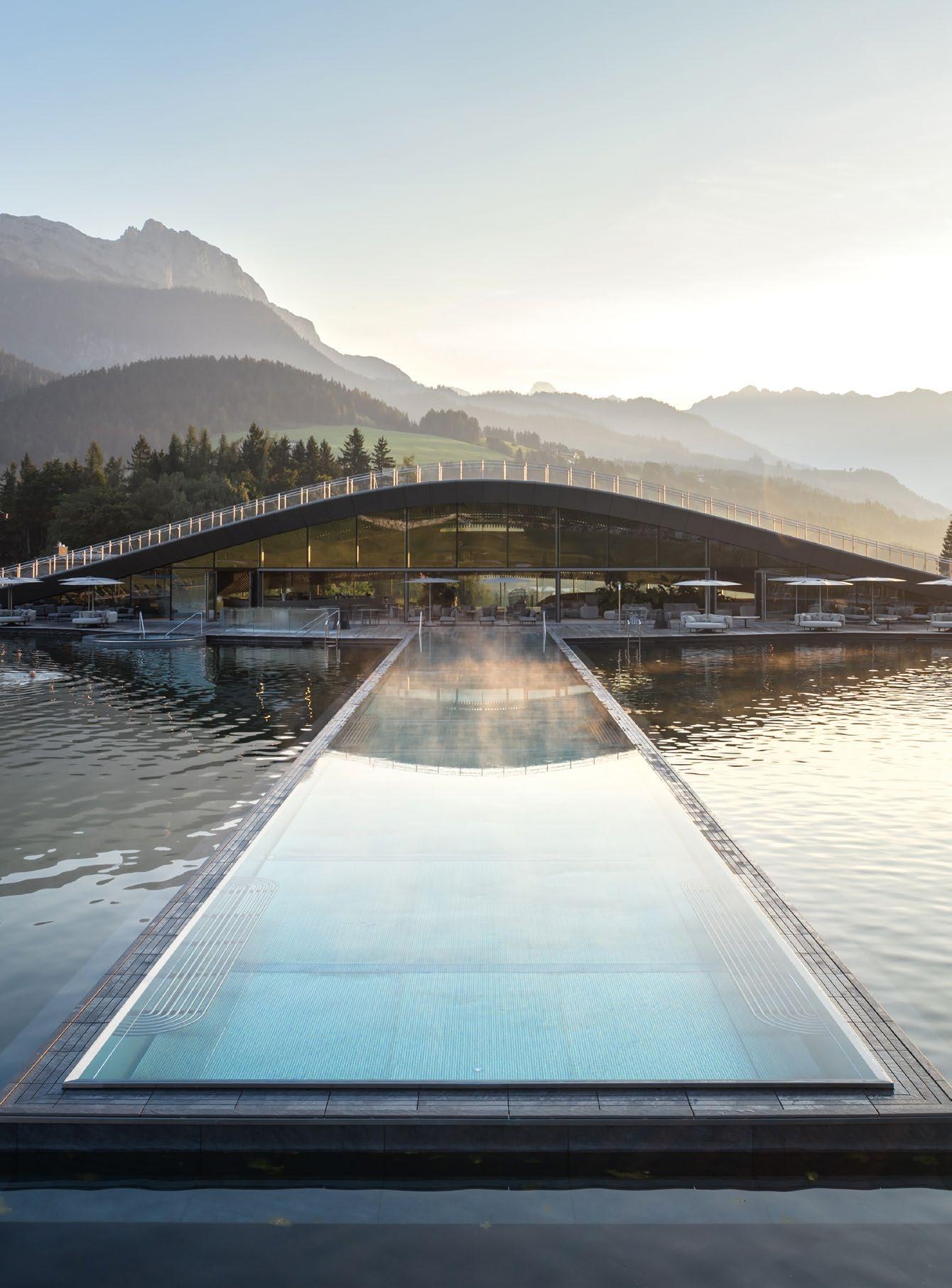
5* hotel in leogang salzburg, austria krallerhof.com
As a self-confessed globetrotter, when Andy Beynon isn’t behind the counter at Behind, his Michelinstarred chef’s table restaurant in London, he’s usually off feasting somewhere exciting. Los Angeles is one of his favourite culinary playgrounds: here’s his list of must-visit bars and restaurants in the city.

Holbox
LA has incredible Mexican food. Holbox is a casual seafood counter in such an unassuming location. It recently got a Michelin star, so the queues are long, but it’s worth it. The ceviche is made right in front of you, using fresh catch of the day. I love the tuna and Santa Barbara uni toastada, it’s just the perfect bite.
Mini Kabob
Another hole-in-the-wall space that’s such a hidden gem. It’s a family-run Armenian joint that does incredible kebabs and grills piled on massive silver platters. There is rice underneath to soak up the juice and make sure that none
of the flavour goes to waste. The lamb chops are also very good.
Clark Street Diner
You can’t go to America and not go to a diner. This one is a classic; I loved getting pancakes, hash browns, and waffles, and drowning them in maple syrup. It’s such a slice of Americana, you really feel like you’ve stepped back in time.
Bavel
This is a cool Middle Eastern restaurant in downtown LA. Everything is meant to be shared, feasting-style: flatbreads, cured meats, large tagines, and meat platters. My favourite thing on the menu is the chicken parfait served with the best grilled brioche. The parfait is such a vibrant pink colour, and the honey pomegranate reduction provides a nice sweetness. It’s a great way to begin a meal.
Dunsmore
Great spot for Modern American cooking. A large dining room with long communal tables, open-flame cooking, and a good vibe. The menu is comfort food using great Californian ingredients and inspiration from the American South. Sharing plates are the way to go, from big cuts of beef to American-style pork chops and some fish. They also have a bar for smaller plates and cocktails. The cornbread is also incredible.
Antico Nuovo
This place is very special; it’s ridiculously hard to get a table, but once you are in, it’s so worth all the hassle. Not a
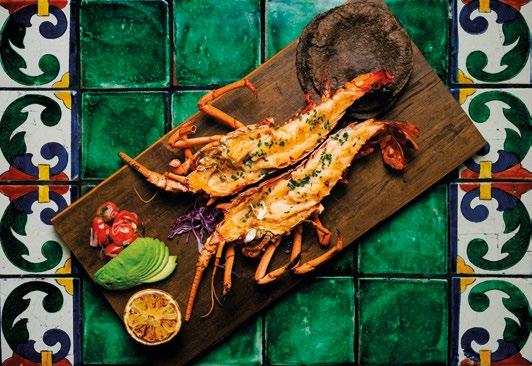

red-sauce Italian American that you’d expect, but rather a seasonal menu inspired by the Italian countryside. Simple ingredients, done very well. I am half Italian, and eating these plates of freshly made tortelli or slowly roasted pork ribs with lots of vegetables makes me very happy. The wine selection is excellent, too.
The smashburger craze has really taken over London, but LA was doing them first. The slogan for this place is: “Always order two”—probably because the line is so long. It’s exactly what you’d want from a smashburger: soft bun, crispy patty, plasticky cheese, and some sweetness and tang from ketchup and pickles. Best washed down with a milkshake, of course.
Tacos a Cabron
You can’t leave LA without getting your hands on some tacos. There are two locations for these street tacos, but both are equally good. You can get anything here: tacos, burritos, quesadillas, incredible tostas, which are these huge hunks of bread filled with meat and this liquid guacamole. The meat portions are so generous, it’s obscene. You won’t be leaving hungry.
Chateau Marmont
An iconic hotel with an iconic hotel bar. You just can’t get a better place for people watching. The martinis are excellent—ice cold and just the right amount of lethal. There is food here, too, but you really are coming for the cocktails and the Old Hollywood feel.
Oy Bar
A great modern dive bar. It’s super casual, with a classic dive bar vibe, but the menu offers some cool bites, including gooey quesadillas, spicy wings, and even matzo ball ramen. You can have a full-on meal here or just pop in for some beers and a couple of Old Fashioneds. I like sitting at the bar and soaking in the atmosphere.
This place is a sort of speakeasy meets immersive experience. You enter this Victorian building, and there are all these rooms and doors that you have to navigate to get through. Once you do, there are multiple places to drink—bars, an outside space, and performance areas with jazz and burlesque shows. It sounds bizarre, but the cocktails are really good, and there is just so much to do and see. It’s very LA.
Thunderbolt
A top cocktail bar with great drinks and excellent service. They are sustainable in their approach, which is something I really appreciate, and a lot of their drinks are pre-batched— you can see them bottling them at the bar. There is a whole Southern thing going on with their snack menu, as well as Southern hospitality, of course, which is a nice thing to have in such a full-on place like LA.
Kind of old meets new, this is a really cool spot with craft beers, natural wine, and pinball machines. You can get an ice-cold beer, one of those giant pretzels, or a hot dog. I love how retro it feels with all the neon lights. The crowd is cool, too—full of locals and young creatives.
I don’t go to many tiki cocktail places, but when I do, this is exactly what I want. It’s family-run, using secret recipes passed down from father to son. I feel like LA is full of stories like that, and it’s great to be able to taste them so literally. The room is tiny and full of decorations, and the cocktails don’t hold back. It’s such a sensory overload, but it works so well, plus the Rum Swizzles are incredible.

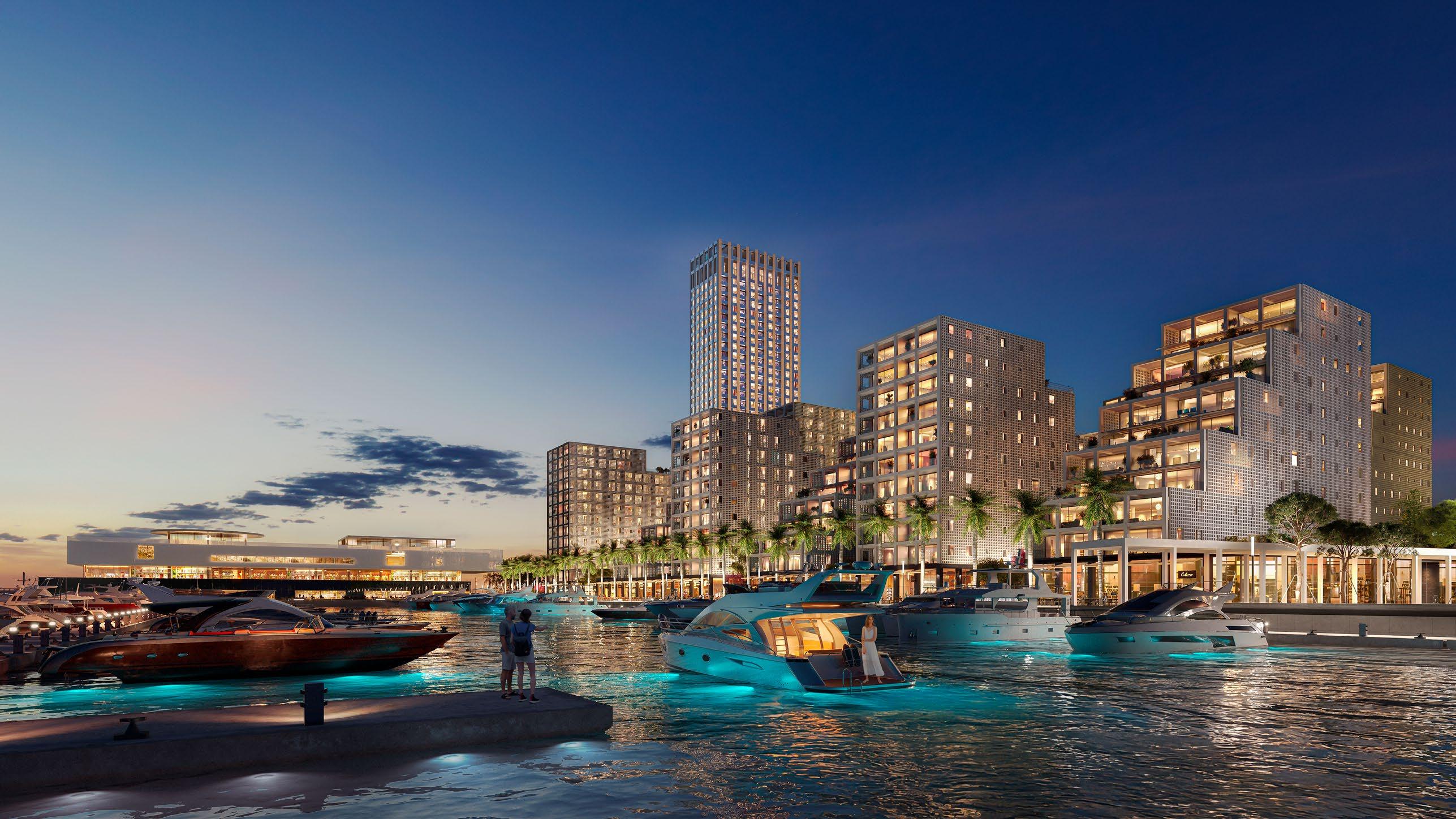




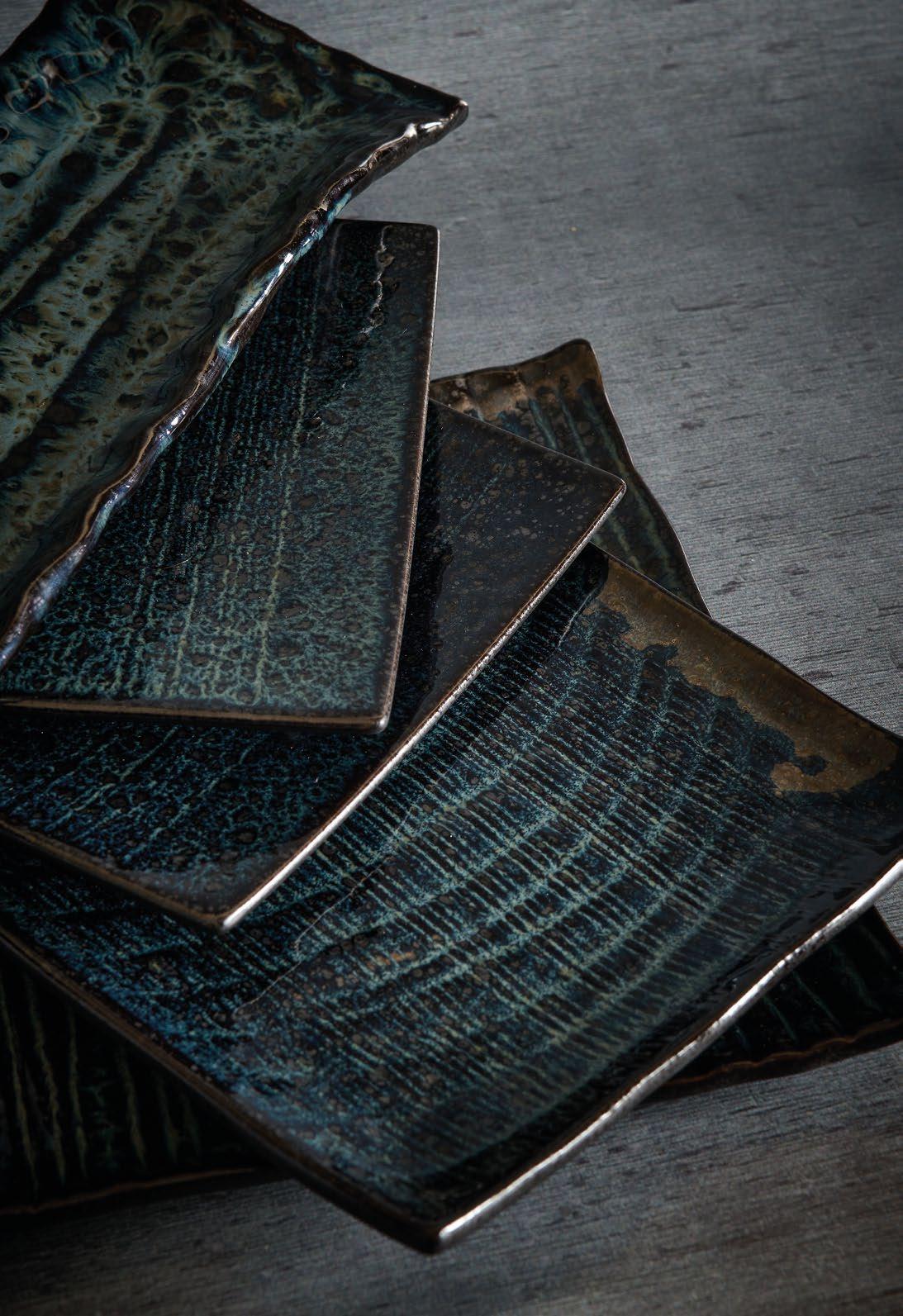





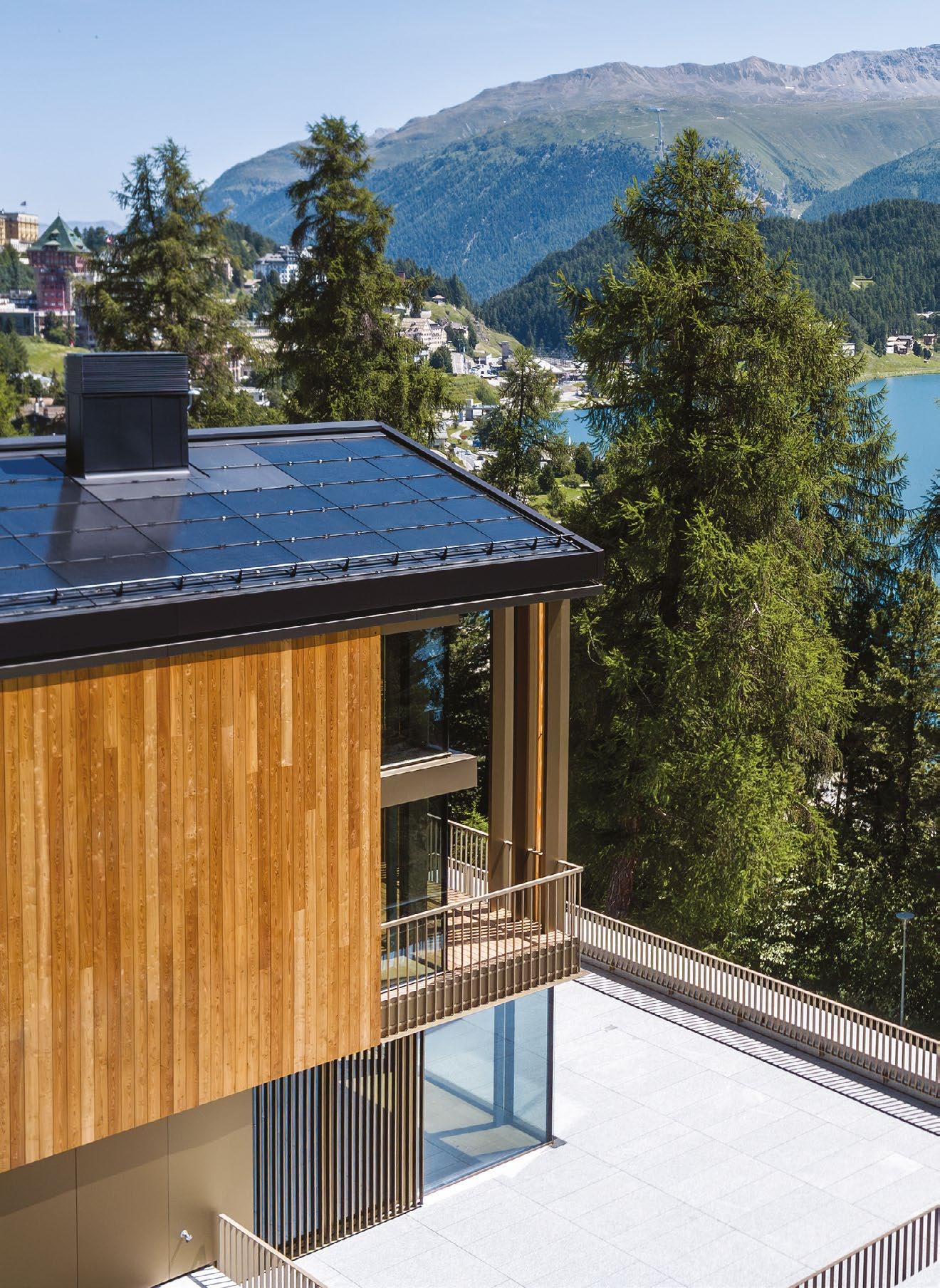
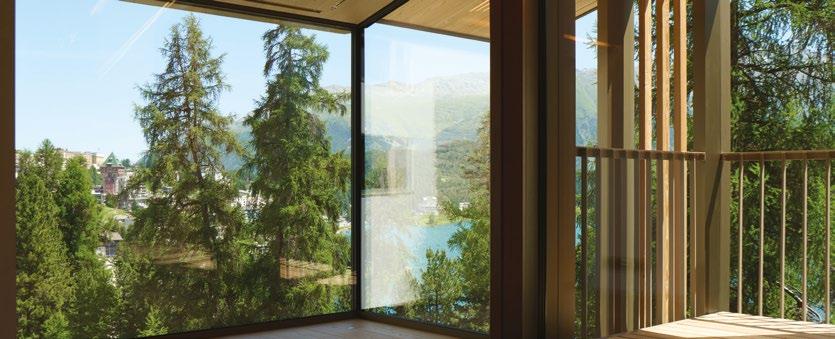
The mountains‘ stunning light casts a kaleidoscope of blue, white, orange and red into the house, creating a truly magical atmosphere. The house looks like it floats above its mirrored floor, as if it were in a cloud.
Arctic One combines modern architecture with mountain characteristics. The large glass windows allow you to fully immerse yourself in the mountains, weather and ever-changing features.











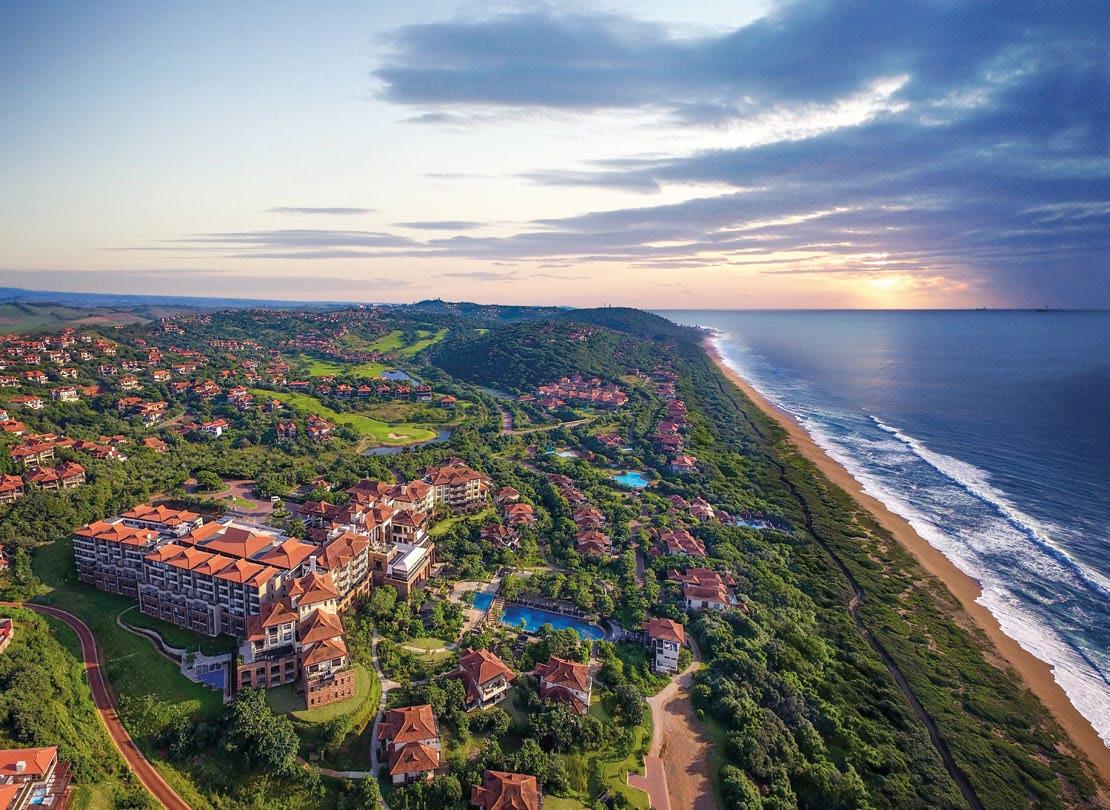
What makes a home feel meaningful? At Zimbali Estate, it’s the details: the coastal setting, the native plants, the walking trails, and the thoughtful balance between privacy and community.
In the evolving narrative of global luxury real estate, a quiet revolution is taking place–one where the most coveted addresses are no longer measured solely by opulence but by their ability to coexist with nature. On South Africa’s KwaZulu-Natal North Coast, Zimbali Estate stands as a shining example of this new paradigm of authentic luxury living, grounded in an ethos of environmental stewardship, technological innovation, and timeless lifestyle appeal.
Zimbali Estate’s natural canvas is extraordinary. Stretching over 456 hectares of pristine wetlands, rolling grasslands, natural coastal forest, and dramatic beachfront, the estate is defined by its connection to distinct ecosystems in its forest, ocean, and golf course areas. From its inception, Zimbali Estate was envisioned as a sanctuary where


residents live in harmonious coexistence with nature, and where conservation isn’t just a concept but a living practice.
Wandering through its lush green belts and along its protected dunes, one quickly understands why it was named “Zimbali”, meaning “valley of flowers” in isiZulu. Over 400 indigenous flowering species punctuate the landscape, creating corridors of biodiversity that are as visually captivating as they are ecologically vital. African Fish Eagles soar high above, and the startled call of the Southern Reedbuck echoes softly through restored grasslands. This is not simply residential living; it is a conscious immersion into a thriving ecosystem.
While nature takes centre stage, innovation operates seamlessly behind the scenes. Zimbali Estate is underpinned by one of the most sophisticated residential estate security infrastructures in the country. Advanced biometric access controls, perimeter surveillance, and AI-enhanced monitoring systems ensure peace of mind for residents. This commitment to security extends beyond physical measures. It’s about safeguarding a way of life that values privacy, tranquillity, and exclusivity.
Location remains the golden rule in real estate, and Zimbali Estate occupies an enviable position within South Africa’s most dynamic growth corridor. The North Coast’s rise as a premium destination is underscored
CLOCKWISE FROM OPPOSITE, TOP Zimbali Estate is nestled between forest, grassland, and sea on South Africa’s picturesque North Coast; Zimbali Estate is a haven for diverse fauna, allowing creatures like the Bushbuck to roam safely and freely throughout its natural landscapes; the luxe residences at Zimbali Estate are graceful extensions of nature, crafted to invite light, air, and the beauty of the outdoors in; amid South Africa’s most biodiverse coastline, Zimbali Estate shows how sustainability and design can work in step.
by its proximity to King Shaka International Airport, the burgeoning lifestyle hub of Ballito, and a host of exclusive leisure destinations. Within a mere two-hour drive, residents can transition from ocean views to Big Five game reserves, or the dramatic peaks of the Drakensberg. Further elevating its desirability, a new Club Med resort is set to open nearby, cementing the region’s status on the international luxury travel map.
Yet Zimbali Estate’s true investment value lies beyond geography. In a world increasingly defined by climate resilience and conscious living, properties that integrate sustainability with sophistication are poised to grow in worth. As discerning buyers seek secure, wellness-focused environments, Zimbali Estate is an investment in place and purpose, mirroring a global trend in the world’s most exclusive coastal communities, where nature, privacy, and architectural harmony underpin enduring value.
This international context highlights the estate’s standing not only as a sanctuary of coastal living but also as a sound long-term investment. Here, lifestyle and investment potential are inextricably linked, reinforced by a commitment to preserving the very landscapes that make such destinations so sought-after.
Zimbali Estate’s environmental initiatives read like a blueprint for the eco-estate of the future. Over the past year alone, more than 33,000 indigenous plants have been introduced as strategic tools for rehabilitation, biodiversity enhancement, and climate resilience. Grasslands are meticulously restored through controlled burns and reseeding. Wetlands are protected to safeguard endangered species like the Pickersgill’s Reed Frog. Even green waste finds new life, processed into compost and mulch at the estate’s nursery, closing the loop on sustainability.
Carefully designed eco-passages create wildlife crossings that link habitats fragmented by development, allowing creatures as small as frogs and as elusive as the Blue Duiker to roam safely. These thoughtful interventions are complemented by educational trails, citizen science programmes, and live-streamed African Crowned Eagle nest cameras, transforming everyday life at Zimbali Estate into a deeper engagement with nature’s rhythms.

Residents are not merely passive beneficiaries of these initiatives. They actively participate through guided nature walks, bird counts, and educational programmes designed to foster a deeper understanding of the ecosystems around them. This sense of shared custodianship strengthens the community’s connection, enriching daily life with a sense of purpose and belonging.
The estate’s offerings extend far beyond its ecological credentials, curating a lifestyle that appeals to both the active and contemplative. Residents enjoy an extraordinary suite of facilities that redefine what it means to live well in harmony with nature. Championship golf unfolds alongside protected wetlands, where fairways weave through forest and grassland, creating a playing experience enveloped in biodiversity. Padel, squash, and tennis courts offer modern athletic pursuits, while catch-and-release fishing, basketball, and a collection of swimming pools cater to every age and interest. Miles of walking and cycling trails meander through shaded forest paths and open coastal dunes, inviting daily exploration at a gentler pace. »

« For families, Zimbali Estate provides an idyllic environment where children can roam safely within secure boundaries, discovering nature trails, enjoying world-class sporting facilities, or participating in estate-led conservation initiatives that foster curiosity and respect for the natural world. Wellness is equally prioritised, with serene walking paths, cycling routes, and spa facilities complementing the active outdoor lifestyle.
For culinary enthusiasts, the estate’s dining options range from relaxed cafés to elegant restaurants that champion seasonal, locally sourced produce. Whether
BELOW

it’s sunrise yoga, a round of golf at dusk, or a sunset dinner overlooking the ocean, every experience within Zimbali Estate is shaped by a philosophy of harmony and understated sophistication.
The estate’s architecture blends effortlessly with its surroundings. Neutral tones and natural materials echo the forest palette, while expansive terraces open onto endless green spaces. Homes here are graceful extensions of nature, crafted to invite light, air, and the beauty of the outdoors in, offering spaces where wellbeing and refined living converge.
Across all of its facets, Zimbali Estate embodies a vision of luxury that looks firmly to the future. It proves that high-end living and true prestige are found in connection with nature, community, and a more meaningful way of life. In an era where discerning buyers see authenticity, wellbeing, and security alongside exclusivity, the estate offers a rare and holistic answer.
Here, luxury and nature exist in perfect balance. In quiet mornings, when the hush of the ocean meets the rustle of the forest. In communities shaped by mindfulness and in homes that breathe with light, air, and space, nurturing both body and spirit. At Zimbali Estate, residents rediscover not only authentic living but also the art of living well. More than a place to reside, it is a place to belong—to the natural environment, to a like-minded community, and to a future where luxury and sustainability walk hand in hand, creating a legacy of value for generations to come.


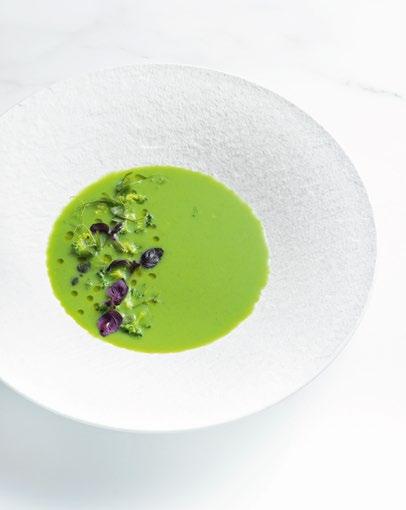
park-igls.at – the place to be
As North America’s first major alpine resort in over four decades takes shape in Park City, Sheila Hall of Summit Sotheby’s International Realty unpacks how Deer Valley East Village is pioneering a new era for luxury mountain living.
TELL US ABOUT THE NEW DEER VALLEY EAST VILLAGE AND THE OVERALL EXPANSION PROJECT…
Deer Valley East Village is a huge deal for the continent. Not only is Deer Valley East Village the first major public alpine ski resort to be developed in North America in over 40 years, but once complete, it will nearly triple the size of the Deer Valley Resort, provide a new and convenient gateway to 3,700 acres of expanded ski terrain, and will be one of the largest ski resorts in North America. Once complete, the development will encompass eight destination hotels with an assortment of private residences, many of which have already sold, 1,200 new parking spaces, 16 new chair lifts, a 10-passenger gondola, an abundance of amenities as well as many year-round attractions including fine dining, shopping, entertainment, an array of recreational activities, a children’s centre, ski services, and so much more.
In terms of properties, luxury brands are making their debut in Utah at our development. We launched residences at Grand Hyatt Deer Valley last year, and those 55 residences were all sold out by last summer, prior to the completion of construction. It was the first property completed within Deer Valley East Village, and hotel guests and residents are now fully enjoying it. It offers approximately 400 luxury accommodations, including 100 discounted rooms reserved nightly for our country’s service members.
It was also recently announced that Four Seasons Resort and Private Residences will be making its mark within Deer Valley East Village, and the condos in that property are also selling rapidly. Deer Valley East Village will also welcome a new development called Cormont, which stands for Core of the Mountain. Cormont is one of the newest luxury residential condo offerings in the East Village, and will


have roughly 350 furnished units with pricing ranging from $1.7 million to $7.5 million. Complementing that is Marcella Landing at Deer Valley, a private ski-in/ski-out community composed of 50 luxury townhomes up to 5,000 square feet, access to The Landing clubhouse and Marcella Lodge, and member-only amenities designed by Olson Kundig. It is the only Marcella product allowing nightly rentals.
In late December 2024, The Residences at Pioche Village introduced a new collection of studios, one-bedroom, and two-bedroom condominiums to the market, and is located directly adjacent to the existing Jordanelle Express Gondola, offering seamless access to Deer Valley Resort. In terms of hotels, a Canopy by Hilton will also be joining the area, with 180 rooms set to open next summer, ahead of the ski season. The hotel will be themed around the region’s evolution from a historic silver mining area to a world-class ski destination. We also plan to announce more exciting brands and residences soon.
FROM YOUR PERSPECTIVE, WHAT MAKES NOW THE RIGHT TIME—AND PARK CITY THE RIGHT PLACE—FOR A PROJECT OF THIS SCALE AND AMBITION?
Park City has always been one of the best ski destinations in the world, and North America hasn’t seen a ski resort expansion of this magnitude in a very long time. When Gary Barnett, the Chairman and Founder of Extell Development Company, had the opportunity to purchase land on the eastern slope adjacent to Deer Valley’s already existing terrain, it was a no brainer for him in that he knew he could build a magnificent and unique resort right next to one of the
ABOVE The 400-key Grand Hyatt Deer Valley is the first property to be completed in Deer Valley East Village.
BELOW Bedroom at the Four Seasons Resort and Private Residences Deer Valley.
world’s best ski resorts. From there, Extell began installing infrastructure, and soon after, Deer Valley partnered with Extell to fully integrate Deer Valley Resort and the new ski terrain, ultimately nearly tripling the size of the ski area. Park City has always been a major attraction for tourists and locals alike. Our new village is only 40 minutes from Salt Lake City International Airport as well as several private airports, including Provo Airport and Heber Valley Airport, and is extremely accessible for visitors as well as those who own secondary homes here. With Park City already being a prime travel destination for skiers and Extell obtaining all this new land, it was the right time to build a new resort here, especially alongside Deer Valley. »

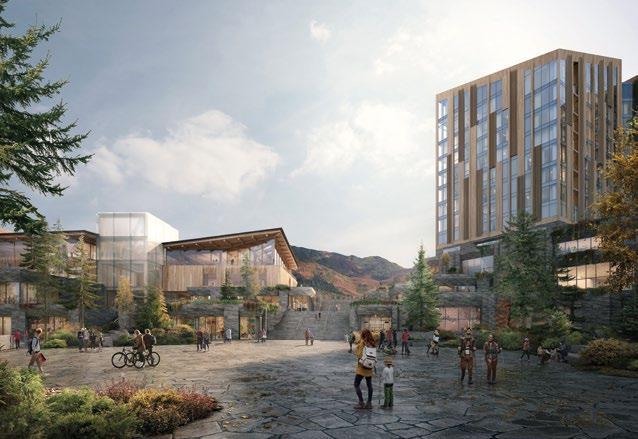
FOUR SEASONS DEER VALLEY IS ONE OF THE DEVELOPMENT’S MOST TALKED-ABOUT ELEMENTS. WHAT DOES THE FOUR SEASONS BRAND BRING TO THE DESTINATION, AND HOW HAS IT SHAPED INTERNATIONAL INTEREST?
Four Seasons is known around the world as one of the top brands in the residential branded living space, and the Deer Valley location will be no different. Four Seasons Resort and Private Residences Deer Valley will offer guests and residents a seamless mountain experience and exceptional culinary expertise, featuring four dining options, including a ski-in/ski-out lounge complete with an outdoor terrace and fireplace, creating an idyllic setting for après-ski or spa relaxation. Once construction is complete, there will be two towers: one with 134 guest rooms and 55 private residences situated above the resort, all with ski-in/ ski-out mountain access, and an adjacent building with 68 owner-exclusive condominium residences. Ranging from 1,200 to 7,000 square feet, the one- to six-bed private homes will be fully serviced and have access to resident-exclusive amenities ideally suited for a yearround mountain experience, including proximity to over 50 miles (80 kilometres) of hiking and biking trails, an ice rink, an indoor sports court, and indoor and outdoor pools with expansive views, cabanas, and so much more. We’re seeing a lot of interest in Deer Valley East Village from all over the world, particularly due to the Four Seasons brand, which is generating interest in markets we’ve never seen before. We’ve had buyers from Mexico City, Central America, China, Malaysia, and more, who are interested in learning more about Deer Valley East Village specifically because they’ve heard that their favourite brand, Four Seasons, is opening here.
DEER
VALLEY EAST VILLAGE AIMS TO
BE A
YEARROUND DESTINATION.
WHAT KIND
OF ACTIVITIES WILL RESIDENTS AND GUESTS BE ABLE TO ENJOY THROUGHOUT THE SEASONS?
Deer Valley East Village will feature eight hotels, along with 32 restaurants and cafés, and 42 curated shops
ranging from farm-to-table markets to high-end fashion. The expansion also includes new ski runs and chairlifts, offering a major enhancement to Deer Valley’s skiable terrain. A new ski beach, après-ski scene, and thoughtfully designed plazas will create a vibrant, walkable destination for visitors throughout the year.
ABOVE Guests of the Four Seasons Resort and Private Residences Deer Valley will
have access to an abundance of amenities including indoor and outdoor sport and relaxation areas.
BELOW The Spa at the Four Seasons Resort and Private Residences Deer Valley will offer incredible views of the surrounding mountains.
During the summertime, Deer Valley East Village offers a wide range of activities that go beyond skiing. Residents and visitors alike can enjoy world-class golf, and Marcella townhome owners can enjoy exclusive access to Skyline, the first mountain course by Tiger Woods’ TGR Design. There are also ten additional golf courses nearby. There are hundreds of miles of scenic hiking and biking trails with breathtaking views of the surrounding mountains. For water lovers, the Jordanelle Reservoir is just minutes from the village and has paddleboarding, kayaking, boating, jet skiing, and fly fishing, along with relaxing resort-style pools. Residents can also enjoy paddle, pickleball, and horseback riding. Deer Valley East Village will also offer outdoor movie screenings, yoga on the terrace, farmer’s markets, and an outdoor summer music festival. There’s always something for everyone to enjoy, no matter what season, in Park City.
WITH SUCH A LARGE INTERNATIONAL AUDIENCE NOW LOOKING TO PARK CITY, WHAT DO YOU THINK RESONATES MOST WITH THESE OVERSEAS BUYERS?
International buyers are drawn to all that Deer Valley East Village has to offer, from the unmatched natural beauty to all the seasonal activities, the services and the design. The seamless access to outdoor adventure and luxury hospitality really resonates with buyers. And the brand loyalty from international audiences certainly doesn’t hurt. Whether it’s the world-renowned Deer Valley brand, the Extell and Reef brands as one of the world’s most famous real estate developers, or the Four Seasons brand, buyers like purchasing with brands that they’re comfortable with and feel secure with the luxury and lifestyle that they can expect with their home purchase, and that’s definitely something that we’ve seen here as well.
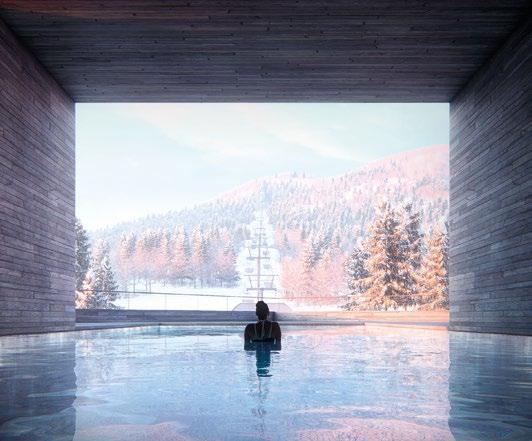



Fine2Dine’s vision is simple yet inspiring: to support creative chefs and provide them with the tools to turn every dish into a story worth telling.
At The Grand Hotel Krasnapolsky in Amsterdam, beneath the chandeliers and soft buzz of the city, something remarkable unfolded on May 26, 2025. The occasion?
The 10 Years Festival of The White Room—a gathering that pulled together 18 of the world’s most respected chefs, representing 36 Michelin stars across eight countries. But beyond the chefs, beyond the flavours, and even beyond the spectacle of a 180kg tuna being carved live, it was a story about presentation—and the power of a well-chosen plate.
Fine2Dine’s White Dusk collection took centre stage, proving once again that the right tableware doesn’t just support a dish, it transforms it. Minimalist, Asianinspired, and finished in a soft matte white, White Dusk was the chosen canvas for more than 7,000 plates served throughout the evening—from delicate foie gras with papaya and tom kha, to duck liver topped with lobster foam
and Thai vinaigrette. This wasn’t just a culinary showcase; it was a live exhibition of plate-as-palette, where every ingredient, sauce, and garnish was placed with purpose. »
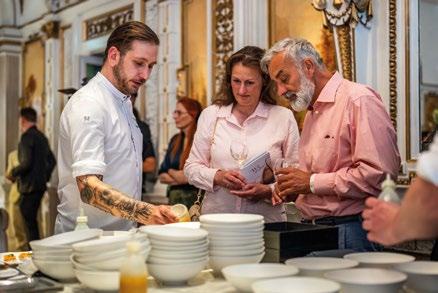
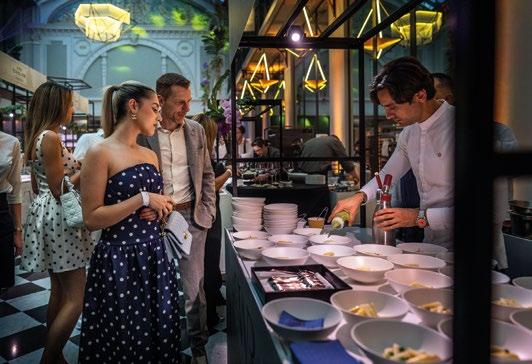
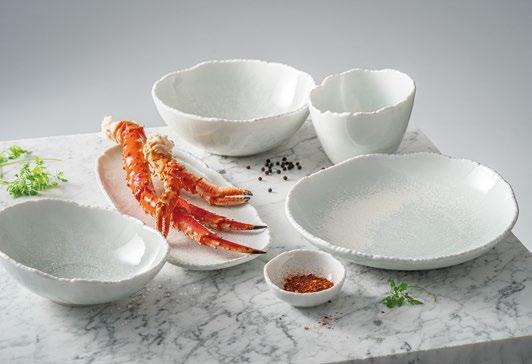
« And that’s the ethos at the core of Fine2Dine. The brand exists to inspire creativity—to support chefs who treat food not only as nourishment but as artistic expression. Events like this bring that vision to life. The 10 Years Festival wasn’t about just feeding people; it was about captivating them with every detail, from bold flavour to visual intrigue. In that setting, Fine2Dine’s plates did more than carry food—they framed it, turning it into an edible work of art.
Of course, White Dusk wasn’t chosen by accident. Designed with contemporary plating in mind, its clean lines and soft matte finish enhance contrast, making colours pop and textures shine. It doesn’t distract—it elevates. And when you have names like Heinz Beck, Tanja Grandits, Benoît Carcenat, and Peter Hagen plating dishes side by side, that’s exactly what’s needed: a unified base that still allows each dish to speak for itself.
But Fine2Dine’s commitment to the creative chef doesn’t stop with White Dusk. Collections like Calca, Filo White, Umi, and the latest release, Bloom, also reflect the brand’s design-forward approach to fine dining. Calca is all sculptural curves and earthy tones—ideal for seasonal, ingredient-led menus. Filo White offers a crisp, architectural edge to modern plating, while Umi, with its soft reactive glaze and organic shapes, nods to nature and Japanese simplicity. Bloom is crafted from E-Bone—an ecological, economical, and ethical material that mimics
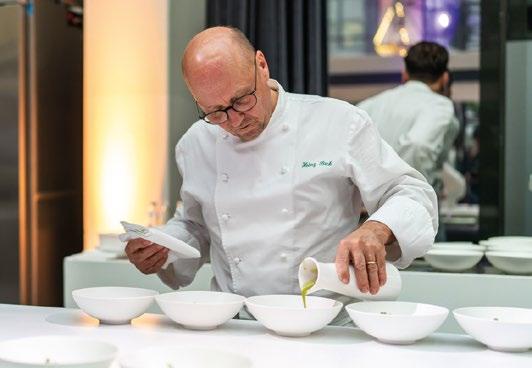
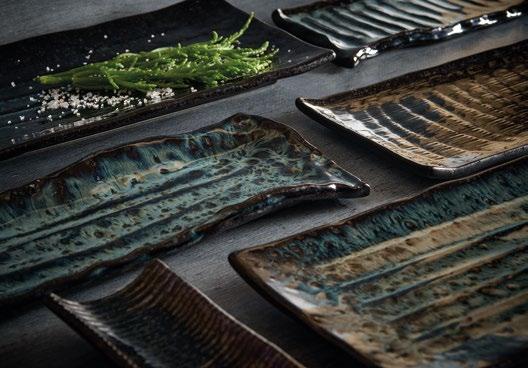
ABOVE, CLOCKWISE FROM TOP LEFT Fine2Dine’s White Dusk collection was used to plate over 7,000 dishes at the festival; Heinz Beck on the pass at the festival; Fine2Dine’s Umi collection; Fine 2 Dine’s Filo White collection.
BELOW Fine 2 Dine’s newest collection, Bloom, crafted from E-Bone—an ecological, economical, and ethical material that mimics bone china.
the look of bone china but is manufactured entirely from natural ingredients, making the pieces exceptionally light yet strong. Each collection is distinct but all are made to work in harmony—a testament to Fine2Dine’s understanding of the high-end kitchen’s evolving needs. That’s what makes seeing Fine2Dine plates in real restaurant settings so powerful. This isn’t showroom tableware. It’s been chosen by chefs who know what works under pressure, in service, and under scrutiny. From back-of-house to table-side, the brand is woven into the process—a highly reliable and functional asset in any restaurant.
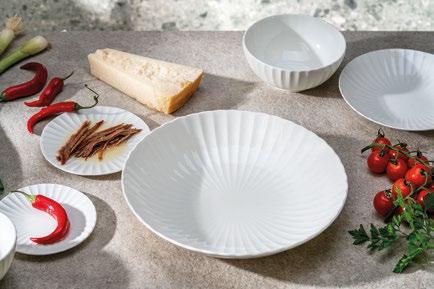

www.bormioliluigi.com/glassware

At Lauret Studio, silverware is more than functional—it’s a meeting point between artistry, heritage, and thoughtful design. From its latest cutlery collections to bespoke accessories, this highly specialised French atelier continues to prove that the most enduring pieces are those made with intention.
Since its founding in 2009, Lauret Studio has steadily grown into one of the most respected names in the world of contemporary silverware. Operating from the green swathes of the Vexin countryside just outside Paris, this orfèvrerie—“silverware by authors”—is a rare jewel in a sector that too often trades artistic integrity for mass production. Here, every object is more than a utensil or accessory; it is a sculptural statement, a cultural artefact, and a celebration of the finest French savoir-faire.
Leading the charge is Christine Lauret, the studio’s founder and director, who makes no secret of her values. “It seems to me essential to pledge in favour of creativity,” she explains. “To offer products very far from overconsumption, of the disposable. High range, durable products, with a strong identity. Products with a heart.” A commitment to making things well and making them last has defined the
studio’s approach from the beginning, and this philosophy permeates every aspect of the brand—from the poetic elegance of its limited-edition pieces to the deeply collaborative process that unites designer, artisan, and end client.
The ingenious mind responsible for the atelier’s creative output is Richard Lauret, artist-designer and the original spirit behind the brand. His work is informed by a profound sensitivity to silver as more than a material but a medium for form and feeling, qualities shared by his fellow sculptors, Christian Jaccard and Jean-Charles Maïna, who also contribute their artistic genius to the silverware designs. Together, they chart a singular course for Lauret Studio, where the boundaries between utility, symbolism, and art dissolve. Their designs are shaped not just by function but by a shared curiosity for structure, beauty, and the space an object occupies. »

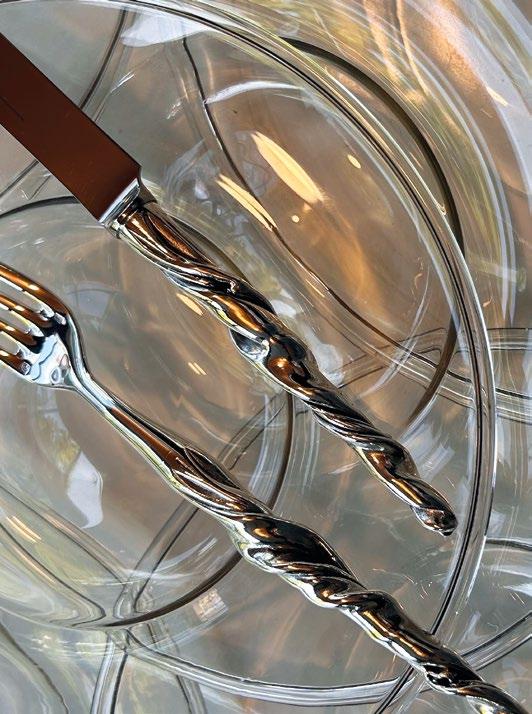
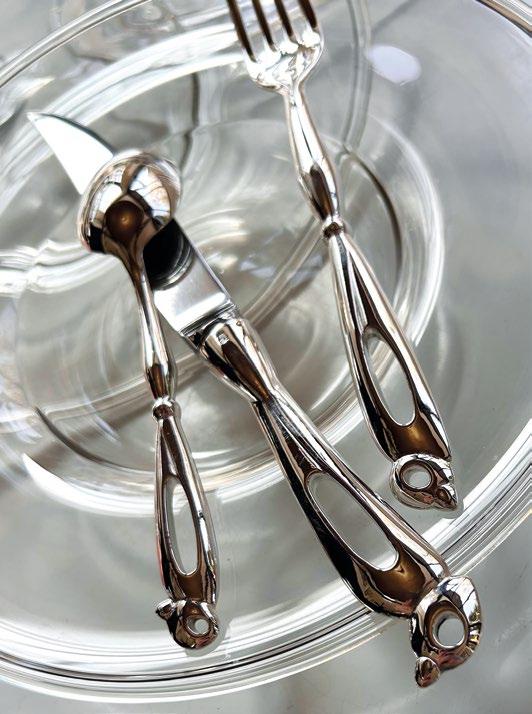
« Each piece in the catalogue, from an oyster knife to a dessert spoon, is conceived with the same reverence for detail as a one-of-a-kind art object. The studio works exclusively with French artisans, many of whom hold the prestigious EPV (Entreprise du Patrimoine Vivant) label or the title of Meilleur Ouvrier de France (MOF). These are craftsmen and women who understand material as deeply as they understand the traditions they uphold, and their precision and artistry are what allow Lauret’s designs to come to life with such fidelity.
The 2025 collection showcases the studio’s enduring devotion to innovation and imagination. Among the latest debuts are a series of striking new cutlery lines—Birdie, Eden, George, Ispahan, Meteor, Namibie, Orangerie, Phoenix, Sphinx, and Stratus—each distinct in its visual appearance yet unmistakably Lauret in spirit. Whether it’s the aerodynamic curve of Stratus or the botanical flourish of Eden, these pieces are more than variations on a theme—they are expressions of how form can echo the spirit of a table, a room, or a moment.
In parallel, the studio continues to expand its array of accessories that complement the new flatware. Dryade, a set of skewers with a gentle, branch-like silhouette inspired by the sylvan mythologies of its name, and Espadon, a whimsical knife rest rendered in the likeness of duelling swordfish, illustrate Lauret Studio’s ability to infuse even the most functional objects with wit and narrative.
Lauret Studio’s commitment to bespoke design is also central to its appeal. Almost every collection can be
customised to meet the needs of private collectors, interior designers, or chefs looking to align their tableware with a broader creative vision. This flexibility has earned the studio an ongoing presence in some of the world’s most celebrated restaurants, with custom commissions gracing the dining rooms of Yannick Alléno’s L’Abysse** at Pavillon Ledoyen, Four Seasons Hotel George V, and Limbar at Cheval Blanc Paris. Yet Lauret Studio’s ambitions reach far beyond the table. From service domes and foie gras coolers to candle holders and letter openers, the atelier’s creations support the broader rituals of living and entertaining. The Meristeme lighting collection, created in collaboration with artistic bronzer Bernard Frizza, brings together cast bronze, hand-finishing, and a nuanced approach to light and space. Meanwhile, large-format works like the Les Demoiselles de Magny candle holders and the gold-plated Lola warmer offer a sculptural counterpoint to the studio’s more functional creations.
Throughout, the constant in Lauret Studio’s collections is an unwavering dedication to craftsmanship. Pieces are silver-plated to a generous 35–42 microns and optionally finished in three-micron gold plating. Many are dishwashersafe yet never design-compromised. Each work is signed, numbered, and limited in edition—attributes that speak not only to exclusivity but also to a profound respect for the artisan’s time and touch. It is no coincidence that many of the studio’s clients describe their pieces not merely as eating tools but as heirlooms—objects with presence, soul, and permanence.



A statement for those who seek the future.
of Vision - AEON is not merely a yacht — it is a cultivated expression of futurist design: where innovation meets elegance, and form becomes experience.
With its sculptural contours and open, light-filled architecture, AEON offers a seamless dialogue between craft and horizon. The design embraces fluidity — not just in structure, but in philosophy — creating a space
that is at once refined, intuitive, and profoundly serene.
Every detail is purposeful yet understated. Technology is present, but never dominant. Luxury is redefined — not as excess, but as clarity, presence, and precision.
AEON is a statement for those who seek the future — not as spectacle, but as a quiet, enduring truth.
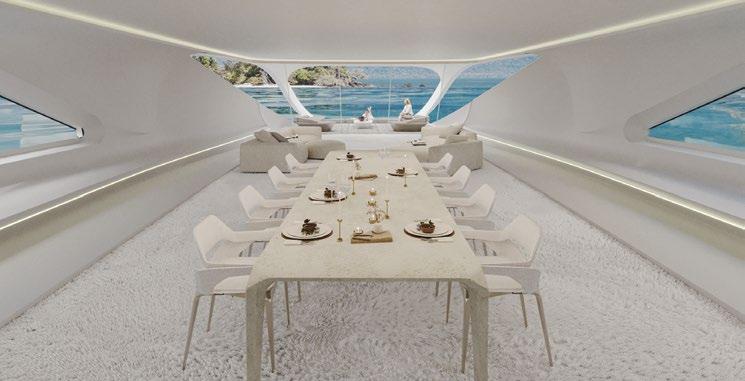

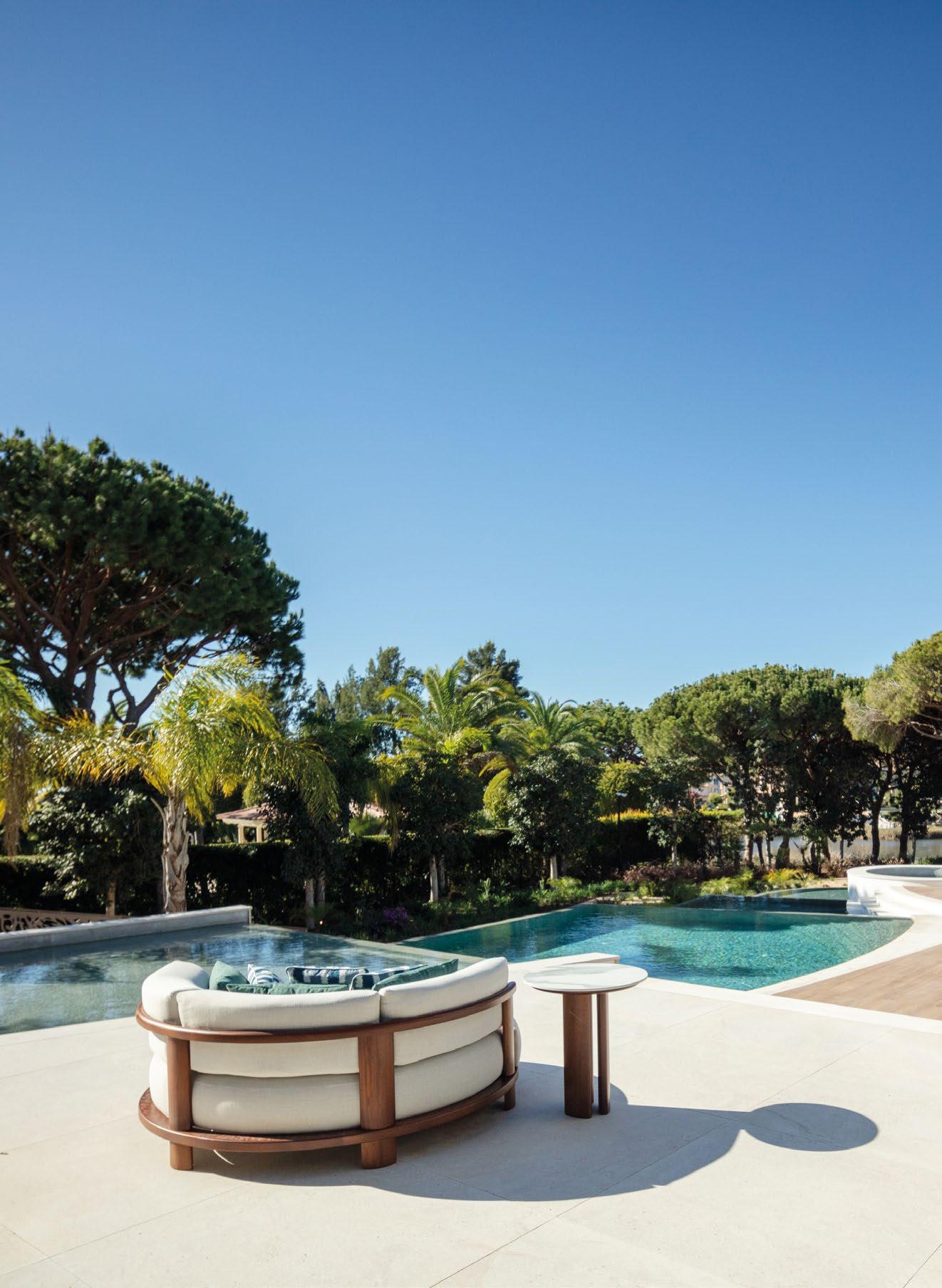
Whether you’re a designer crafting a luxurious hospitality destination or a homeowner curating your private sanctuary, Coco Wolf transforms outdoor spaces into timeless environments without compromise.

Coco Wolf is revolutionising the way we experience life outdoors. Born from a love of innovation and driven by a desire to bring the luxury of interiors outside, the brand has redefined outdoor living with handcrafted furniture that blends sculptural beauty with engineered resilience. Designed and made in Britain, each piece is built to endure the elements while elevating any space.
Coco Wolf believes outdoor furniture shouldn’t compromise on the quality of its indoor counterpart. Designs are brought to life using responsibly sourced Iroko wood and marine-grade materials. Whether gracing a coastal retreat, urban terrace, luxury resort, or
CLOCKWISE FROM OPPOSITE Coco
products are crafted from responsibly sourced Iroko wood and marine-grade materials; Coco Wolf’s furniture brings indoor luxury outdoors; comfort, beauty, and practicality guide the design of all Coco Wolf pieces; cushions are made using fade-, mildewand mould-resistant fabrics that are jet-washable for easy upkeep.
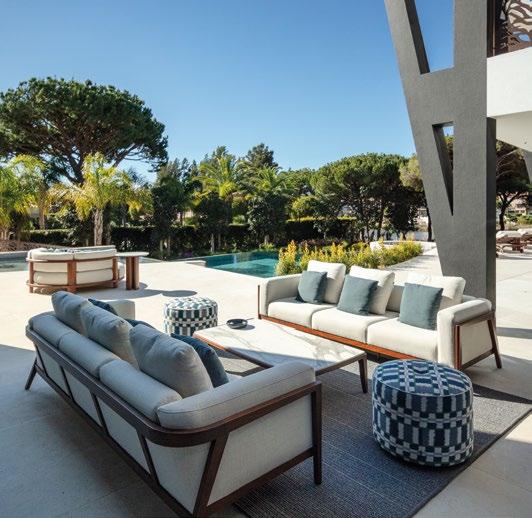
superyacht, Coco Wolf furniture is made to perform season after season.
Coco Wolf isn’t just for residential or private settings; it more than meets the demands of the hospitality sector, too, where furniture needs to look good and work hard. From fade-, mildew- and mould-resistant fabrics that are jet-washable to the naturally protective oils and dense grain of Iroko wood, every detail is engineered for ease of use and minimal maintenance. A standout design feature is the discreet magnetic cushion lock system, which keeps seat cushions firmly in place and allows for easy removal and replacement—ideal for busy hospitality settings where time and appearance are equally important. »
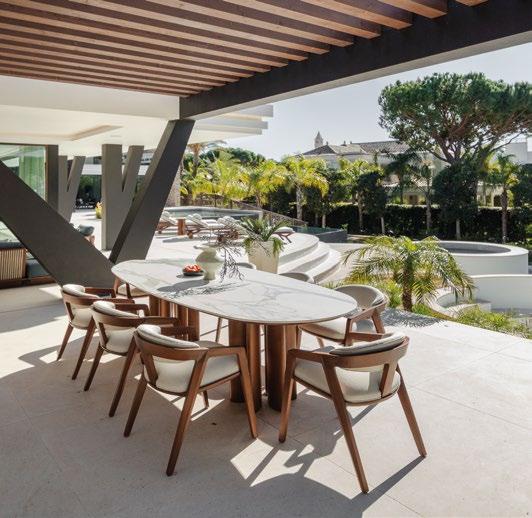
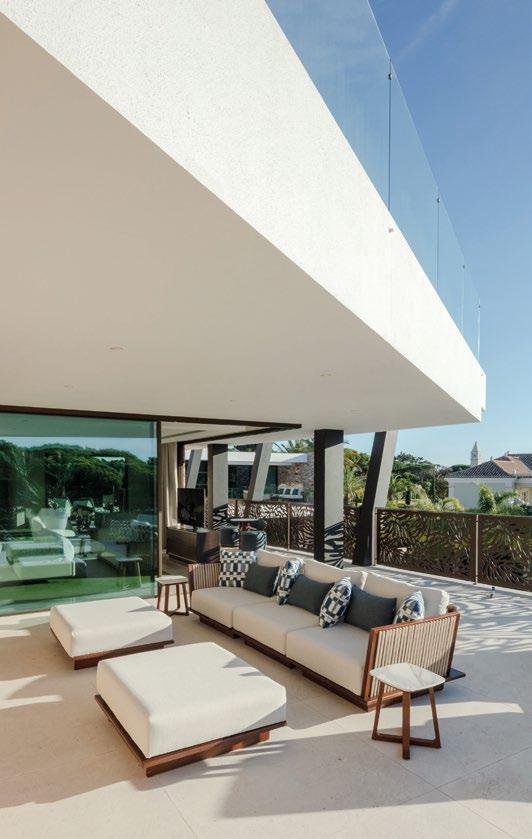
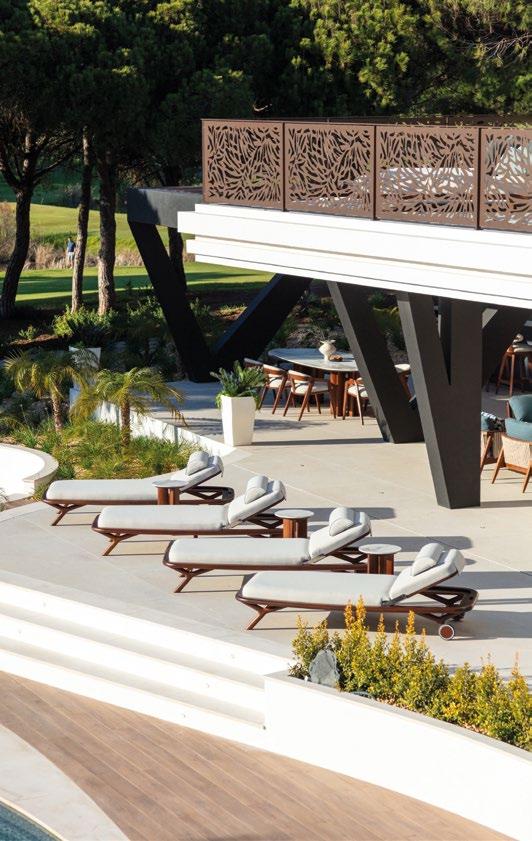
« All Coco Wolf collections are produced at the brand’s Derbyshire factory by a dedicated team of over 70 skilled craftspeople. Marrying traditional joinery techniques with modern engineering, they create furniture that is as functional as it is beautiful. Built to thrive in the harshest environments, each piece is backed by a fiveyear guarantee—a testament to the company’s unwavering commitment to lasting quality and performance.
Likewise, customisation lies at the core of the Coco Wolf experience. With 11 hand-applied lacquer finishes— each enhancing the natural beauty of Iroko while offering robust protection against the elements—clients can tailor every piece to their unique aesthetic. Further personalisation is available through a wide range of tabletop finishes, including 21 hard-wearing porcelain options, and a fabric library of over 200 upholstery choices.
This commitment to adaptability makes the brand an ideal partner for both residential and commercial projects. Whether creating a garden sanctuary or outfitting a hightraffic hotel rooftop, the brand delivers furniture that stands the test of time while enhancing its surroundings.
The newest Coco Wolf collection—Zante—is the brand’s most architecturally ambitious design. Created in collaboration with renowned Belgian designer Mathias
RIGHT
the harshest outdoor environments, all Coco Wolf products are backed by a five-year guarantee.
De Ferm, Zante is inspired by the raw luxury of Zakynthos island in Greece. The collection features expertly engineered Iroko spindles, subtly reclining backs with a four-step adjustment mechanism, and elevated stainless-steel foot bases with rubber-tipped detailing. Like all Coco Wolf pieces, it includes the signature magnetic cushion system for practical elegance. With its clean lines, rich textures, and uncompromising functionality, Zante is a masterclass in precision and presence. It’s architecture you can lounge on— refined, elevated, and built for those who value performance and design.
But Coco Wolf’s impact extends beyond beautiful craftsmanship. The company is equally committed to sustainable practices that respect the planet. All timber is responsibly sourced from managed forests, while offcuts from production are reused or recycled. Renewable energy powers its operations, and remnants of fabric, foam, leather, paper, plastic, and steel are carefully collected for responsible recycling.
This holistic approach to sustainability, design, and performance has cemented Coco Wolf’s place as a leader in the world of outdoor living. It’s a brand for those who value thoughtful craftsmanship, long-lasting quality, and the freedom to live beautifully, rain or shine.


